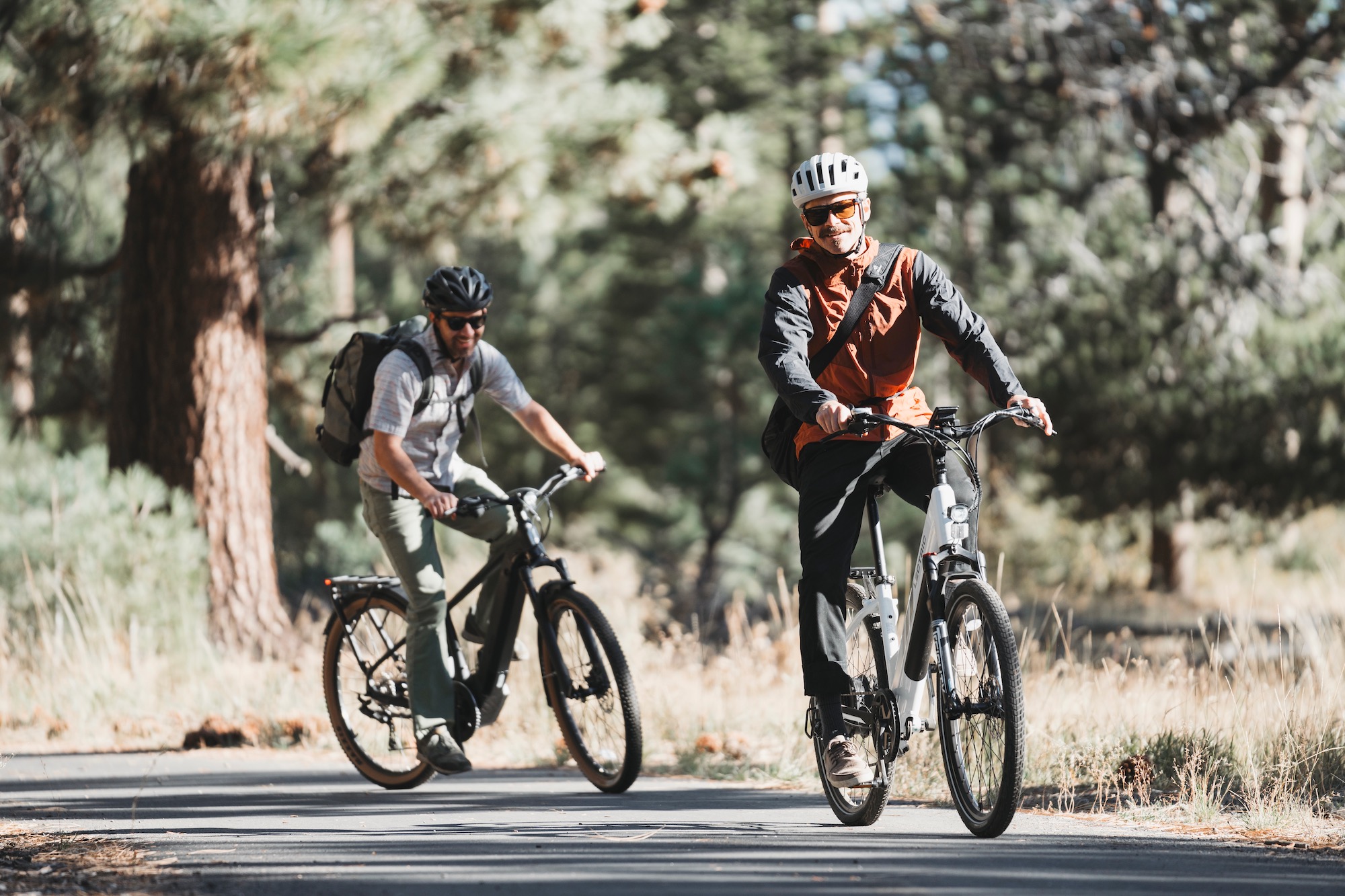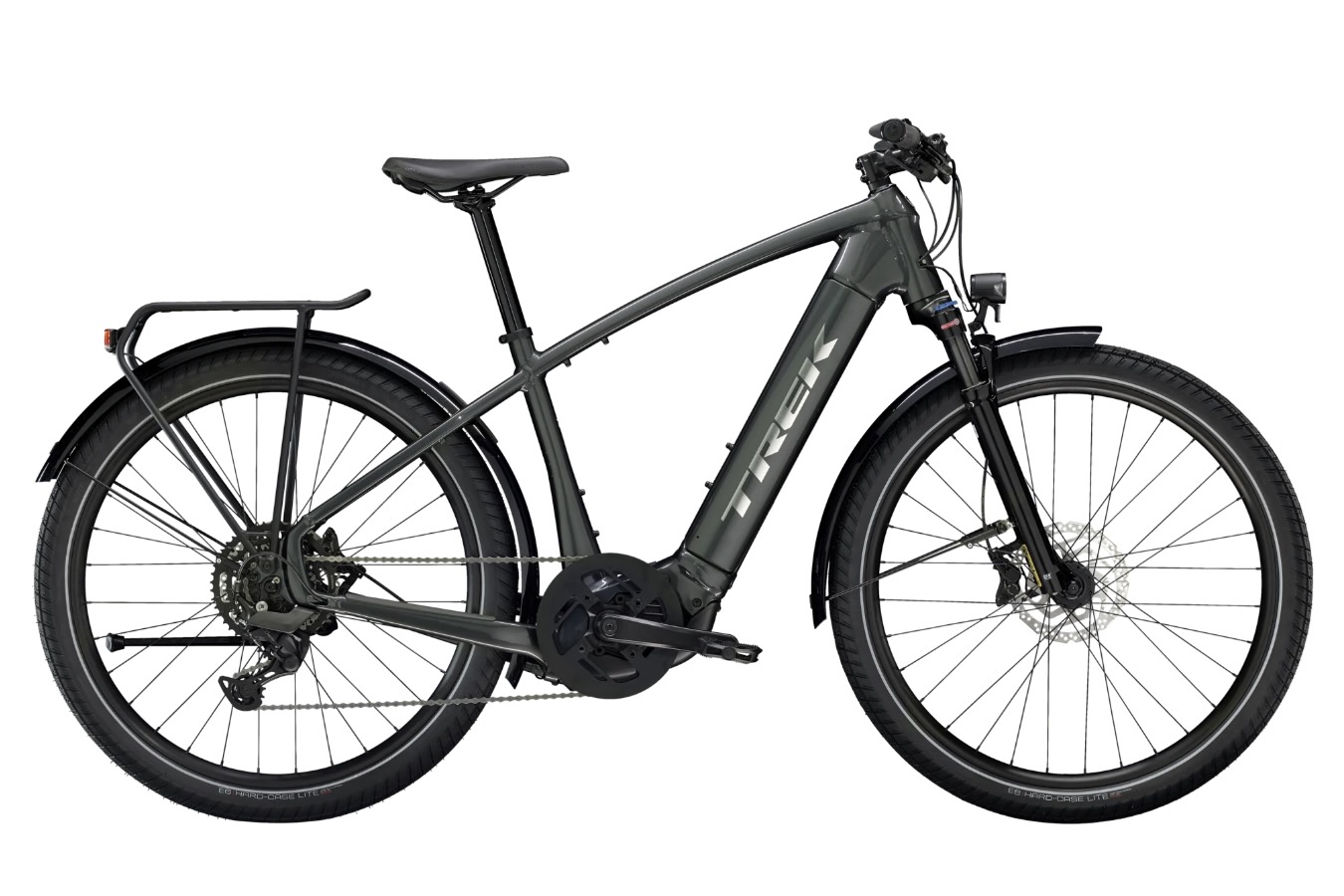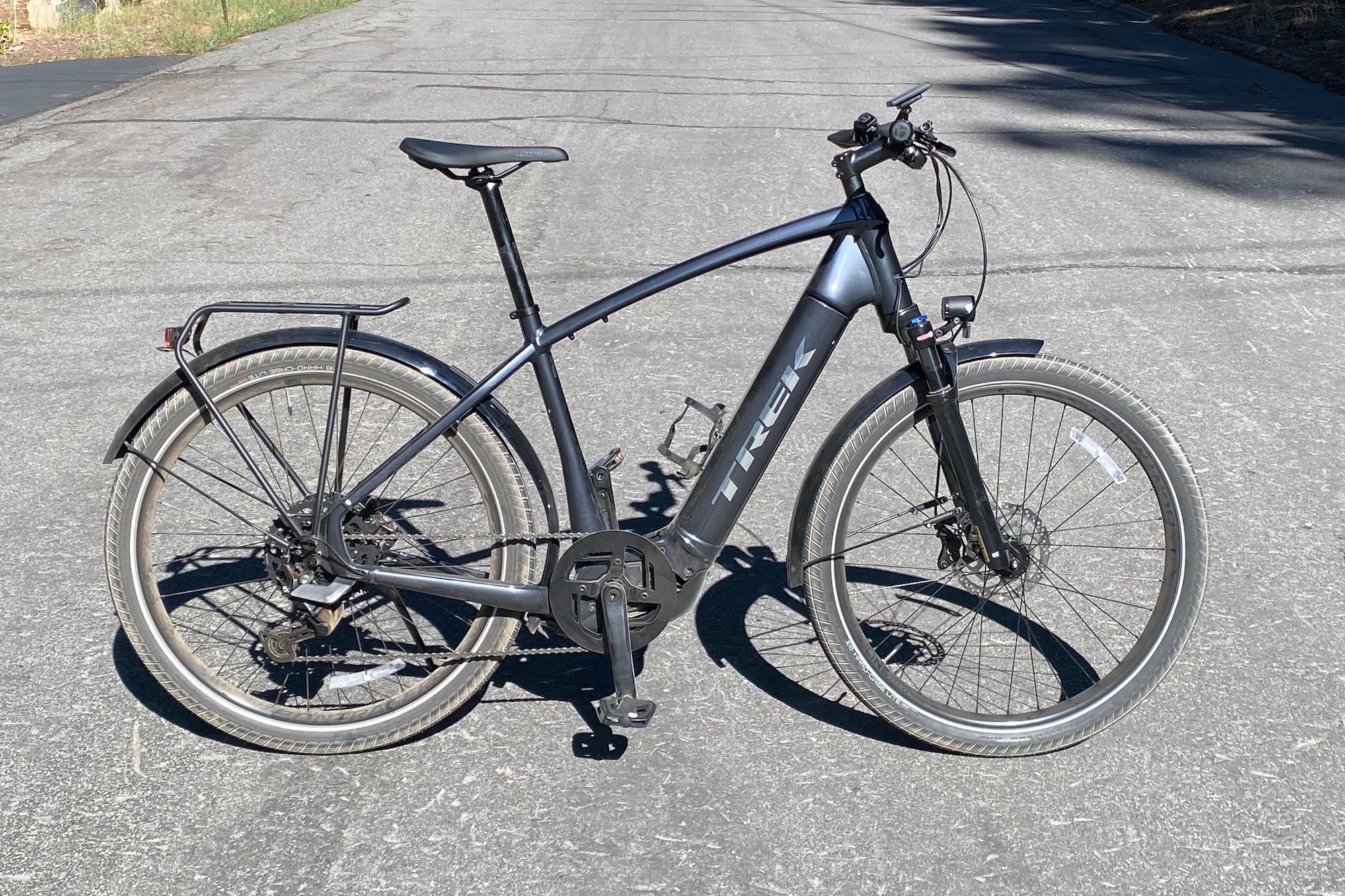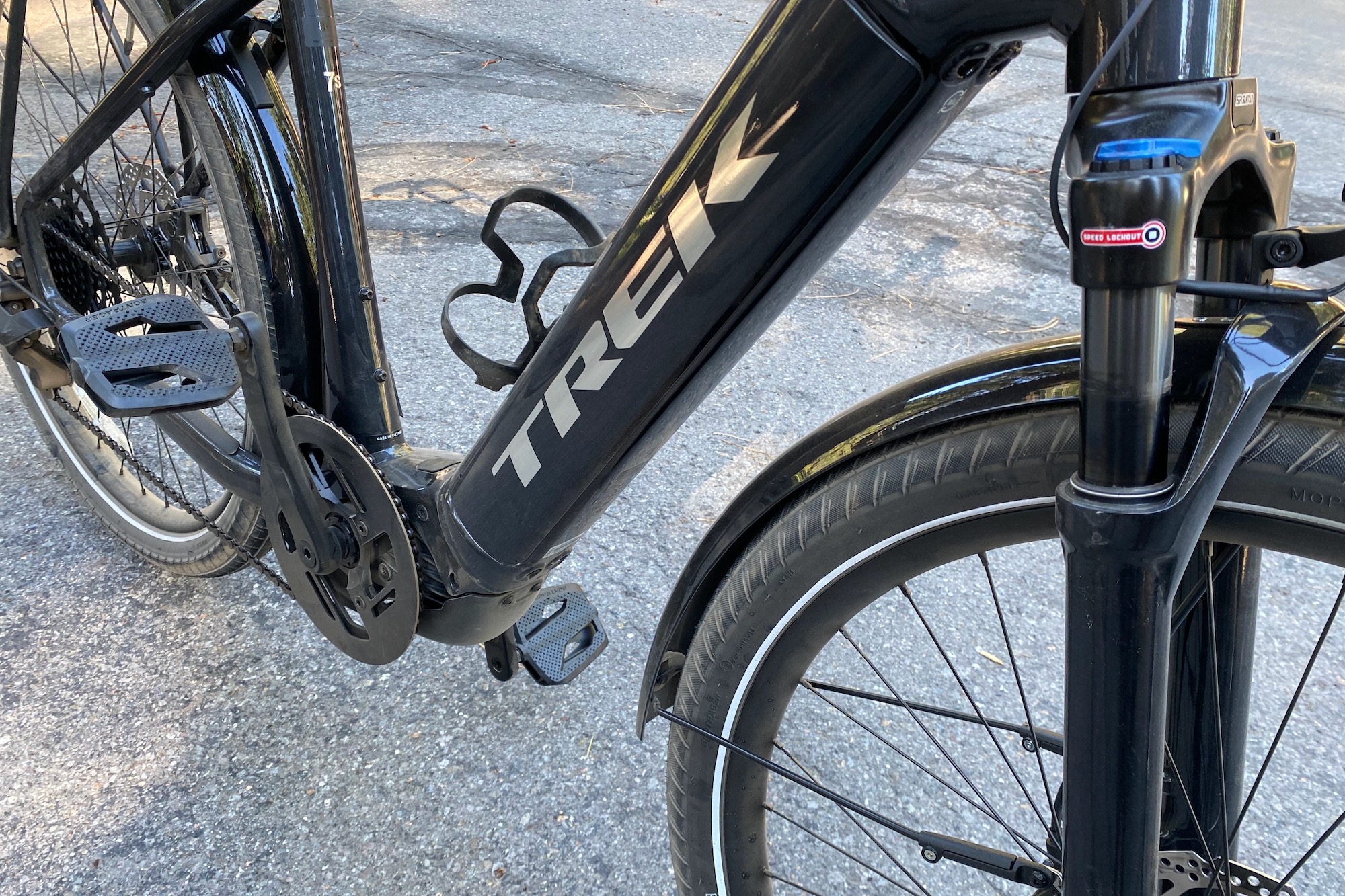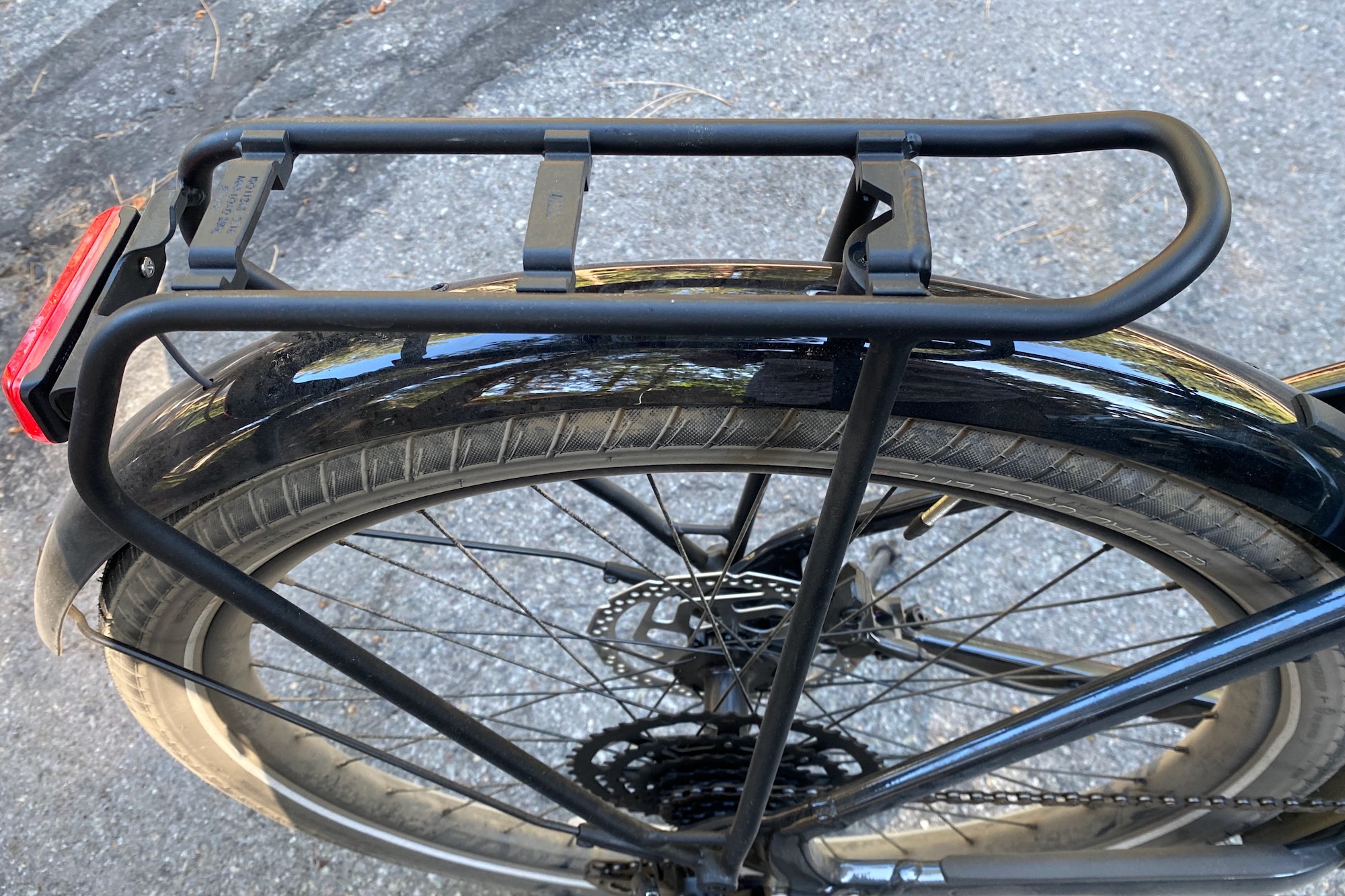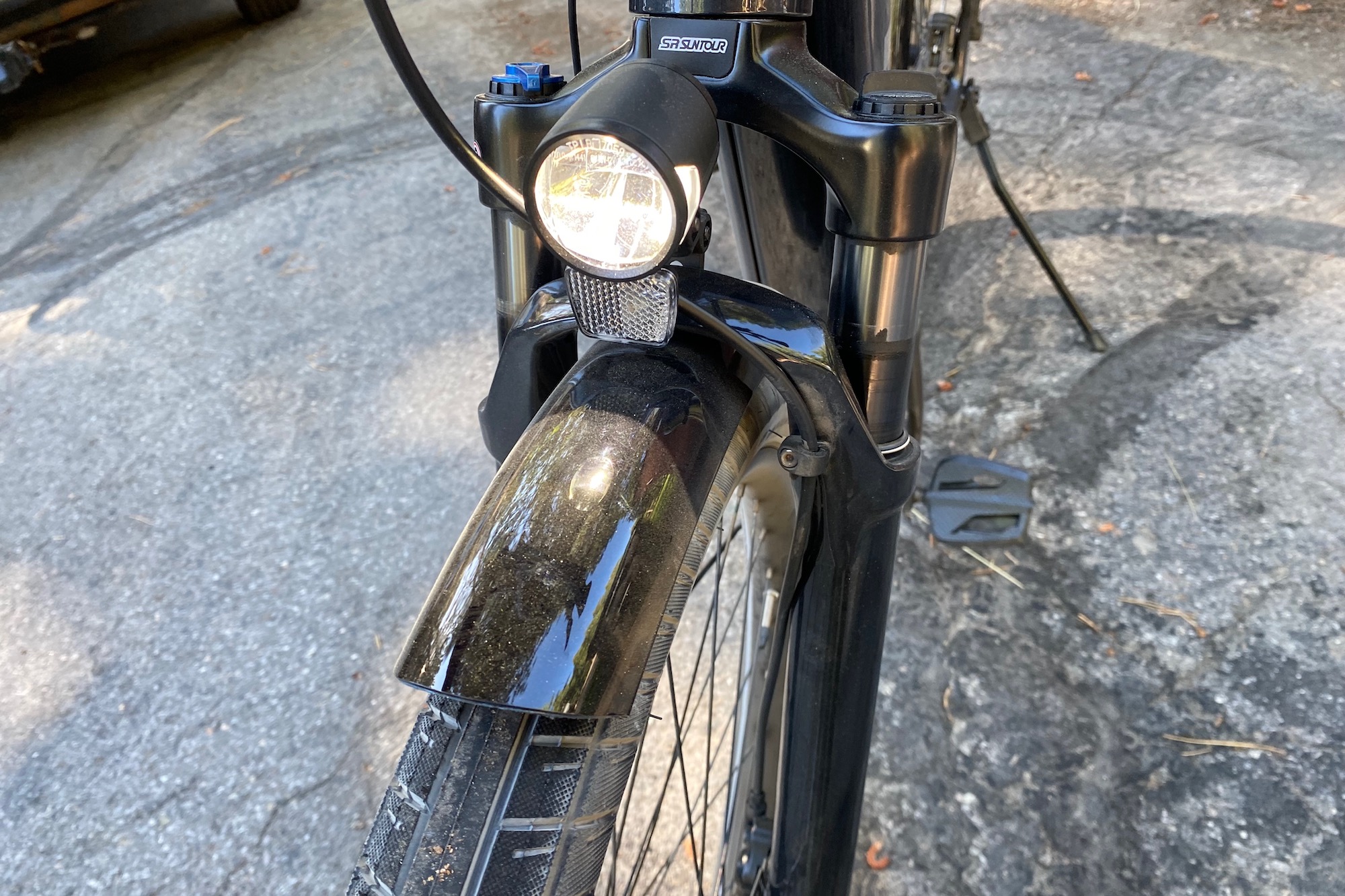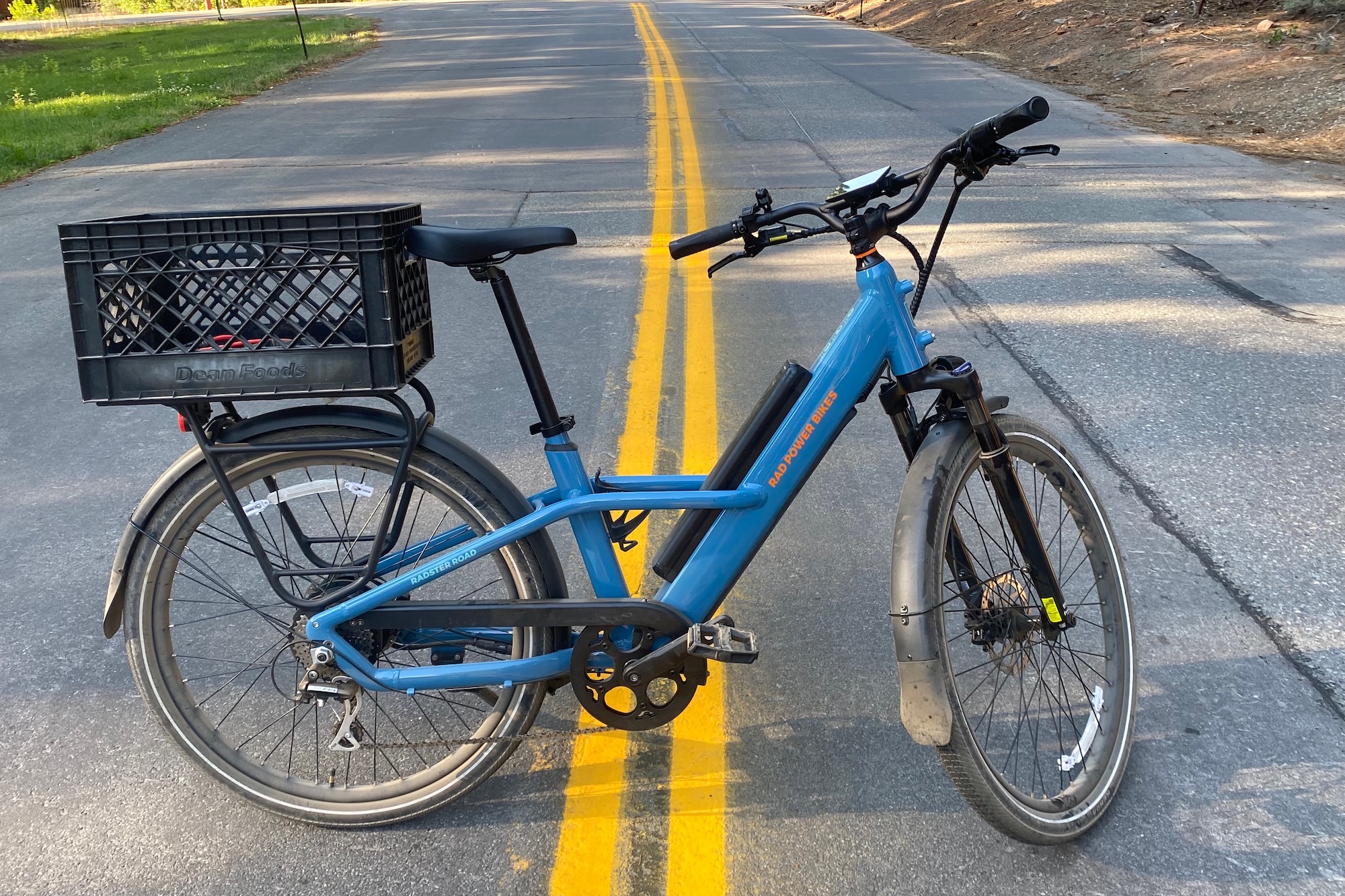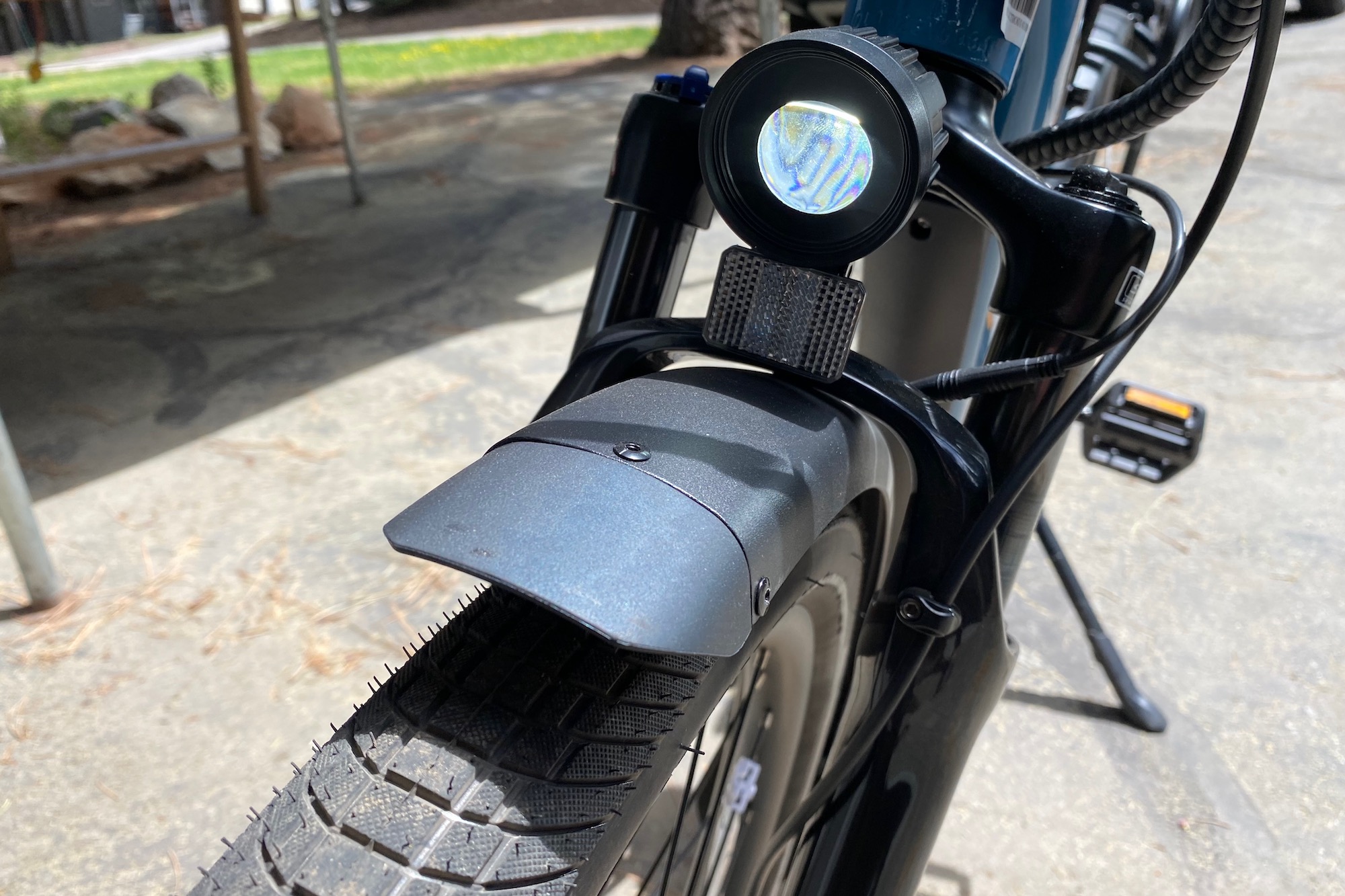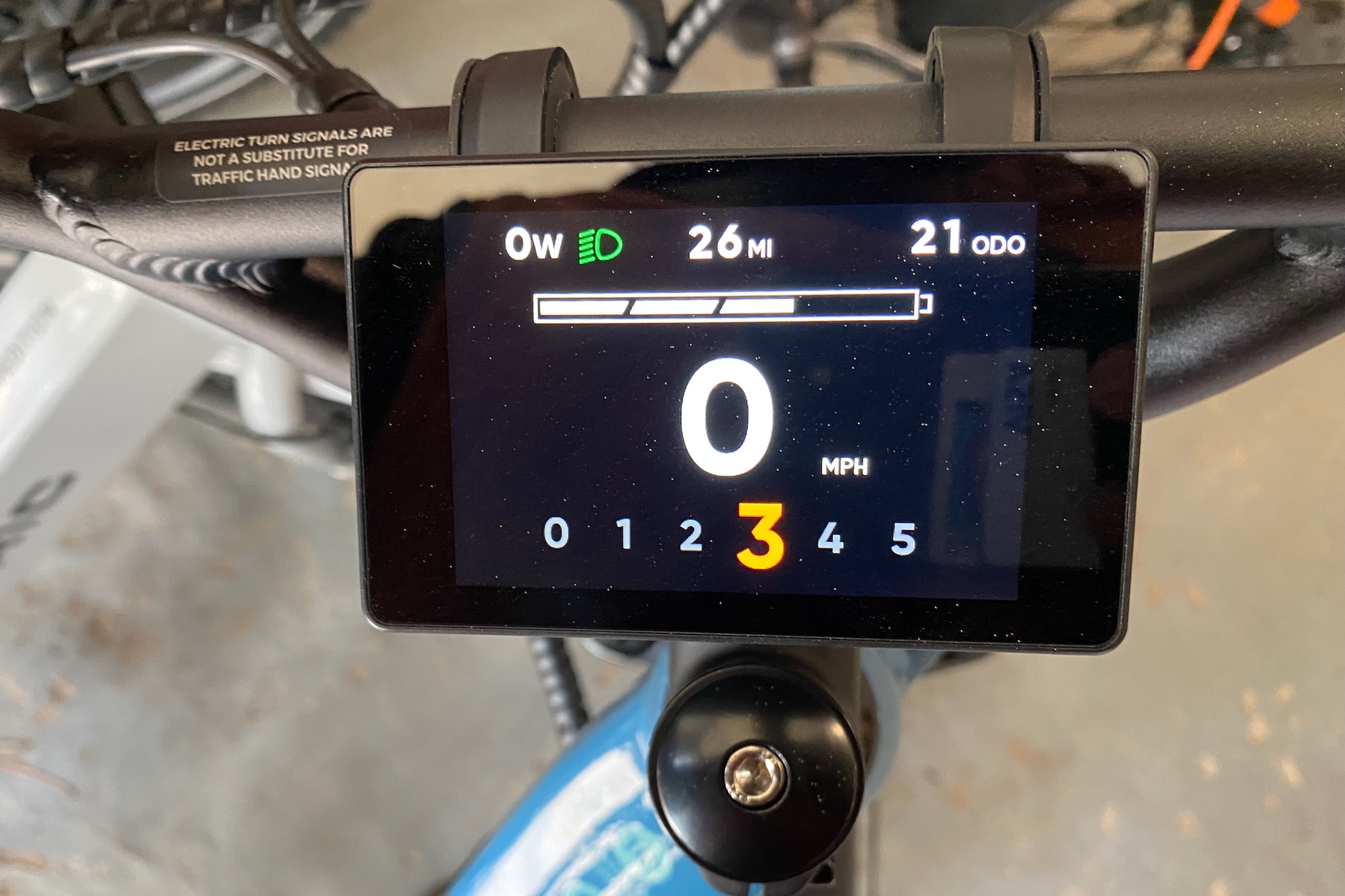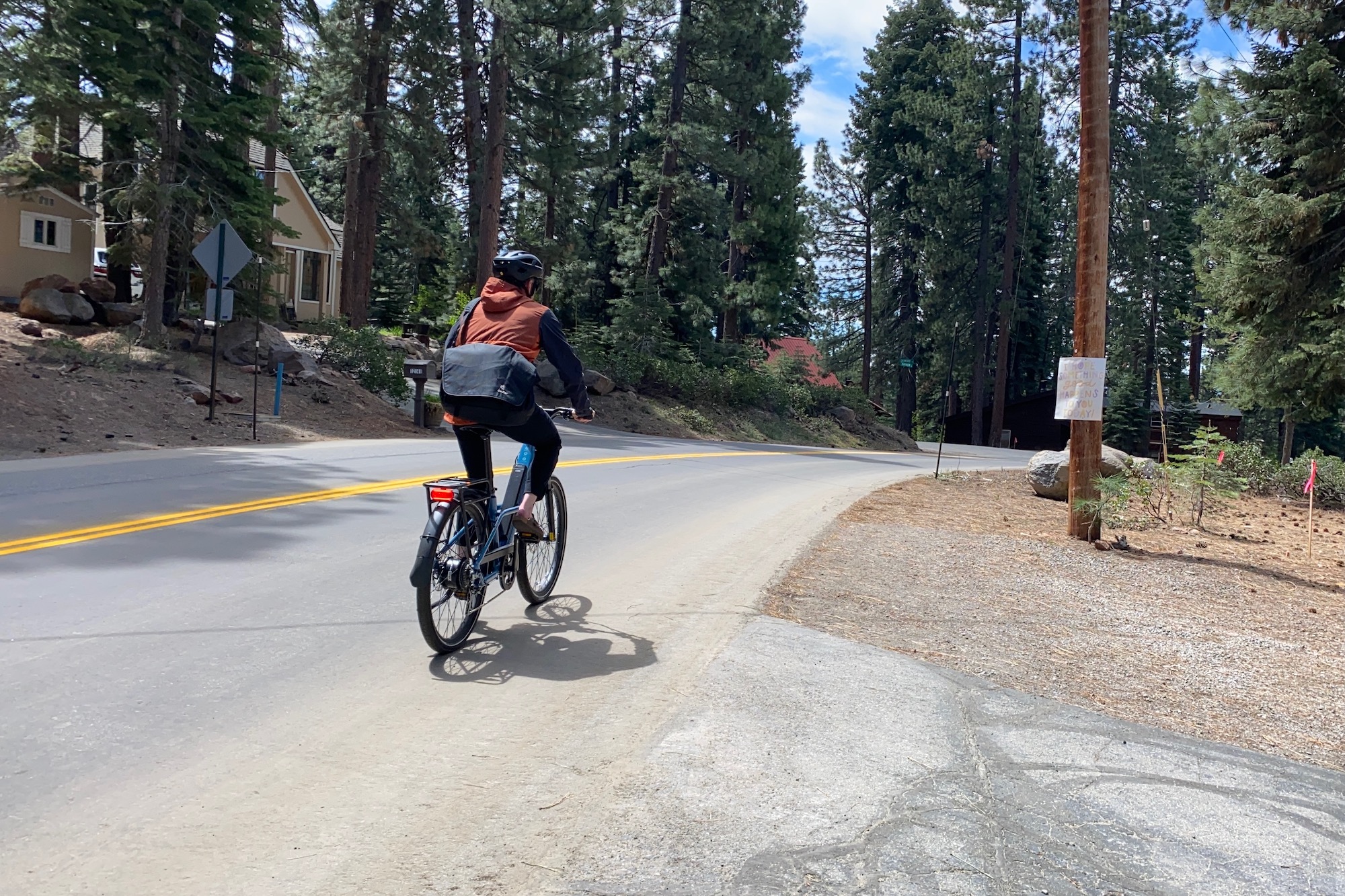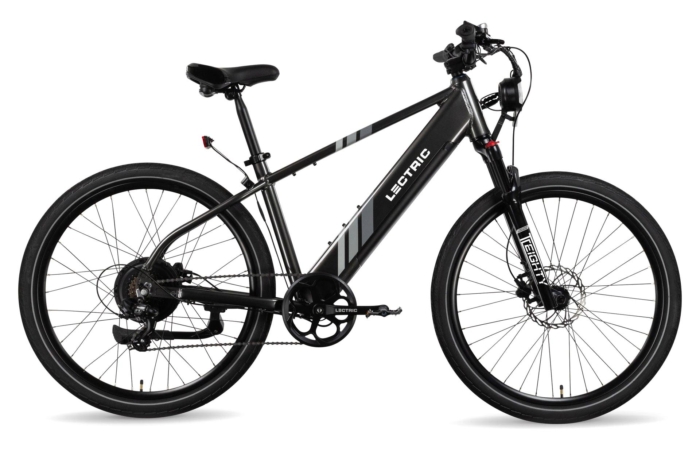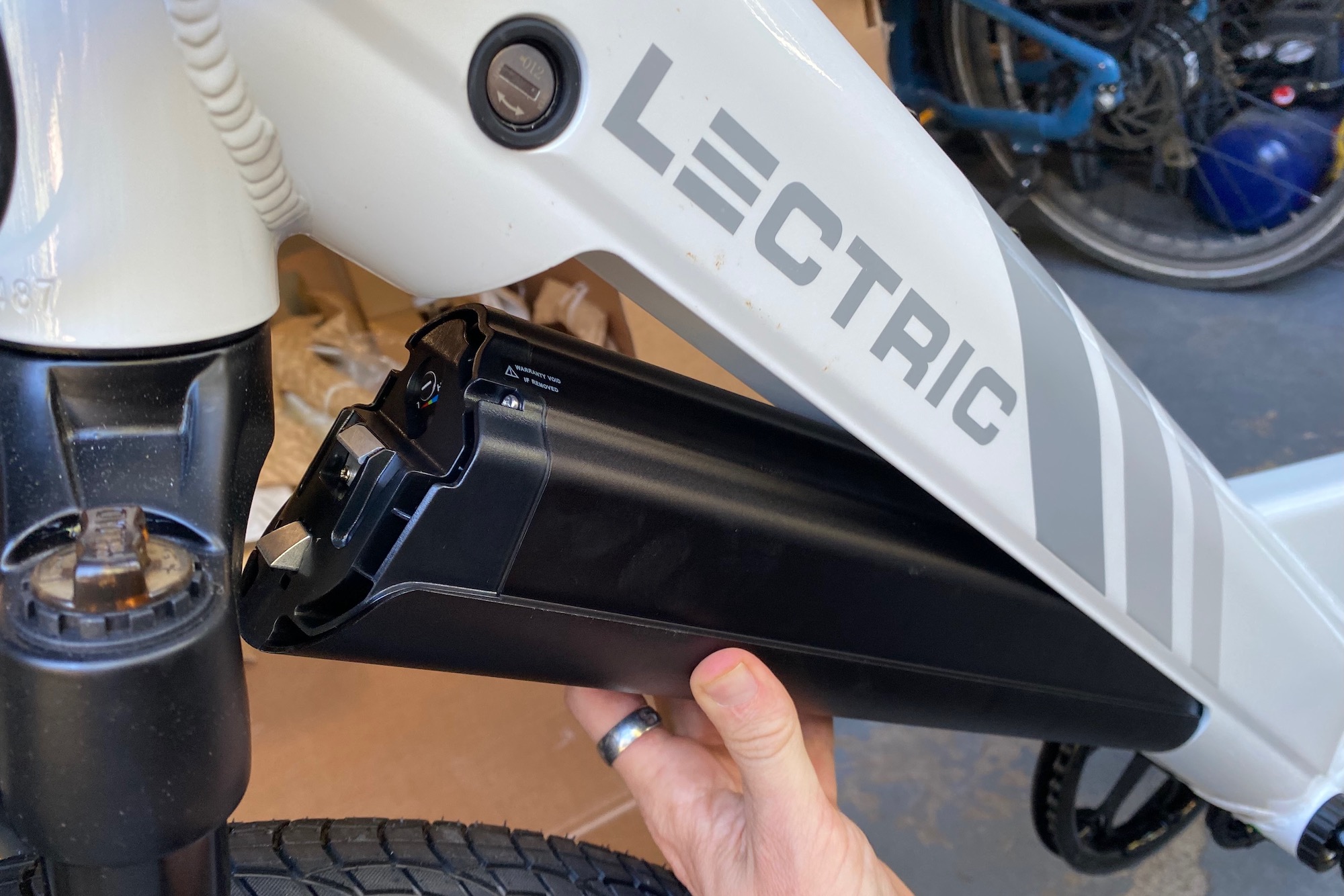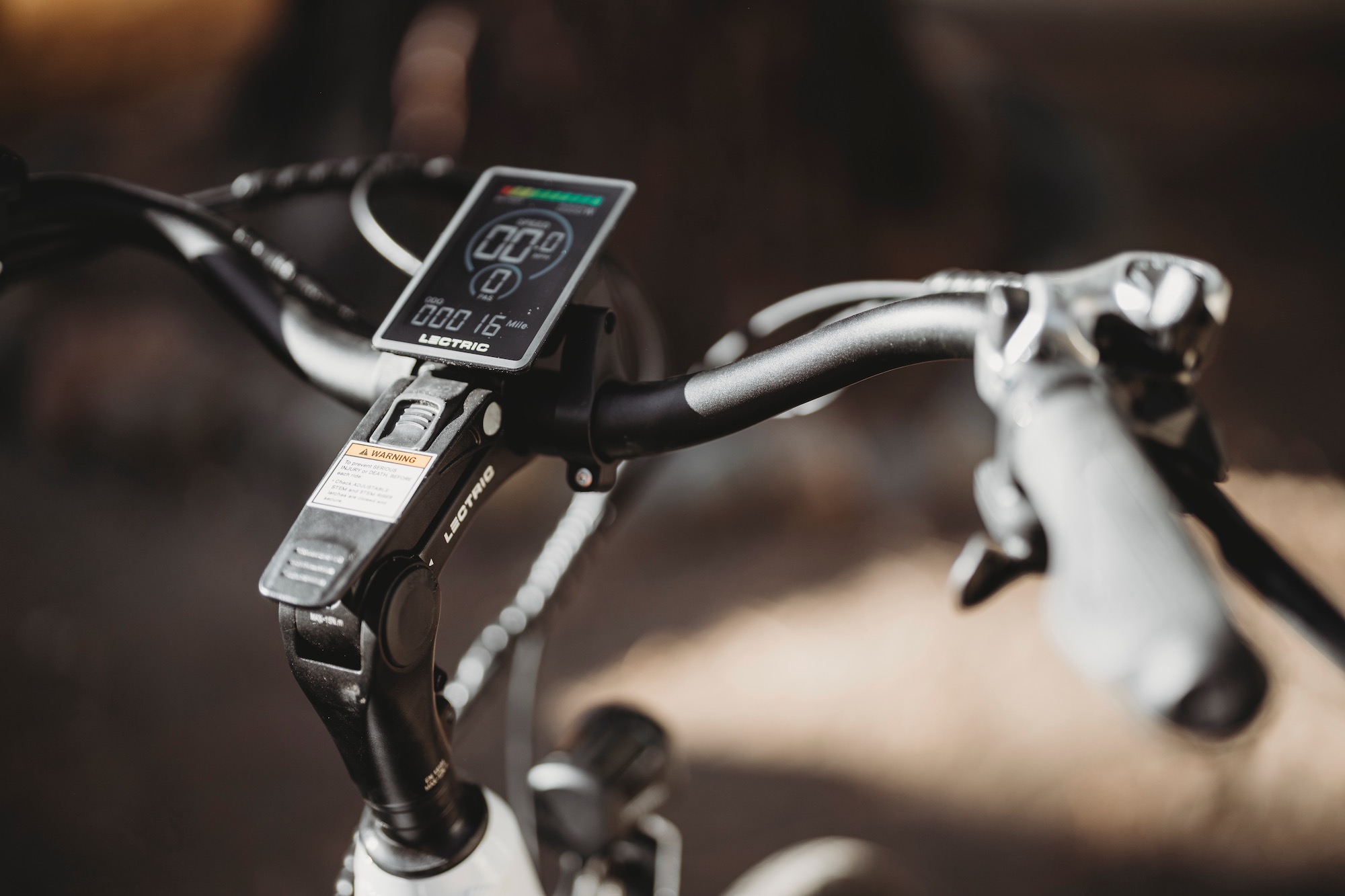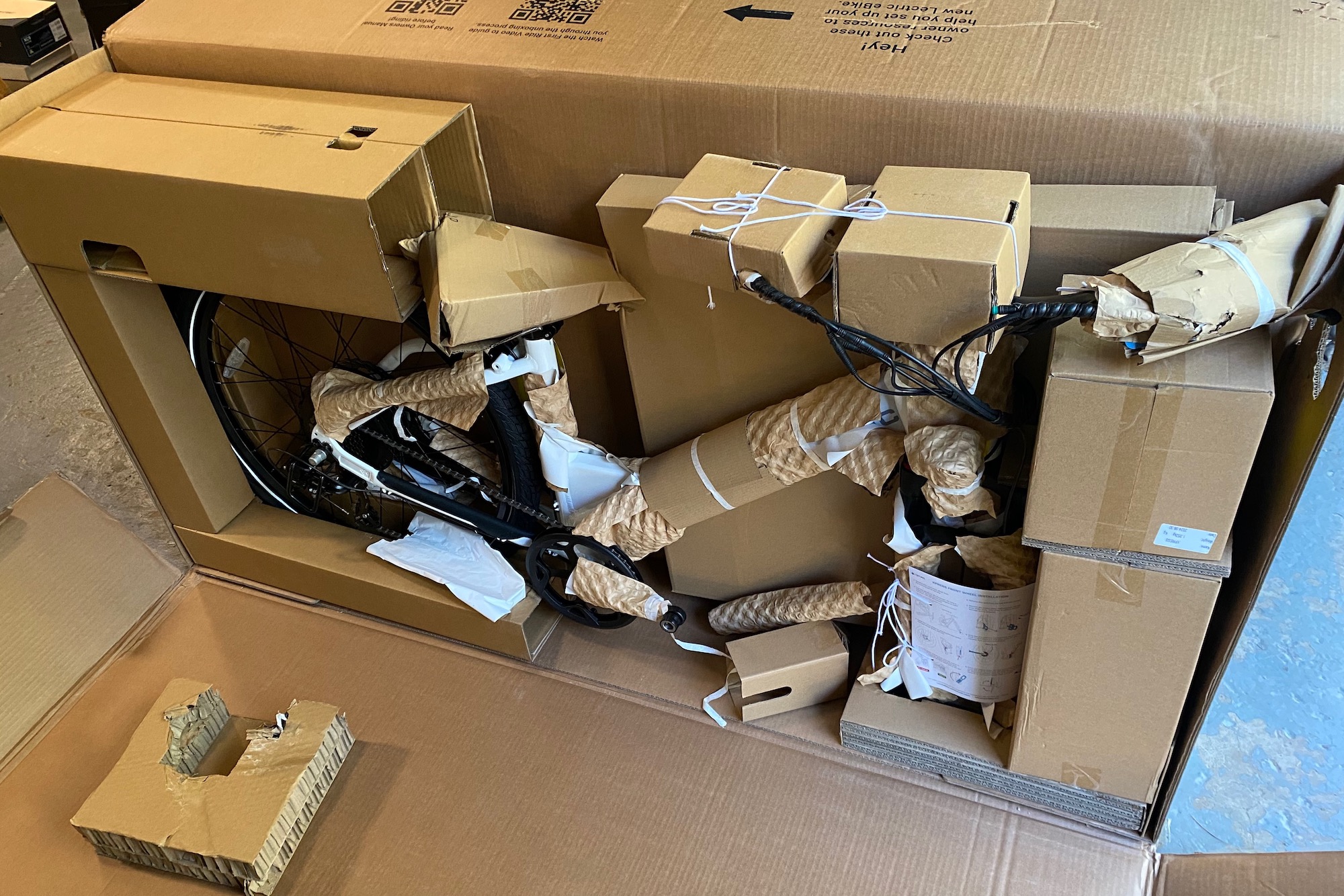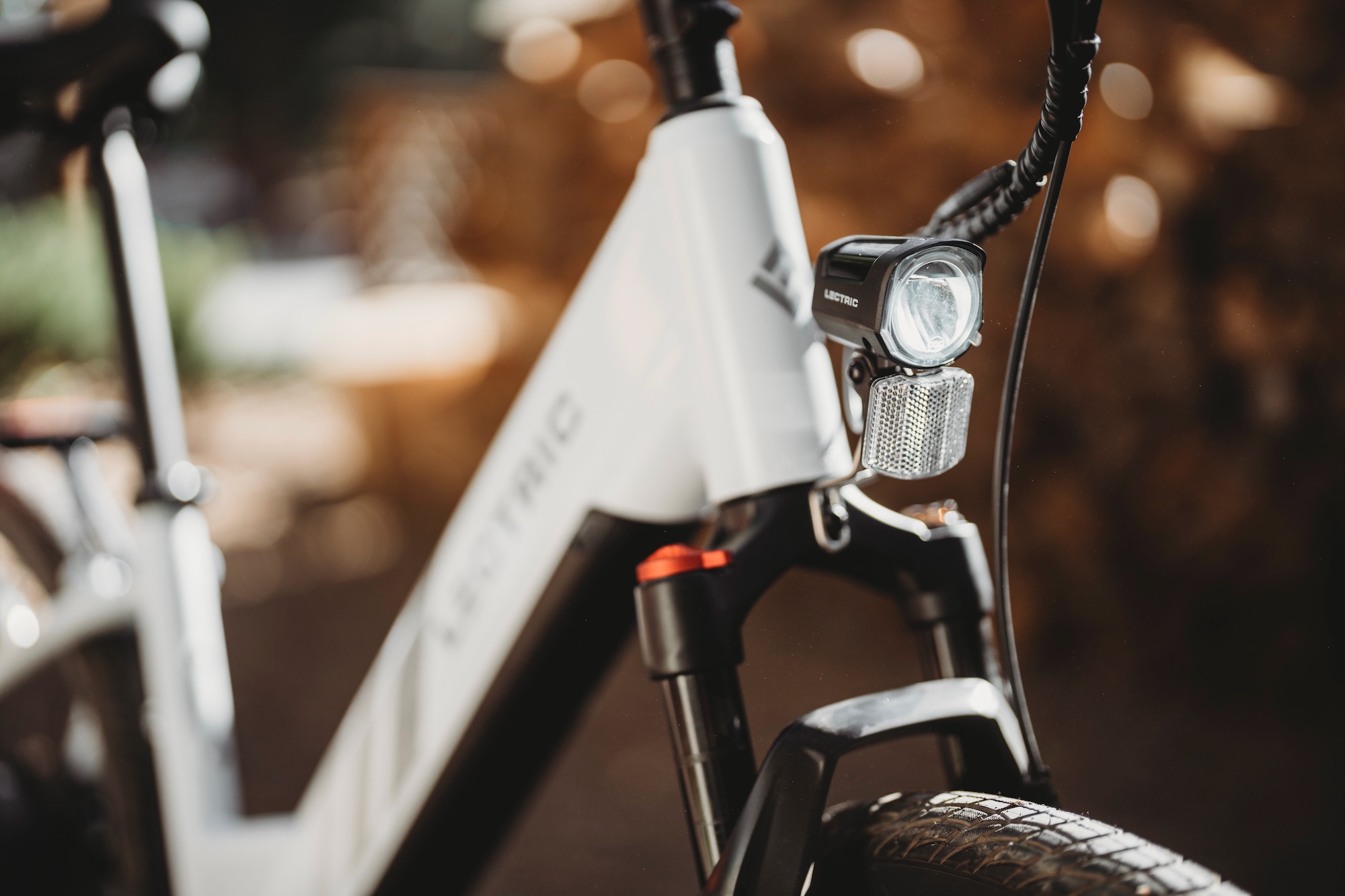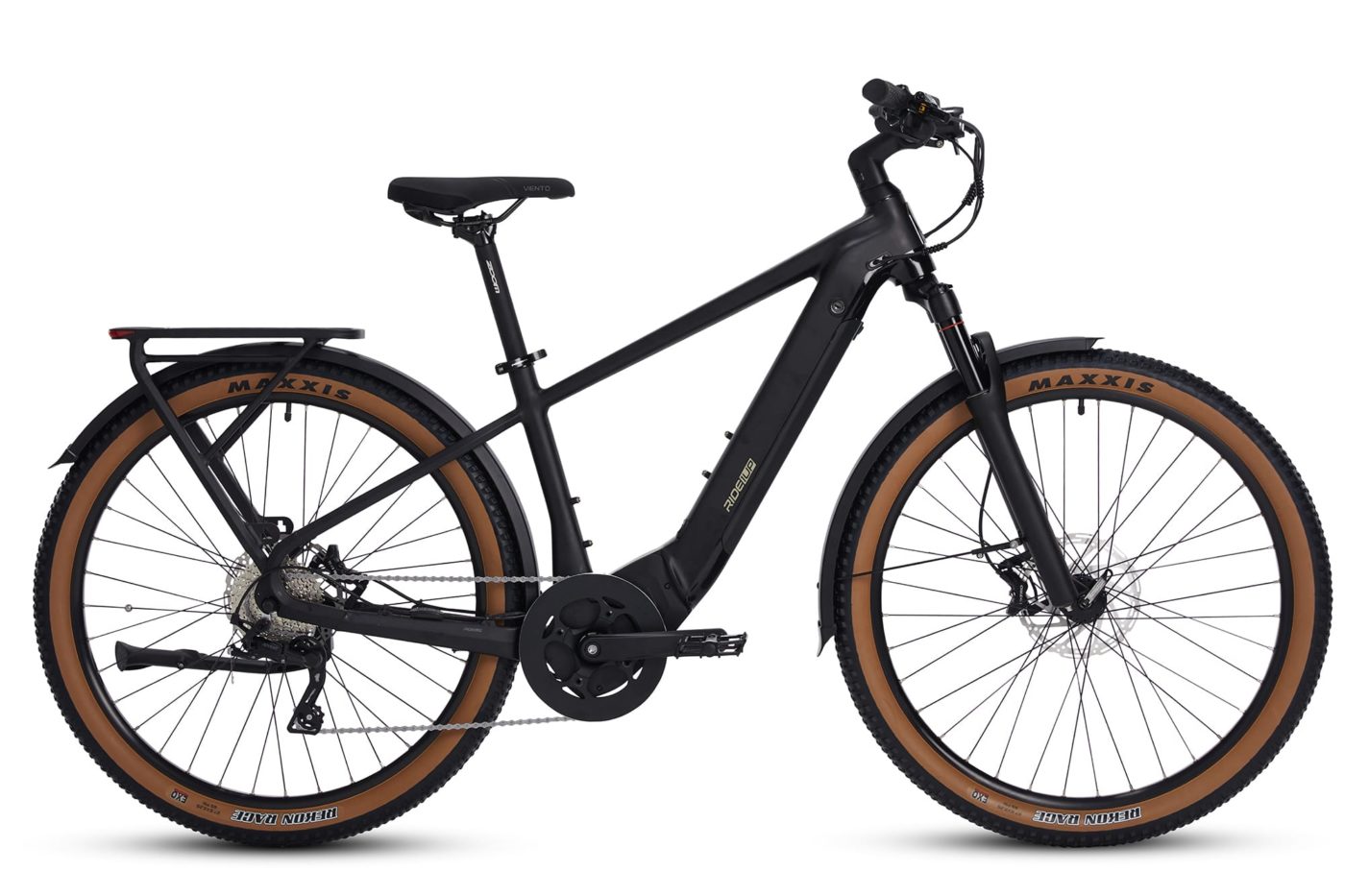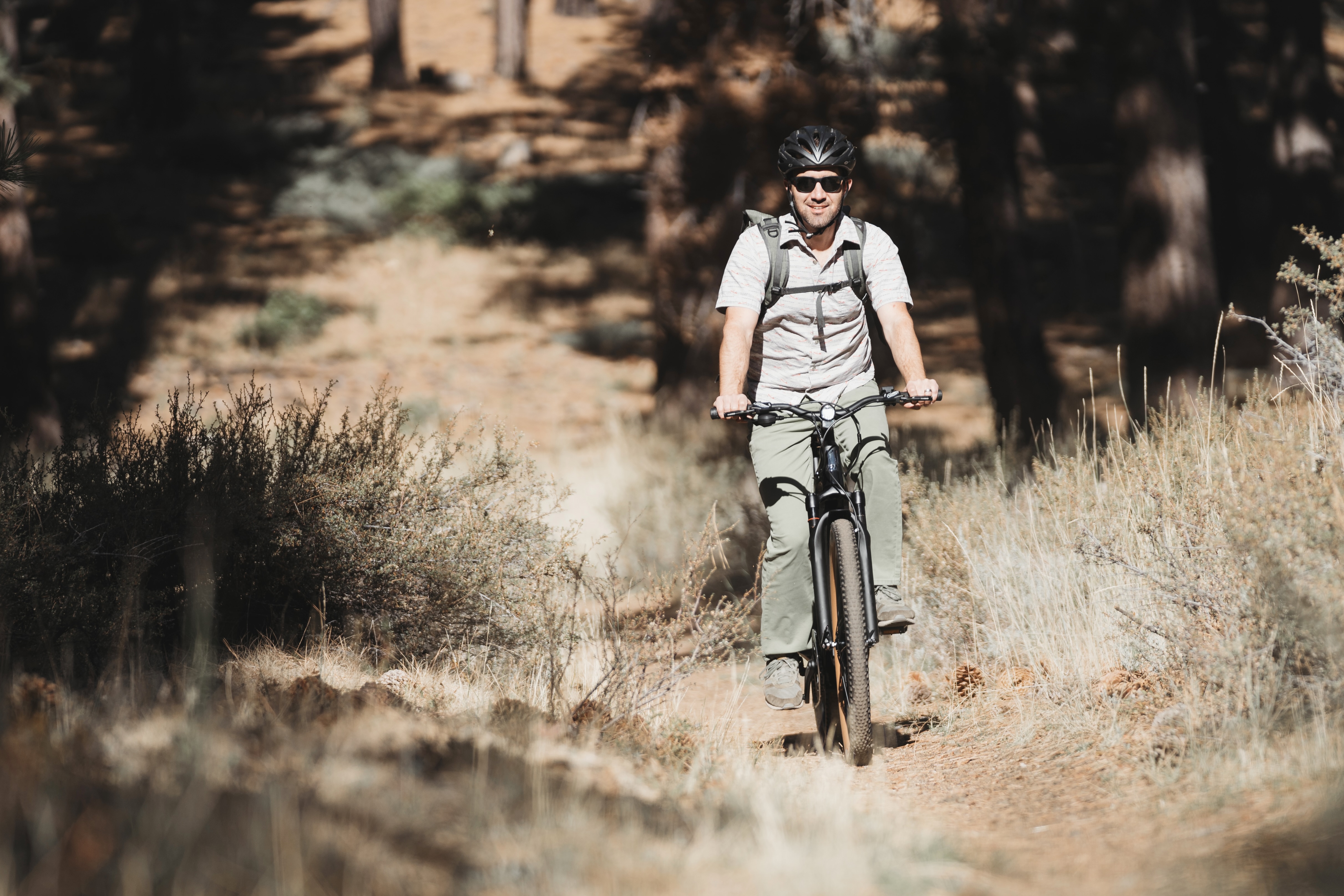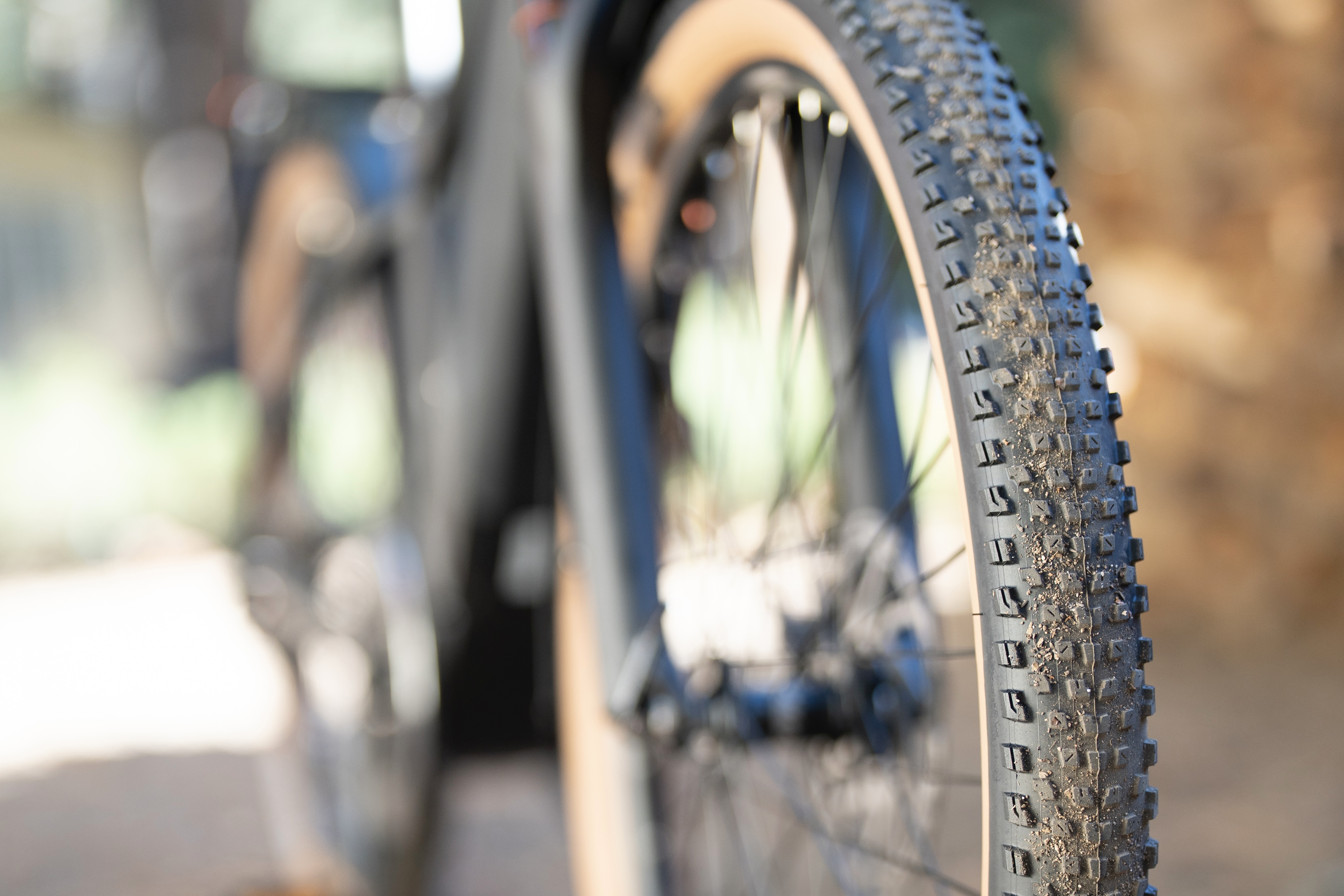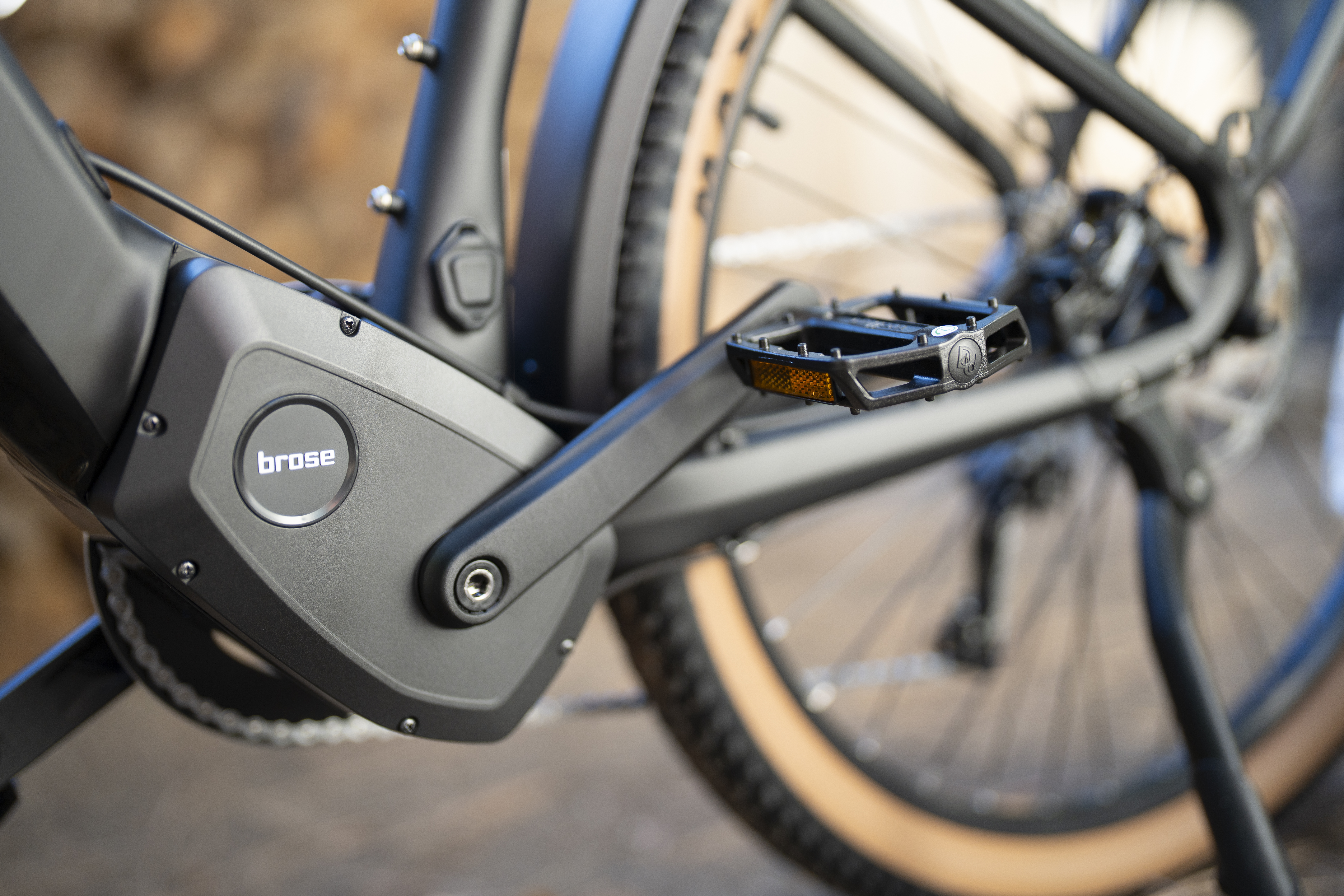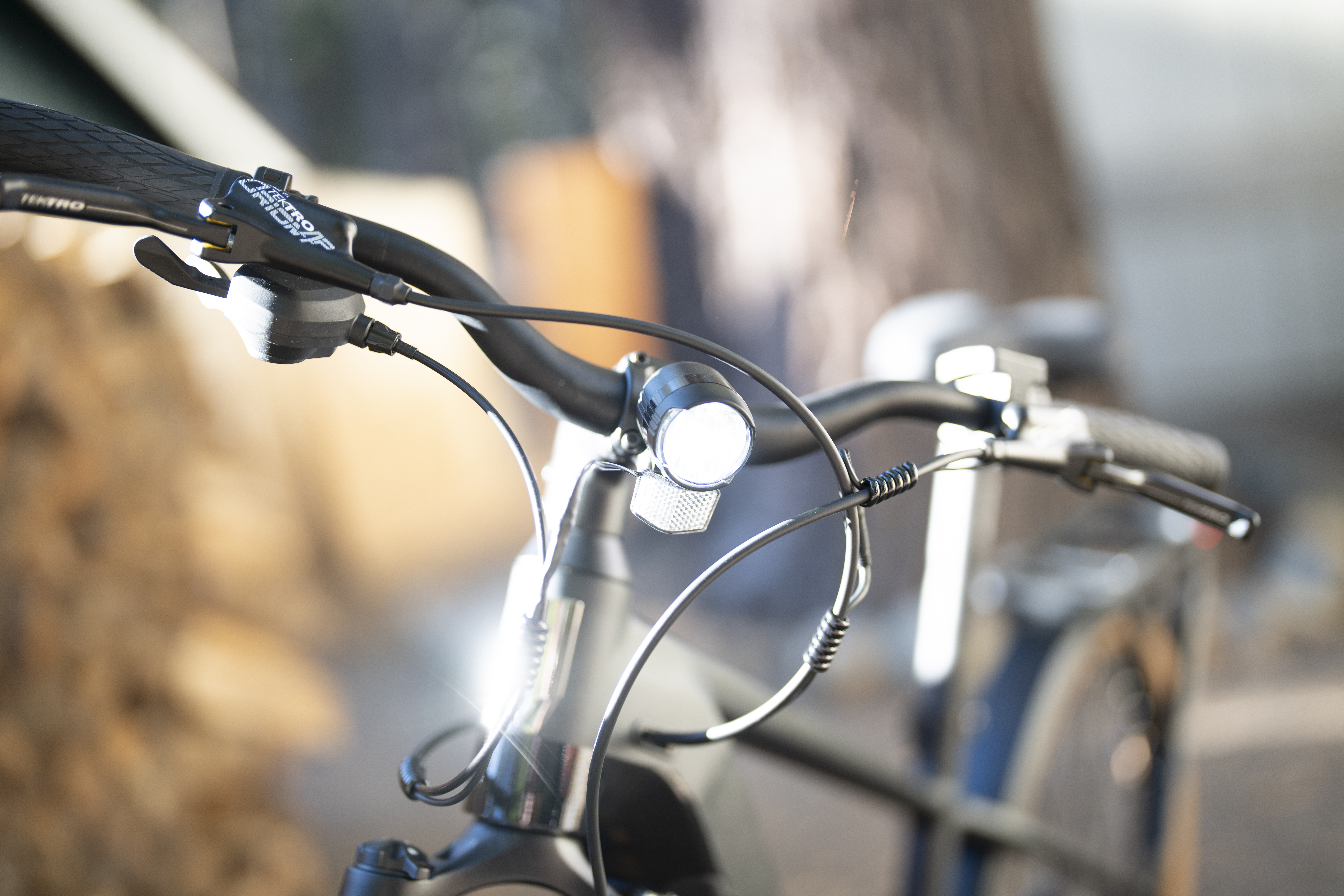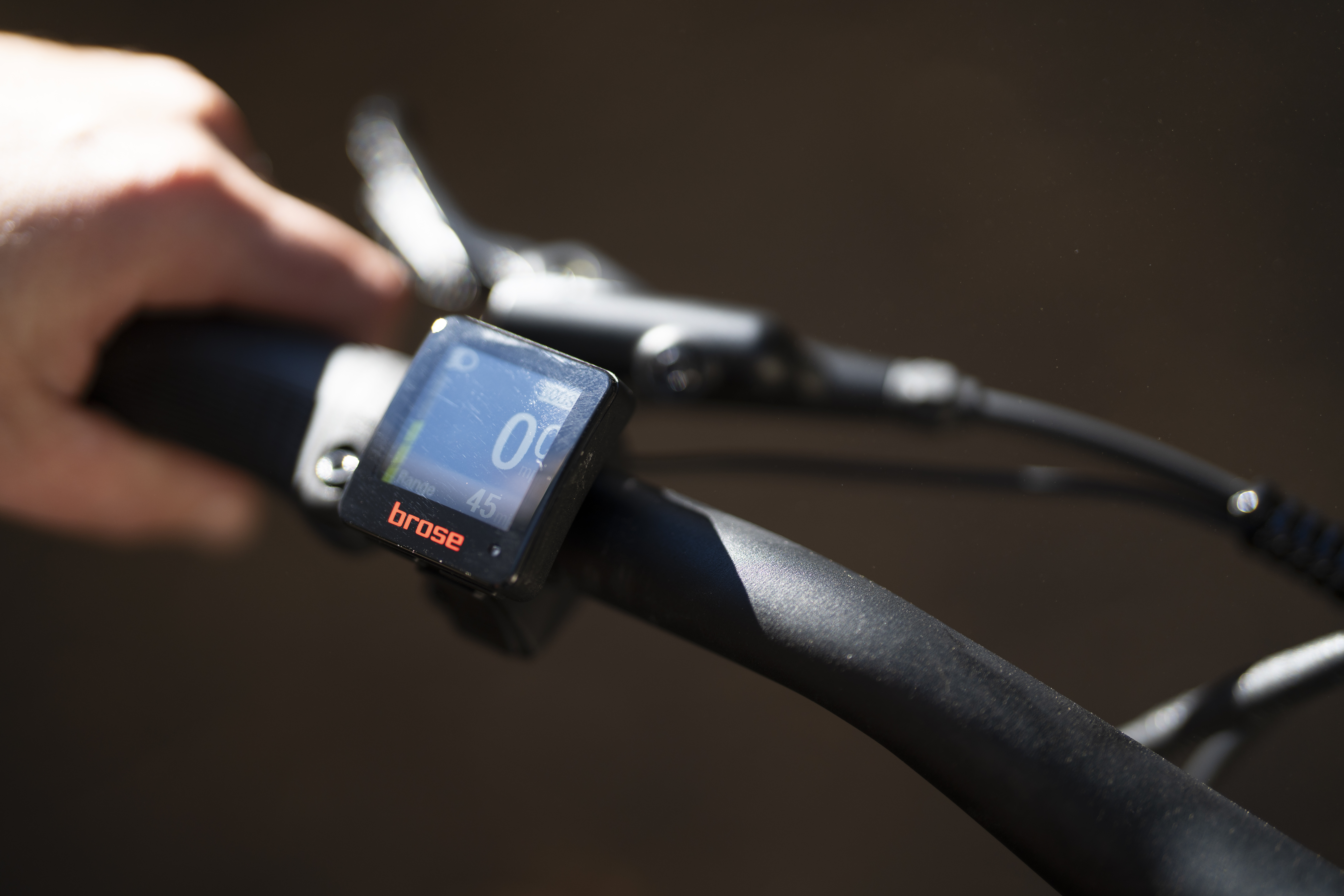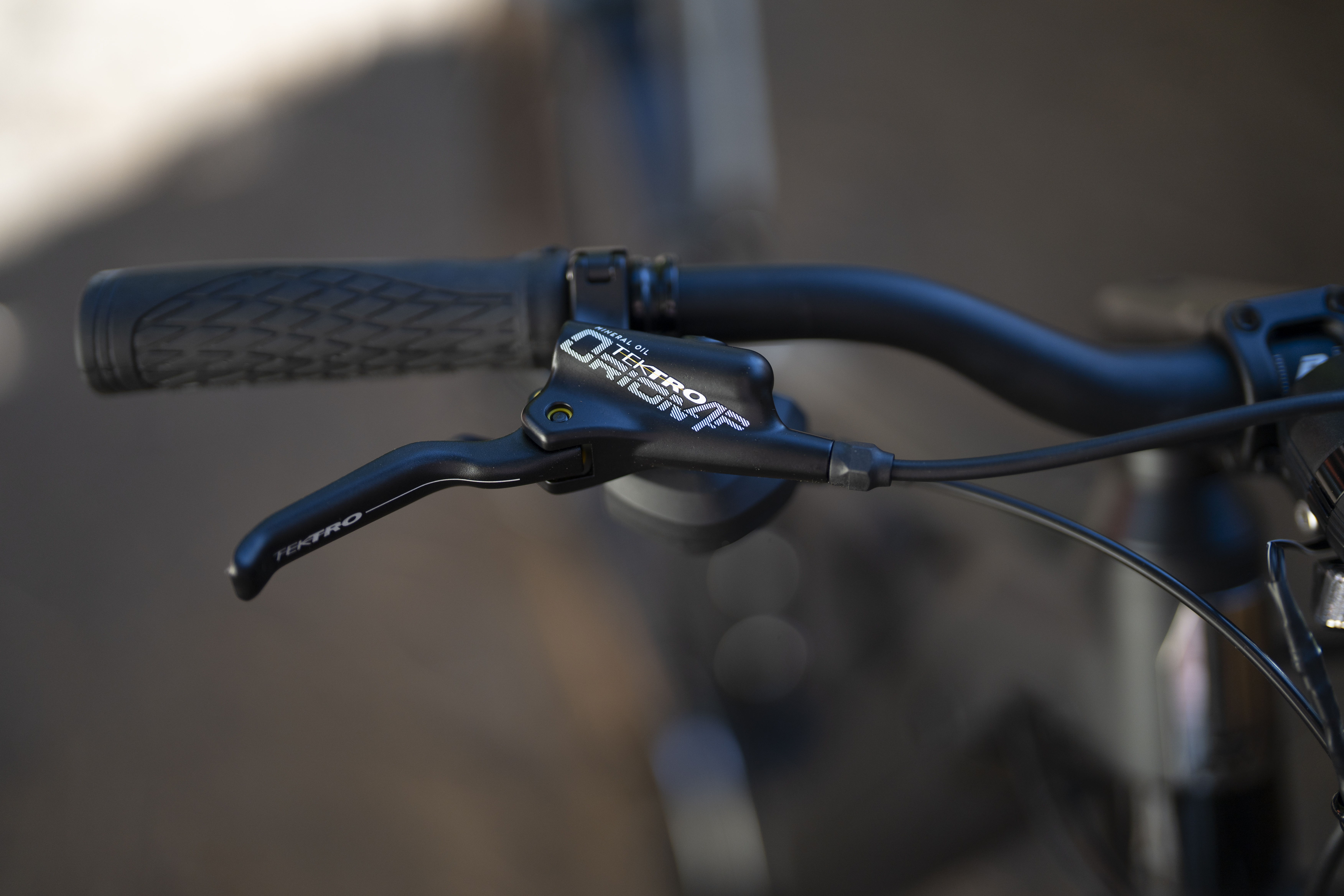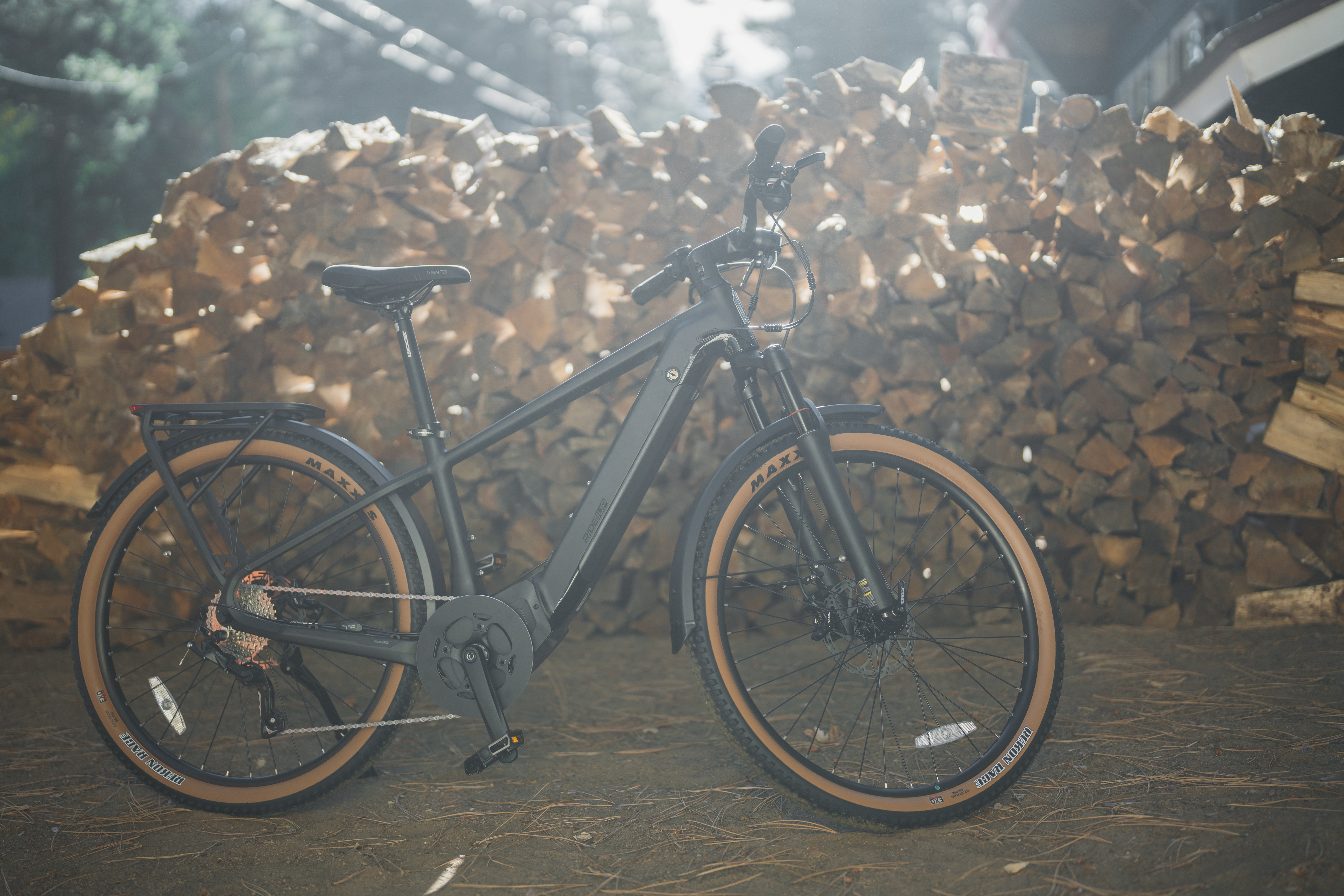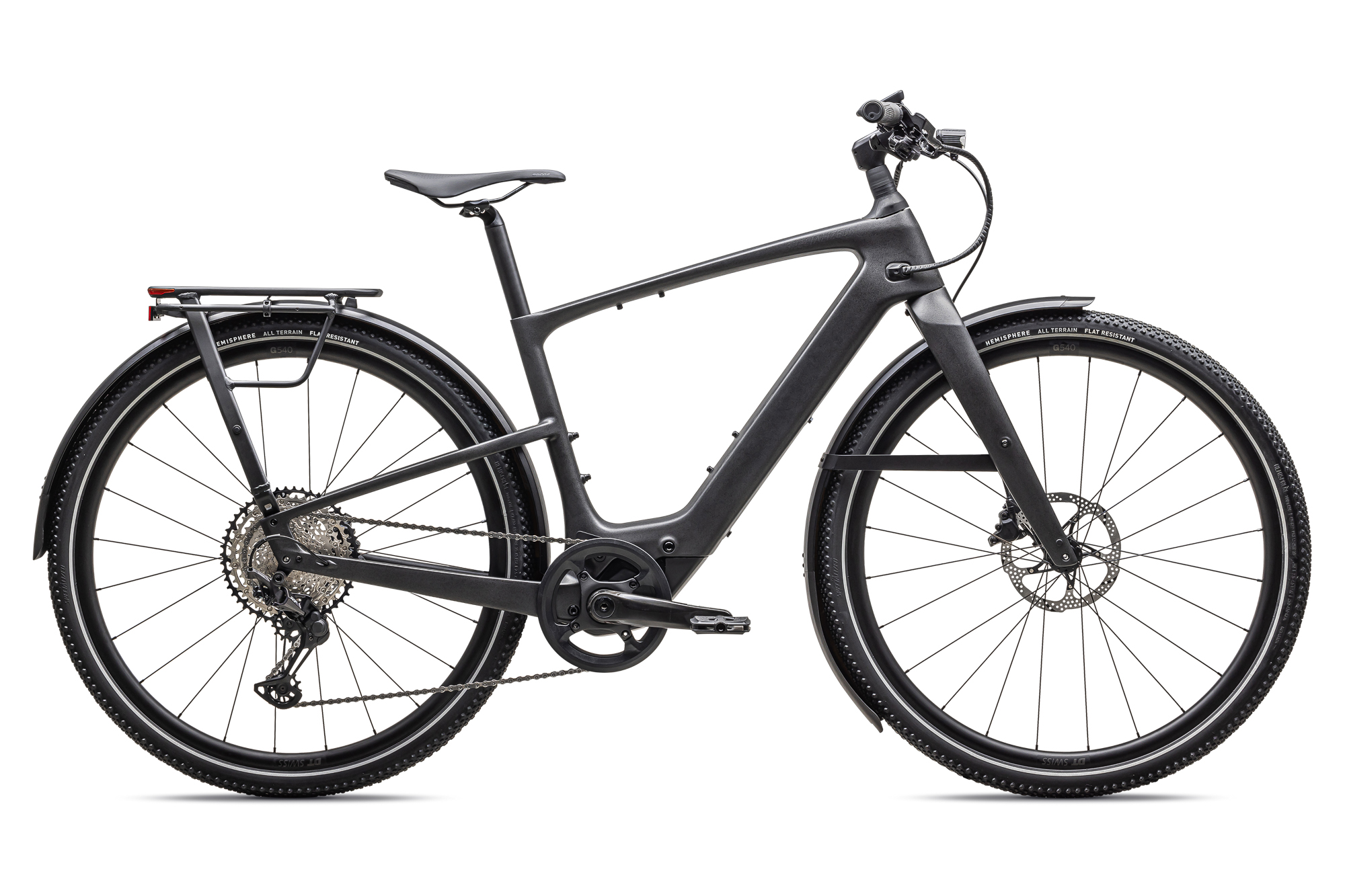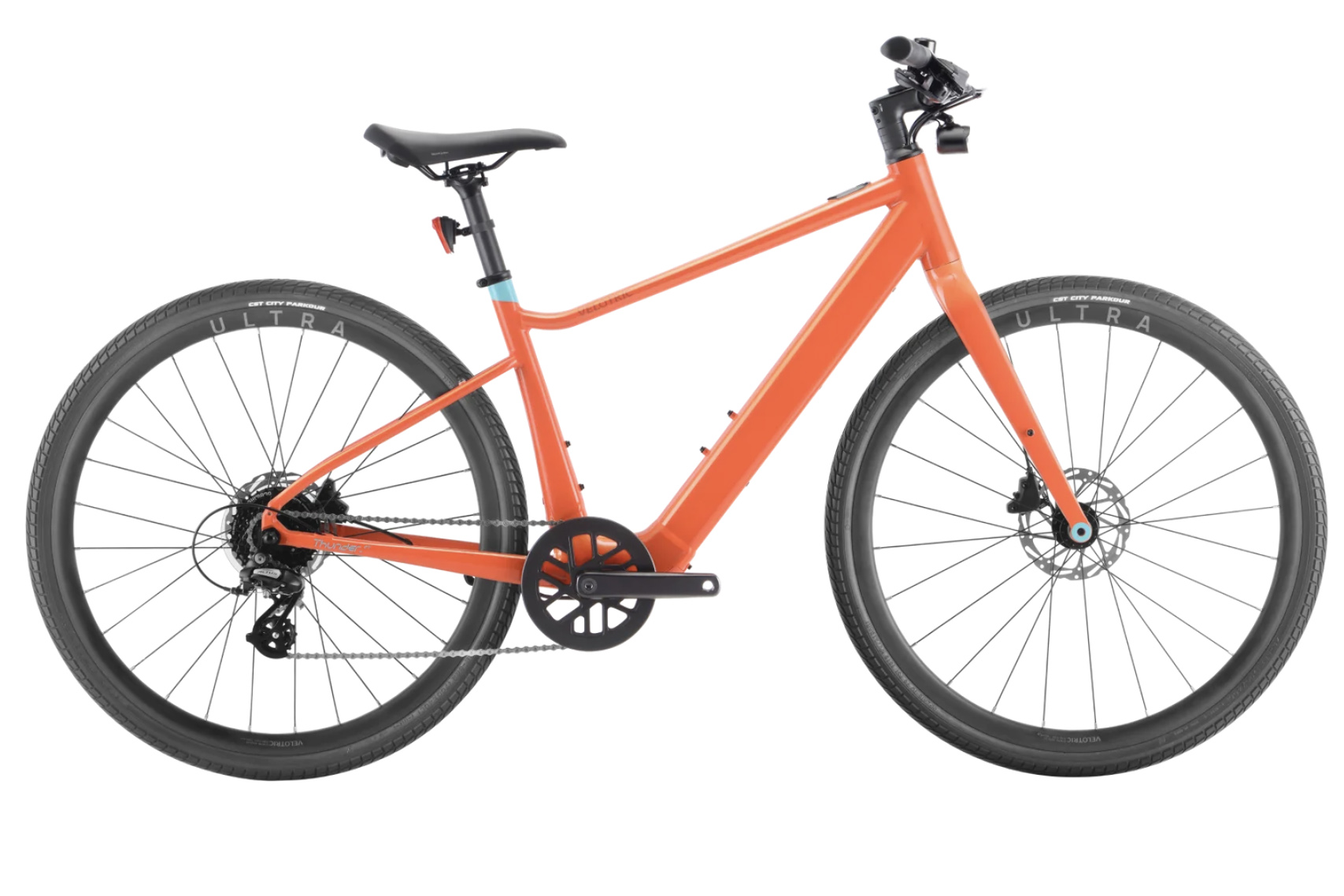Commuting by bike is a great way to avoid traffic, get outside, and get some exercise on your way to and from work. Not only can it save you money, but bike commuting can potentially save you time with the added bonus of being both fun and rewarding.
When it comes to picking the best commuter bike, there are a surprising number of options. Do you want a bike simply to get you to and from the office? Or do you prefer a bike that’s also rideable on trails in your local open space, parks, or national forest lands? Do you need it to store easily, or be easy to repair? Do you prefer to pedal with your own power, or would you like to have an electric assist?
With all of these considerations in mind — and with an eye toward a range of prices — we rounded up our favorite commuter bike options. From budget-friendly models to tricked-out electric commuters, our team has been riding, testing, and reviewing commuter bikes for years. Whether you’re just embarking on a commuter lifestyle or looking for a new everyday ride, we’ve got recommendations to suit your needs and budget.
Editor’s note: We refreshed our Commuter Bikes guide on March 24, 2025, with the addition of the affordable and super versatile Eaglebear Black Everyday.
The Best Commuter Bikes of 2025
Trek Allant+ 7S Gen 2
- E-Bike Class: 3
- Motor: Bosch Performance Line mid-drive
- Battery Size: 500 Wh
- Wheel x Tire Size: 27.5" x 2.4"
- Drivetrain: Shimano Cues 9-speed
- Suspension: 63 mm travel fork
- Weight: 58 lbs.
Pros
- Excellent component specification
- Smooth, refined power delivery from mid-drive motor
- Streamlined, sleek looks
- Smooth, stable ride
- Supension fork, fenders, lights, and rear rack included
- Comes in 3 frame sizes
Cons
- Higher price
- Smaller battery than some
Rad Power Radster Road
- E-Bike Class: 3
- Motor: 750W rear hub
- Battery size: 720 Wh
- Wheel x Tire Size: 29" x 2.2"
- Drivetrain: 8-speed
- Suspension: 80 mm suspension fork
- Weight: 74 lbs.
Pros
- Smooth, stable handling
- Great range
- Capable of Class 3 speeds up to 28 mph
- Great e-bike controls and display
- Comes with rear cargo rack, lights, and fenders
- Reasonable price
Cons
- Very heavy
- Affordable but still not cheap
Lectric XPress 750
- E-Bike Class: 3 (can be configured Class 1 or 2)
- Motor: 750W rear hub
- Battery Size: 672 Wh
- Wheel x Tire Size: 27.5" x 2.1"
- Drivetrain: 7-speed
- Suspension: 80 mm fork
- Weight: 57 lbs.
Pros
- Reasonable price
- Powerful, torquey motor
- Has throttle, torque sensor
- Suspension fork
- Available in step-thru and step-over frames
- Base model (500W motor) is even less expensive
Cons
- Shifters in awkward position
- Burns through battery in high-assist modes
- Heavy
Ride1Up Prodigy V2
- E-Bike Class: 3
- Motor: Brose mid-drive, 90 Nm
- Battery size: 500 Wh
- Wheel x Tire Size: 27.5" x 2.25"
- Drivetrain: 9-speed
- Suspension: 100 mm air suspension fork
- Weight: 58 lbs.
Pros
- Brose mid-drive motor is smooth and quiet
- More natural riding experience than most e-bikes
- Knobby tires provide off-road capability on dirt and gravel trails
- Solid components for the price
- Simple, classic style
Cons
- Less battery capacity than a lot of e-bikes
- Does not include a throttle; only pedal assist
- Frame size is a little small; best for riders under 6 feet tall
Specialized Vado SL 2 6.0 Carbon EQ
- E-Bike Class: 3
- Motor: Specialized Turbo SL 1.2, 320 W
- Battery Size: 520 Wh
- Wheel x Tire Size: 700 x 47c
- Drivetrain: Shimano XT 12-speed
- Suspension: Future Shock 3.2, 20 mm
- Weight: 39 lbs., 10.6 oz.
Pros
- Suspension in headset delivers plushness
- Electric assist has a natural feel
- Bike has a premium look and feel
- Lightweight
- Nimble handling
Cons
- Expensive
- Motor could use more power
Velotric T1 ST Plus
- E-Bike Class: 1 or 3
- Motor: 350 W rear hub
- Battery Size: 352.8 Wh
- Wheel x Tire Size: 700c x 40 c
- Drivetrain: 8-speed
- Suspension: None
- Weight: 39 lbs.
Pros
- Light
- Clean design with internal wire routing
- Good disc brakes
- Good components for the price
Cons
- The battery cannot be removed for charging
- Sometimes jerky motor engagement
Non-Electric Commuter Bikes
Priority 600
- Bike Type: City/commuter
- Frame: Aluminum
- Suspension: None
- Wheel x Tire Size: 27.5" x 47 mm
- Drivetrain: 12-speed Pinion Gearbox w/ Gates Carbon Drive belt
- Weight: 30 lbs.
Pros
- Pinion gearbox and Gates Carbon Drive
- Low maintenance
- Dynamo hubs also have a USB feature — charge your phone on the go
- Killer build
- Fully-featured
- Versatile
Cons
- More expensive
- Not the lightest weight
Electra Loft 7D
- Bike Type: City/commuter
- Frame: Alloy
- Suspension: None
- Wheel x Tire Size: 700c x 37 mm
- Drivetrain: 7-speed
- Weight: 32 lbs.
Pros
- Reasonable price
- Great looking
- Comes with fenders
- Smooth rolling and stable
- Relatively lightweight
Cons
- Gear range may be limiting for those with steeper hills
- Narrower tires are best for smoother paved surfaces
Eaglebear Black Everyday
- Bike type: City, commuter, gravel
- Frame: Aluminum
- Suspension: None
- Wheel x tire size: 700c x 45 mm
- Drivetrain: Shimano Deore 12-speed
- Weight: 24 lbs. (Large)
Pros
- Highly versatile
- Affordable
- Nice components for price
- Fun to ride
- Two wheel size options
Cons
- Doesn't come with any commuter-specific features
- Somewhat loud branding
Brompton P-Line Explore 12-speed
- Bike Type: Folding
- Frame: Titanium and Steel
- Suspension: None
- Wheel x Tire Size: 16" x 1.35"
- Drivetrain: 12-speed
- Weight: 23.2 lbs.
Pros
- Incredibly lightweight
- Small folded size – easy to store, transport, or carry
- Can roll when folded
- 12-speed drivetrain
- Handles better than expected
- Comes in numerous colors and handlebar options
Cons
- Expensive
- Doesn't handle as well as bikes with larger wheels
Tern Node D7i Folding Bike
- Bike Type: Folding
- Frame: Aluminum
- Suspension: None
- Wheel x Tire Size: 24" x 2.0"
- Drivetrain: 7-speed
- Weight: 31.2 lbs.
Pros
- Folds up for easy storage at home and on the go
- Internal gear hub means less maintenance
- Great for commutes that include bus and train rides
- Comes with fenders and rear rack
Cons
- Some commuters might desire more gear options
- Not as compact as some folding bikes
Other Commuter Bikes to Get You There
- E-Bike Class: 1
- Motor: Bosch Performance mid-drive, 75Nm torque
- Battery Size: 545 Wh
- Wheel x Tire Size: 20" x 55 mm
- Drivetrain: 5-speed internal with Gates CDX belt
- Suspension: 70 mm suspension fork
- Weight: 61.5 lbs.
Pros
- Compact for a cargo bike
- Pedal assist up to 20mph
- Low maintenance internal hub gearing and belt drive
- Good range
- Can be stored upright and fit into smaller spaces
- Rear rack can support up to 176 lbs.
Cons
- Expensive
- Small wheels don't handle as well as larger ones
- E-Bike Class: 3
- Motor: Shimano EP600 mid-drive
- Battery Size: 630 Wh
- Wheel x Tire Size: 29" x 2.0"
- Drivetrain: Shimano Inter-5 internal hub w/ Gates Carbon Drive belt
- Suspension: None
- Weight: 50 lbs.
Pros
- Easy-to-maintain drivetrain
- Simple to use
- Integrated lights and USB-C charger
- Front and rear fenders standard
Cons
- No integrated display
- Gear shift lever wasn't easy to press
- Expensive
- E-Bike Class: 1 or 3
- Motor: 500W mid-drive (140 Nm max. torque)
- Battery Size: 500 Wh
- Wheel x Tire Size: 27.5" x 47 mm
- Drivetrain: Belt-drive, Shimano Inter-5 or Enviolo Heavy-Duty
- Suspension: None
- Weight: 53 lbs.
Pros
- Great build
- Very powerful mid-drive motor
- Low maintenance belt drivetrain
- Smooth shifting internal hub gears
- 3 frame sizes
Cons
- Display screen is invisible with polarized glasses
- Controls are a little outdated feeling
- No front suspension
- Higher price
- E-Bike Class: E-bike Class: 2 (can be changed to class 3)
- Motor: 350W rear hub
- Battery Size: 345 Wh
- Wheel x Tire Size: 700c x 38 mm
- Drivetrain: 7-speed
- Suspension: None
- Weight: 46 lbs.
Pros
- Easy to assemble and ride
- Decent range
- Integrated charging, removable battery
- Turn signals, brake lights, and headlight included
- Great price
Cons
- Mechanical brakes
- Twist shifting
- Bike Type: City/commuter
- Frame: Steel
- Suspension: None
- Wheel x Tire Size: 700c x 32 mm
- Drivetrain: 8-speed
- Weight: Unknown
Pros
- Affordable
- Comes in three frame sizes and color options
- Comfortable upright riding position
- Tires are wide enough for bumps, but not too wide to slow you down
- Wide gear range that can still handle hills but isn’t overkill
Cons
- More of a city bike than a fitness bike
- Best for paved surfaces only
- Caliper brakes have limited power
- Limited features
- Bike Type: City/urban
- Frame: Steel
- Suspension: None
- Wheel x Tire Size: 700c x 25 mm
- Drivetrain: Single speed or fixed gear
- Weight: 24.5 lbs.
Pros
- Very affordable
- As simple as it gets – fixed gear or single speed
- Extra-small frame option for shorter folks
- Customization and add-on options
- Streamlined appearance
- Minimal maintenance
Cons
- Fixed gear bikes can be challenging to ride
- Very bare bones
- Bike Type: Touring/commuter
- Frame: 4130 CroMoly steel
- Suspension: None
- Wheel x Tire Size: 26" x 2.1" or 700c x 47mm
- Drivetrain: 3 x 9-speed
- Weight: Unknown
Pros
- Durable steel frame
- Enormous gear range
- Good bike for commuting or long tours
- Tubeless tire capability makes for great handling, especially on gravelly surfaces
- Plenty of braze-ons for all your hauling needs
Cons
- Drop bar setup may not appeal to everyone
- Bike Type: City/commuter
- Frame: Aluminum
- Suspension: 63 mm suspension fork
- Wheel x Tire Size: 700c x 40 mm
- Drivetrain: 2 x 8-speed
Pros
- Affordable
- Step-through or step-over frames available
- Bump-absorbing front shocks
- Wider tires and shocks allow for light off-paved riding
- 16 gears provides ample range
Cons
- Suspension fork adds a little weight
- More gears than may be necessary for flatter terrain
- Limited features
Commuter Bike Comparison Chart
| Bike Model | MSRP | Bike Type | Wheel x Tire Size | Number of Gears | Motor | Battery Size | Ebike Class |
|---|---|---|---|---|---|---|---|
| Trek Allant+ 7S Gen 2 | $3,500 | Electric commuter | 27.5″ x 2.4″ | 9 | Bosch Performance Line mid-drive | 500 Wh | 3 |
| Rad Power Radster Road | $2,199 | Electric commuter | 29″ x 2.2″ | 8 | 750W rear hub | 720 Wh | 3 |
| Lectric XPress 750 | $1,300 | Electric commuter | 27.5″ x 2.1″ | 7 | 750W rear hub | 672 Wh | 3 |
| Ride1Up Prodigy V2 | $2,395 | Electric commuter | 27.5″ x 2.25″ | 9 | Brose mid-drive 90 Nm | 500 Wh | 3 |
| Specialized Turbo Vado SL 2 Carbon 6.0 EQ | $6,500 | Electric commuter | 700 x 47c | 12 | Specialized Turbo SL 1.2 | 520 Wh | 3 |
| Velotric T1 ST Plus | $1,549 | Electric commuter | 700 x 40 c | 8 | 350 W rear hub | 352.8 Wh | 1 or 3 |
| Priority 600 | $2,499 | Non-electric city/commuter | 27.5″ | 12 | n/a | n/a | n/a |
| Electra Loft 7D | $500 | Non-electric city/commuter | 700c | 7 | n/a | n/a | n/a |
| Eaglebear Black Everyday | $1,300 | Non-electric city/commuter/gravel | 700c x 45 mm | 12 | n/a | n/a | n/a |
| Brompton P-Line Explore 12-speed | $3,250 | Non-electric folding | 16″ x 1.35″ | 12 | n/a | n/a | n/a |
| Tern Node D7i Folding Bike | $1,199 | Non-electric folding | 24″ | 7 | n/a | n/a | n/a |
| Tern HSD P5i | $4,599 | Electric cargo commuter | 20″ | 5 | Bosch Performance mid-drive, 75Nm torque | 545 Wh | 1 |
| Orbea Diem 20 | $4,699 | Electric commuter | 29″ x 2.0″ | 5 | Shimano EP600 mid-drive | 630 Wh | 3 |
| Priority Current | $3,299 | Electric commuter | 27.5″ x 47 mm | 5 | Mid-drive 500W | 500 Wh | 1 or 3 |
| Aventon Soltera.2 | $1,099 | Electric city/commuter | 700c | 7 | 350W rear hub | 345 Wh | 2 |
| Brooklyn Bicycle Co. Bedford 8 | $600 | Non-electric city/commuter | 700c | 8 | n/a | n/a | n/a |
| State Bicycle Co. Wulf | $400 | Non-electric single speed or fixie city/commuter | 700c | Single speed | n/a | n/a | n/a |
| Surly Disc Trucker | $1,999 | Non-electric touring/commuter | 26″ | 27 | n/a | n/a | n/a |
| REI Co-op CTY 2.1 | $799 | Non-electric city/commuter | 700c | 16 | n/a | n/a | n/a |
How We Tested Commuter Bikes
The crew at GearJunkie loves cycling in all its forms, even when it’s simply a means of transportation. Not only do we care about the environment and reducing our dependence on vehicles and fossil fuels, but commuting and running errands by bike can also be lots of fun and gives us another excuse to be outside getting some exercise.
Since we have experience commuting by bike and have been testing a huge range of bikes of all kinds, we’re sharing our favorite commuter bikes here with you.
Our Expert Testers
This buyer’s guide includes models tested by authors Jeremy Benson and Alyssa Kohn, along with a few tested and reviewed by GearJunkie editors and contributors. Benson is an editor at GearJunkie and has been professionally testing and reviewing bikes of all kinds for the past 8 years. He is an avid mountain and gravel rider and racer who would rather pedal a bike to and from town than drive his truck.
Even though he works from home, he rides a commuter bike 4+ miles each way on a daily basis when running errands or meeting up with friends. In the past several years, Benson has tested over 100 different bikes, including commuters, electric cargo bikes, mountain bikes, and the best gravel bikes.
Alyssa Kohn is a full-time bike commuter and endurance cyclist living in Minneapolis, Minn. She’s been carless for 8 years — yes, even in the arctic winter. She’s ridden many a bike and doesn’t think one style is better than another. She loves them all and thinks what matters most is that you enjoy the bike you’re riding.
She also owned a bike tour and rental business, Minneapolis by Bike, for 9 years — she knows a thing or two about maintaining 30+ bikes at a time. She thoroughly enjoys seeing people excited about getting into cycling and even possibly making it their transportation mode of choice.
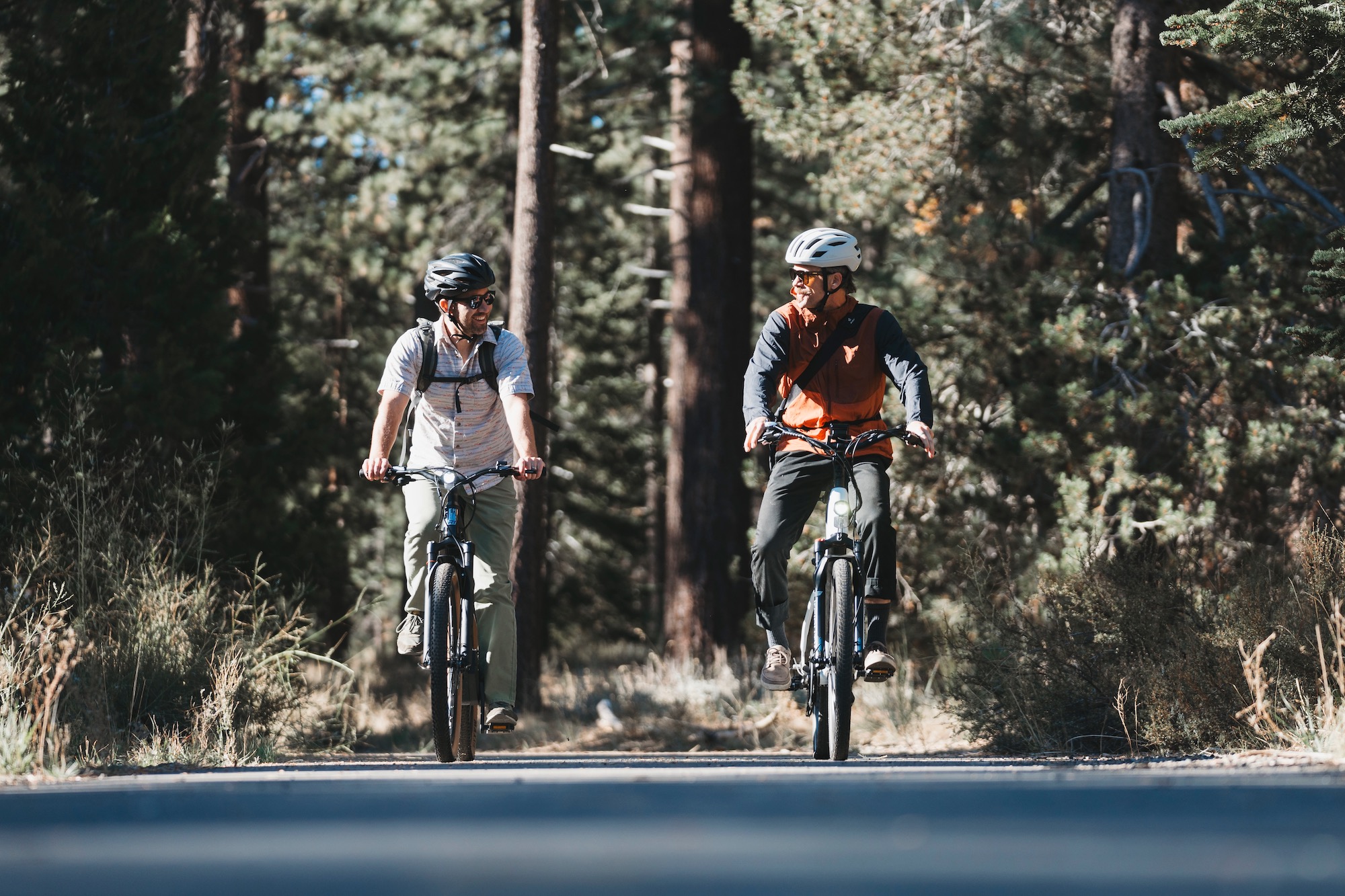
Our Testing Process
Our approach to testing commuter bikes is multi-faceted, but it varies somewhat depending on the bikes in question. However, there are many constants in our testing process. One of these is unboxing and assembling the bikes that are shipped directly to our testers.
This gives us firsthand insight into the relative difficulty of the assembly process and an understanding of what the average consumer is up against. Once assembled, we typically weigh each model for comparison to manufacturers’ claims.
Another constant is using each bike as it was intended and taking it out for weeks to months of test rides during our daily routines. From trips to the office and errands around town to pleasure rides and specific handling tests, we spend many hours riding each one.
This gives us a chance to see how each model performs in a range of situations, speeds, handling scenarios, and surface conditions. It also provides insight into the overall comfort of the bikes, the quality and performance of the components, and each model’s versatility.
Additionally, we consider the quality and usefulness of included features like fenders, lights, and racks and their impact on the user experience.
For the electric models, we assess all of the e-bike components, including the controls, display, and motor system. We pay very close attention to the motor’s power output, the feel/quality of the pedal assistance, the number of assist levels, throttle, and top speeds. We also go as long as possible between battery charges to get a feel for the real-world range potential of each bike and its battery.
For bikes with unique features, like the folding models, we go out of our way to test them. We fold and unfold them numerous times, load them into vehicles, stuff them in closets, and get a feel for carting them around in the ways you might if you owned one.
Buyer’s Guide: How to Choose a Commuter Bike
Realistically, any bike can work as a commuter bike, but there are styles of bikes and features that make some bikes better suited to the task than others. As you dream up your perfect commuter bike, consider these factors: where you’ll ride, how you’ll use the bike, the required maintenance, and your budget. And, with electric bikes continuing to grow in popularity, consider whether you want to pedal with your own power or with the assistance of a motor.
If you’re a commuter who is short on storage space or needs a more portable option for taking on the bus, train, or into the office, it’s worth checking out our guide to the best folding electric bikes to find out if they might better suit your needs.
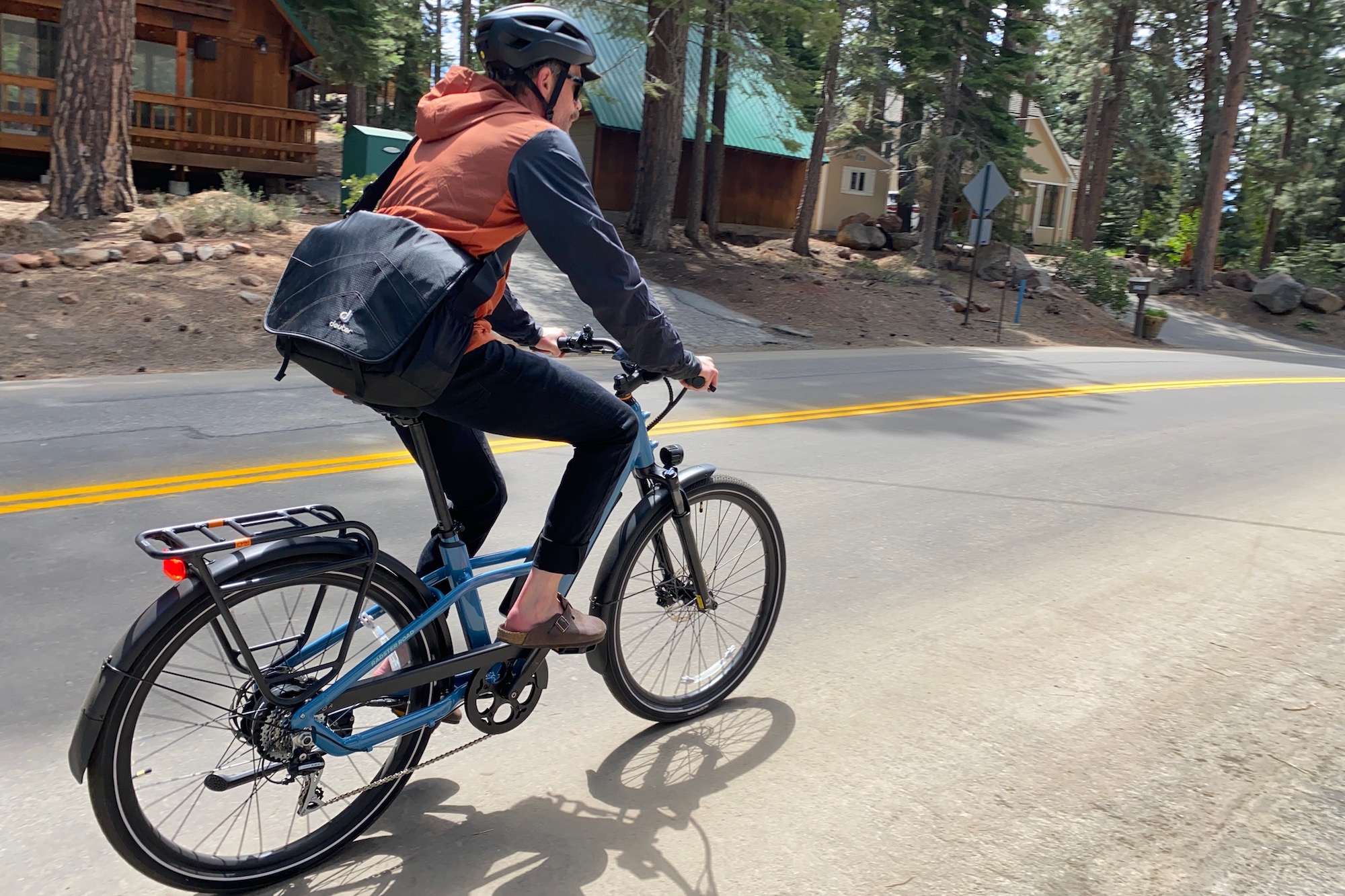
Electric vs. Non-Electric
Electric bikes have exploded in popularity in recent years. In many places, they are probably even more popular than non-electric bikes. While plenty of people still choose to ride a bike under their own power, it’s easy to see why others appreciate the assistance of a motor to move faster and more easily. Depending on the length of your commute, the terrain, or your fitness level, you may want to consider an electric commuter bike.
What works best for you comes down to personal preference, as there are plenty of great commuter bike options that come with or without motors. Either way, you’re still getting outside, spending less on fuel, and keeping your vehicle off the roadway.
Above, we cover several of the best affordable electric commuter bikes that we’ve tested. While they are similar to non-electric models in many ways, they set themselves apart by having a motor, a battery to power that motor, and e-bike controls. These components add weight to the bikes, although that is typically offset by the pedal assistance they provide.
Electric Bike Motors
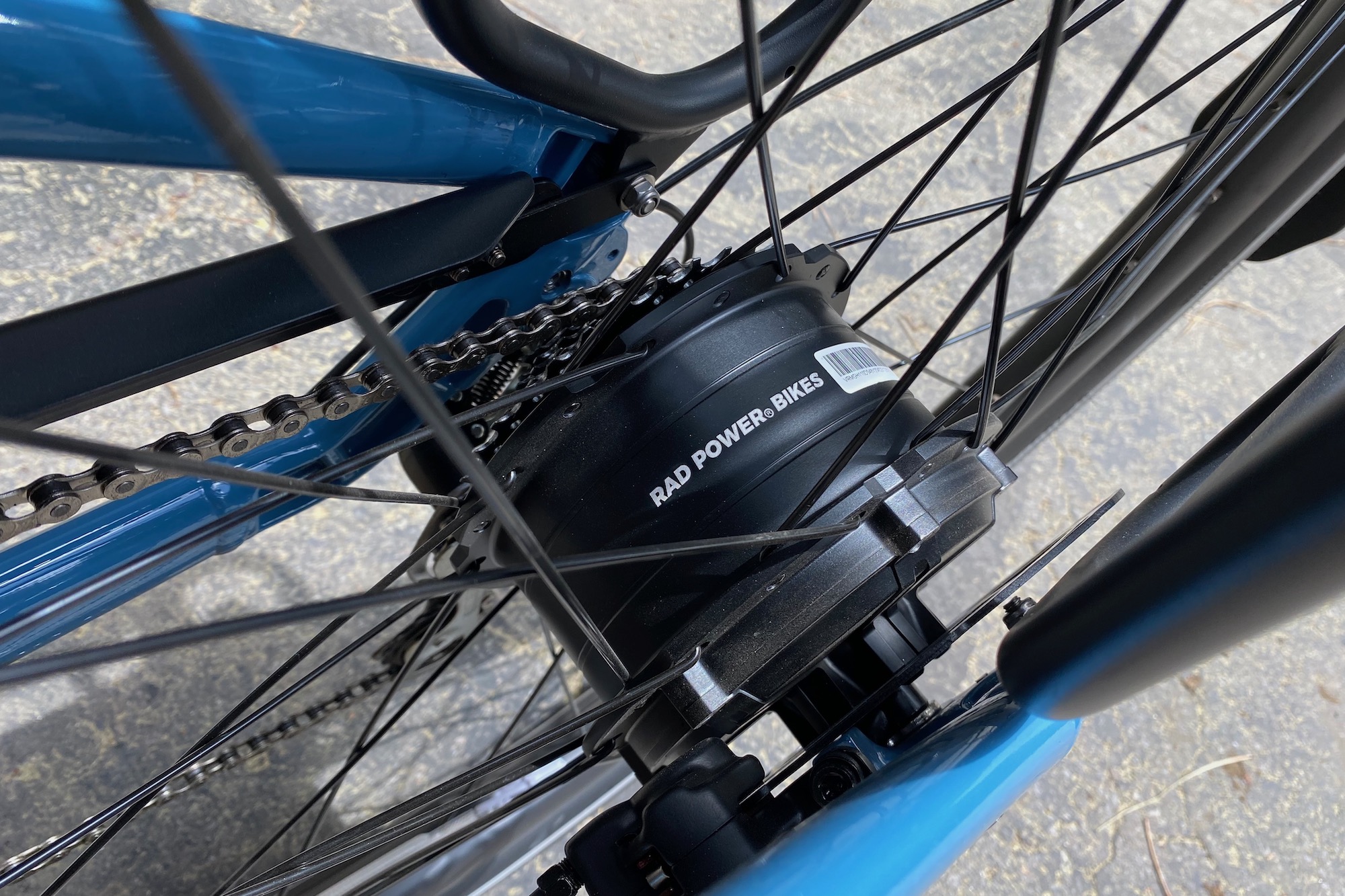
Electric bikes require a motor that provides support for your pedaling efforts and, in some cases, can propel you forward using a throttle. In general, most e-bikes have multiple pedal assist levels that provide increasing levels of support that the rider can choose between depending on the situation and how fast you want to go.
The assist level is usually changed by pressing buttons near the left grip to shift up and down through them, while the assist level, speed, and battery life are shown on a display.
E-bike motors fall into two basic categories: rear hub and mid-drive. As the name suggests, rear hub motors are contained in the hub of the rear wheel and add power to the wheel when the pedals are turning. They come with varying levels of power, with most falling somewhere between 250W and 750W. The higher the number, the more torque and power output they provide.
Rear hub motors also provide the option for e-bikes to have a throttle that can propel you forward without pedaling, which can be useful when starting from a stop or when you’re just feeling lazy. In general, rear hub motors are less expensive and easier to replace than mid-drive motors, but they also feel a bit less refined. The Rad Power Radster Road, Lectric XPress 750, and the Aventon Soltera.2 all have rear hub motors. You’ll notice that these are also the least expensive electric bikes on our list.
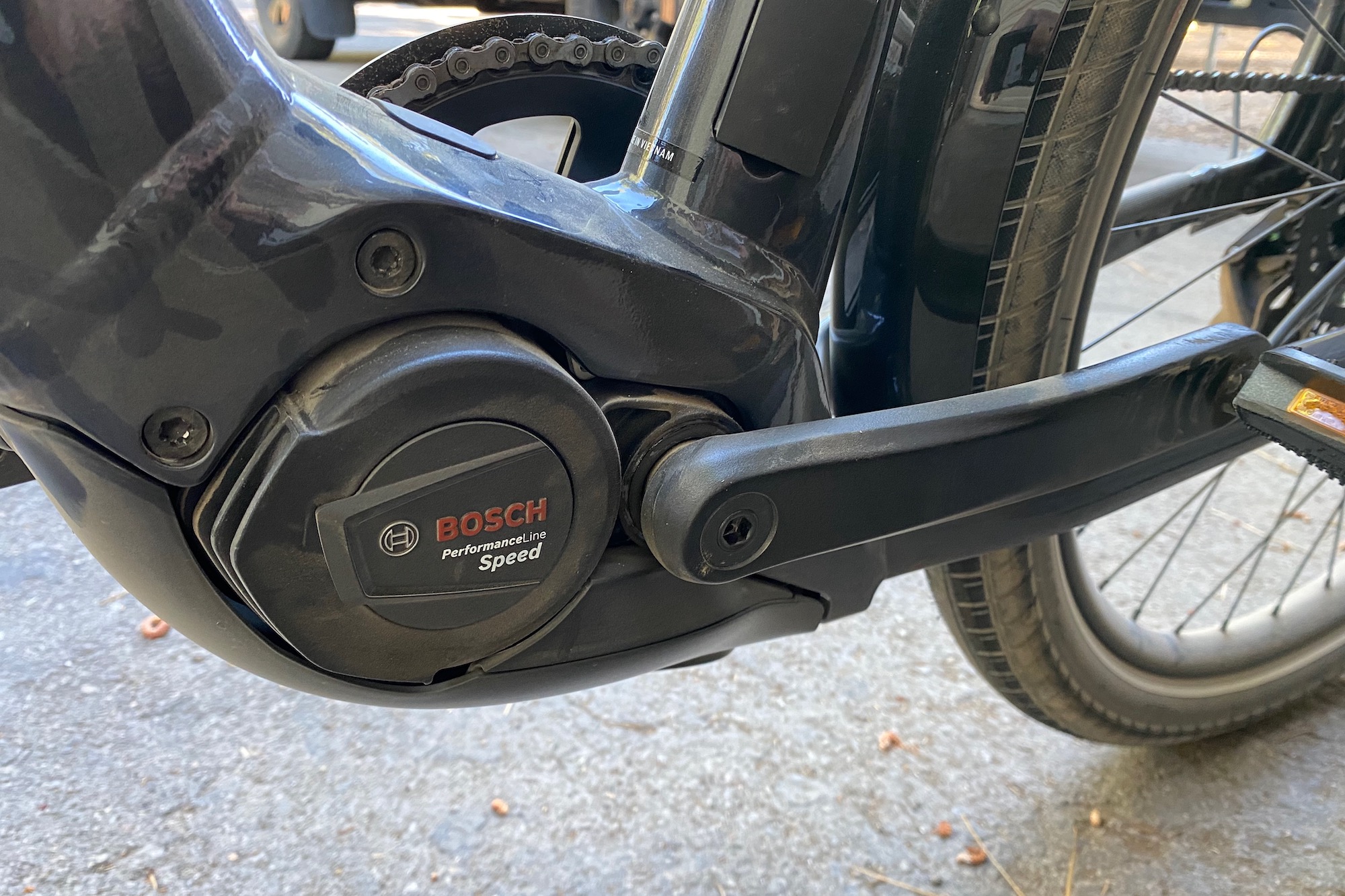
Mid-drive motors are different in that they are positioned in the middle of the bike by the cranks. The crank spindle passes through the motor system and provides pedal assistance directly into the drivetrain at the cranks. These systems typically use more advanced torque sensors, which results in a more natural feeling and refined power delivery that aligns better with the rider’s pedaling input.
The motor’s location is low and centered in the bike, which also provides a better weight balance for natural handling. Mid-drive systems don’t provide the option of using a throttle, however, so that is a consideration if that’s important to you. Generally speaking, mid-drive motors are a bit more expensive and found on higher-priced electric bikes like the Trek Allant+ 7S Gen 2, Priority Current, Ride1Up Prodigy V2, Orbea Diem, Specialized Turbo Vado SL Carbon, and the Tern HSD P5i.
Electric Bike Batteries
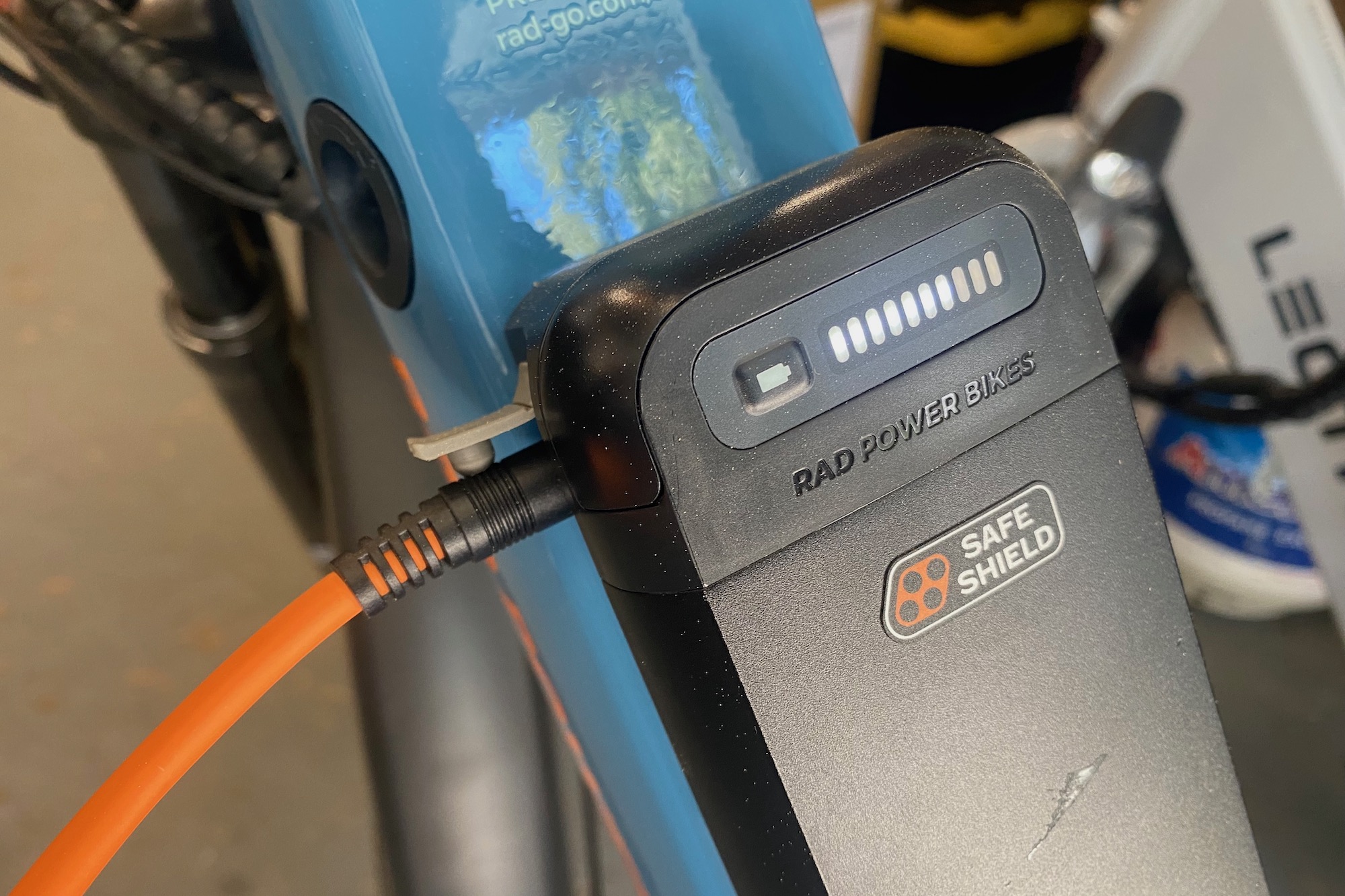
Electric bike motors are dependent on batteries for power. The size of the battery is the main factor that influences a bike’s range — the distance you can ride on a single charge. Of course, other factors influence range, such as your pedaling effort, terrain, the level of pedal assist, temperature, and more. A battery’s size also plays a role in a bike’s weight, as batteries are dense and quite heavy.
Battery capacities are typically listed in Watt-hours (Wh). This is essentially a battery’s Volts x Amp-hours. The more Watt-hours, the larger the storage capacity. The models we tested range between 345 Wh for the Aventon Soltera.2 up to 720 Wh for the Rad Power Radster Road. Generally speaking, most electric bikes also have a display that provides a rough estimate of the remaining battery life as you ride.
When considering an electric commuter bike, it’s helpful to consider how far you commute so you can get one with a battery that will get you there and back again. Most electric bikes will easily get you 20 to 30 miles on a charge, and often quite a bit more depending on how much power you use and the storage capacity of the battery.
Electric Bike Classes
E-bikes are divided into three classes with differences based on top speed and whether or not the bike is equipped with a throttle. This is important because different areas may have different regulations and speed limits. We recommend checking the local regulations where you live and ride to ensure you are in compliance.
- Class 1: Electric bikes with a top speed of up to 20 mph using pedal assist. These bikes do not include a throttle.
- Class 2: Electric bikes with a top speed of up to 20 mph using pedal assist or a throttle.
- Class 3: Electric bikes with a top speed of up to 28 mph using pedal assist. These bikes may or may not include a throttle. If there is a throttle, it is limited to a top speed of 20 mph.
It is important to note that many bikes can be switched between e-bike classes by making changes to the bike’s settings. For example, the Rad Power Radster Road ships in class 2 settings, but the user can bump the top speed up to 28 mph/class 3 or disable the throttle to make it class 1.
Overall Terrain
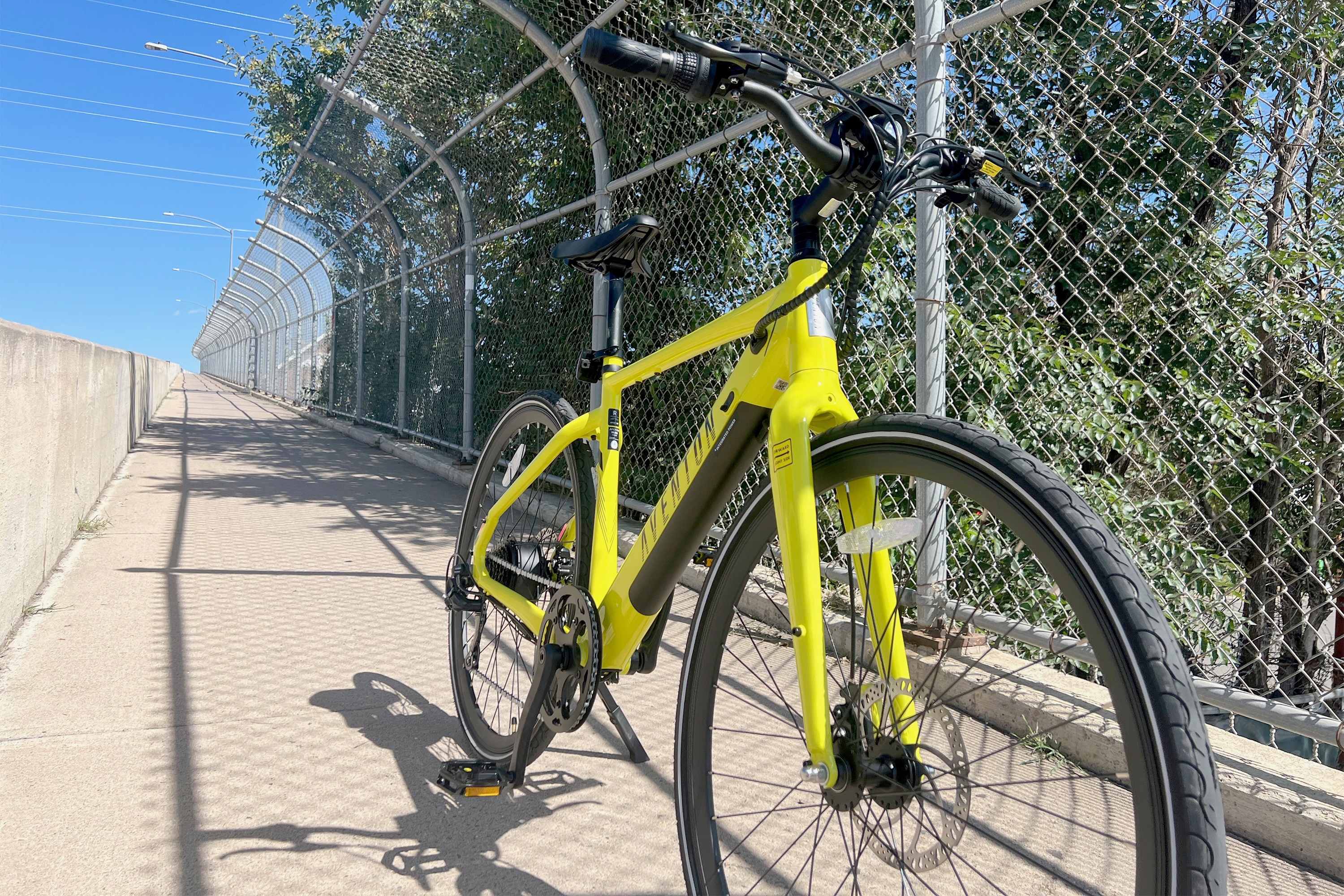
For those who need to commute strictly on road and paved bike paths, consider how hilly the routes will be. Will you need to climb often, up steep sections, or for long periods? Will you mostly cruise across flats? The wider the range of gears in your drivetrain, the easier your bike will be for pedaling up steeper hills. If you’re mostly just riding around on flat ground, a simple single-speed may work just fine.
Also, think about the condition of the ground. Is the pavement smooth? Will there be a smattering of potholes, cracks, or sidewalk drops? Some riders might also need or prefer to pedal dirt roads, gravel, and hard-packed or bumpy trails during their commute.
If you’ll be covering a wide mix of terrain and surfaces, you might want to look at bikes with wider tires and front suspension to help absorb the jolts and provide more stability. In extreme cases, a fat tire bike might even be the best option. Otherwise, slightly narrower tires and a fully rigid frame feel good at high speeds on smooth and firm surfaces.
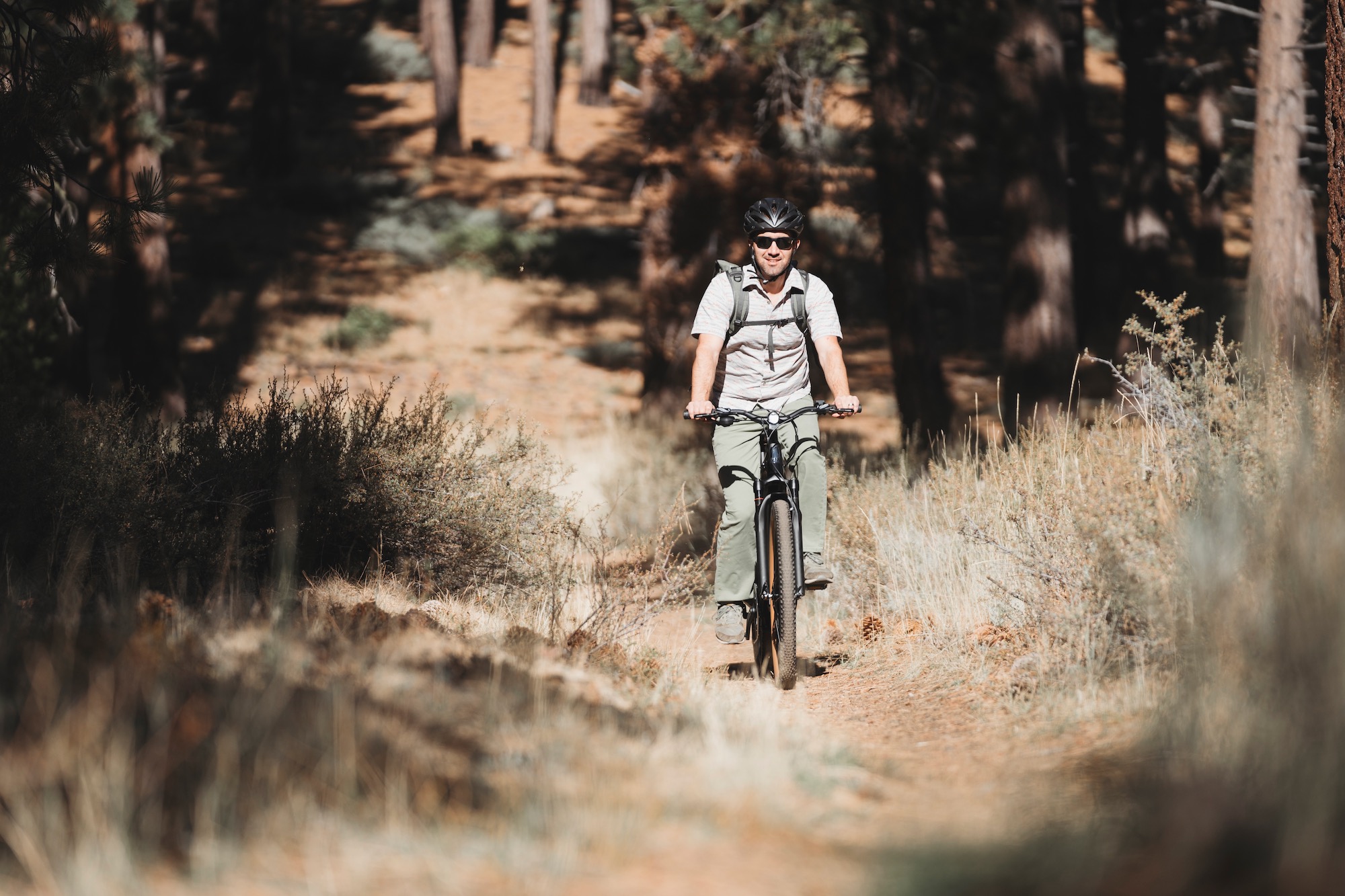
Primary Purpose
No matter where you intend to ride, make a purchase that supports the conditions and how you pedal the majority of the time. That way, you’ll be comfortable and have more fun in the saddle. Also, consider exactly how you like to ride.
Do you want to be more upright? Then, you may want a hybrid or mountain bike. Do you want to be more aerodynamic and don’t mind being more bent over? A bike with drop bars for road or gravel riding might best suit your needs and preferences.
Some bikes are well-made for the sport of road cycling, downhill mountain biking, or comfortably moseying around small towns. Most commuter bikes aren’t that. We’ve summarized a handful of diverse commuter bikes made for simple, efficient, dependable trips from point A to point B. Some of these designs are also a match for riding easy or moderate trails or for long bikepacking tours, like the Surly Disc Trucker.
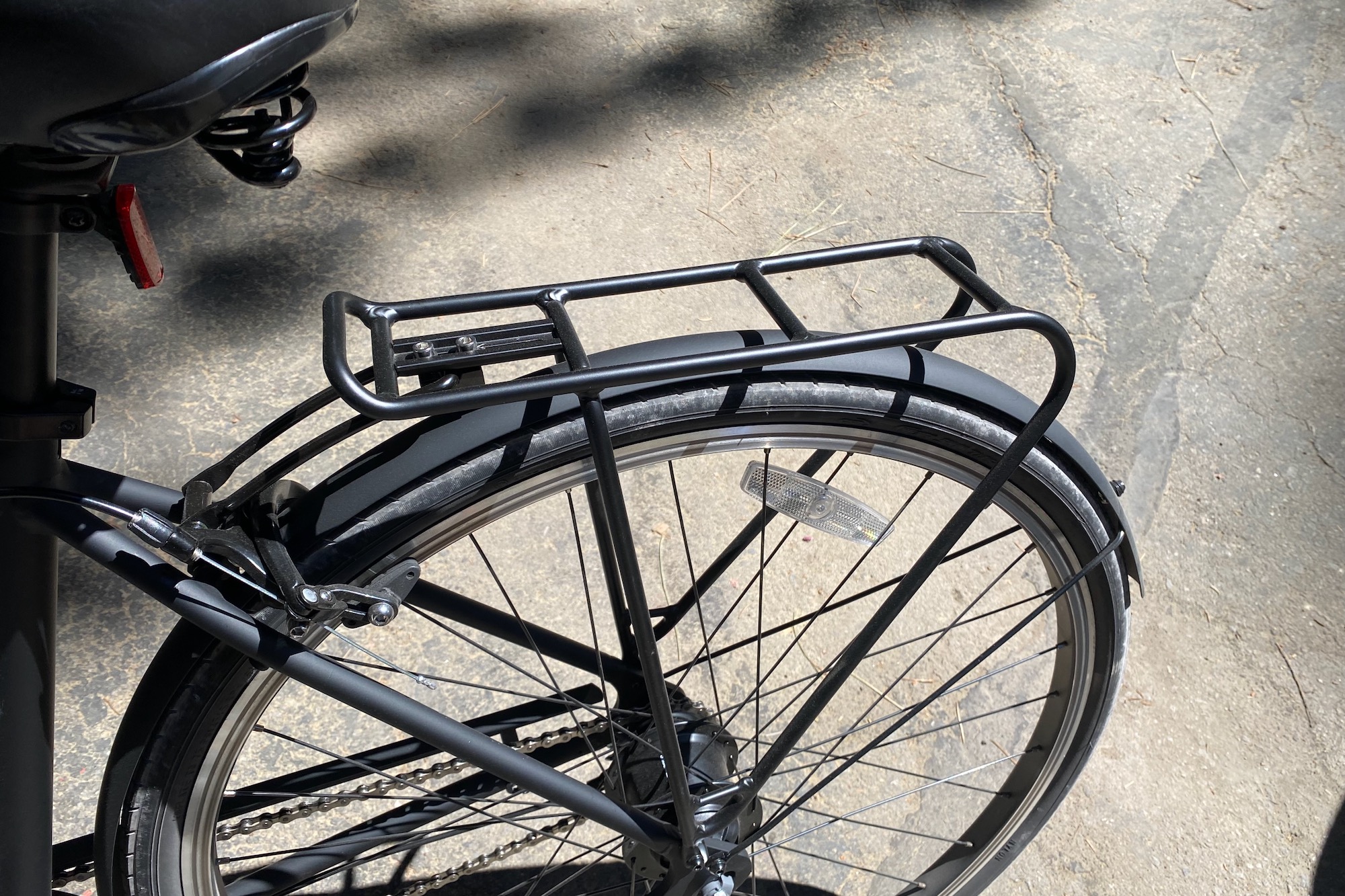
If you need to transport cargo on your bike, you’ll need to get one with a rack or mount points (braze-ons) so you can add racks. Some bikes, like the Electra Loft 7i and Rad Power Radster Road, come with rear racks, so you can easily add a basket or panniers to carry some items.
If you really need to haul some gear, an electric cargo bike like the Tern HSD P5i can handle heavier and bulkier loads. Even then, dialing in your cargo-carrying setup often involves paying a little extra for accessories but can make your life so much easier for getting your gear to and from work or when running errands around town.
Define Your Budget
As with any big purchase, you’ll need to determine the boundaries of your budget. The goal should be to buy the best bike you can afford, so it’s hopefully one you’ll love and use for many years. With commuter bikes, and most other bikes for that matter, you get what you pay for.
Higher-end bikes are usually more expensive because of better-quality components like lighter and stronger frames, longer-wearing parts, or nicer wheels. They can also be pricier because they’re decked out with extra accessories like the lighting and fenders on the PRIORITY 600.
Or, they’re novel and more complicated to create, like the Tern Node D7i Folding Bike. Adding batteries and motors to electric bikes like the Rad Power Radster Road or the Aventon Soltera.2 also adds to the overall cost of a bike.
The right bike is the one that provides the maximum comfort and functionality for your daily travel. It should also fit your bandwidth and ability for maintenance (some pricier bikes can be easier to maintain).
A commuter bike can last many years and, therefore, should be seen as a long-term investment. Buy a bike that fits your budget but also offers room to accommodate the terrain you’ll need to cover on your way to and from work.
Be sure to contemplate any additional accessories you’ll want to purchase, such as fenders, racks, bike lights, or upgraded seats and pedals. Note that many of the bikes we’ve included on our list come with some of those features included in the purchase price.
Retail vs. Online Purchase
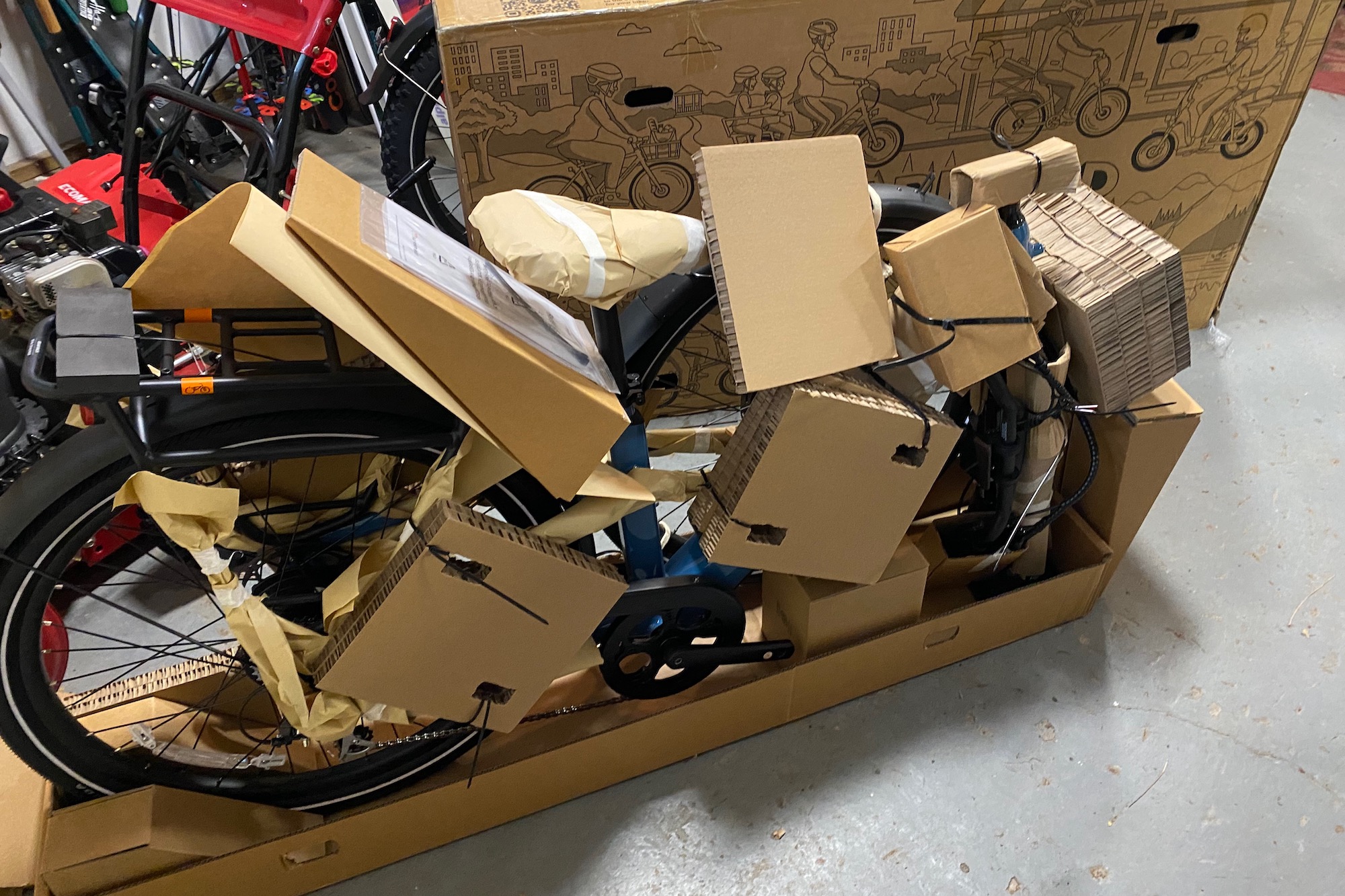
If you’re purchasing your new bike locally, you’ll often have the option to demo the bike before you buy it. Professionals will be on hand to offer additional recommendations and different components to better suit your skills and ambitions.
However, if you live in a rural, remote area without a bike retailer nearby, you’re in luck — purchasing online is easier than ever. Many brands have polished up their customer service for direct-to-consumer sales, so you can reach out with questions about the fit and components.
If you can’t demo a bike, make sure the manufacturer offers a no-questions-asked return policy. If a bike is the wrong size, you’ll want to be able to swap it out without getting charged.
You also may need to consider your bike mechanic skills. If purchasing a bike from your local bike shop, they will already have assembled your bike for you. If purchasing online, your bike will come in a box and will require some assembly (more or less depending on the type of bike you purchase).
Bike Fit
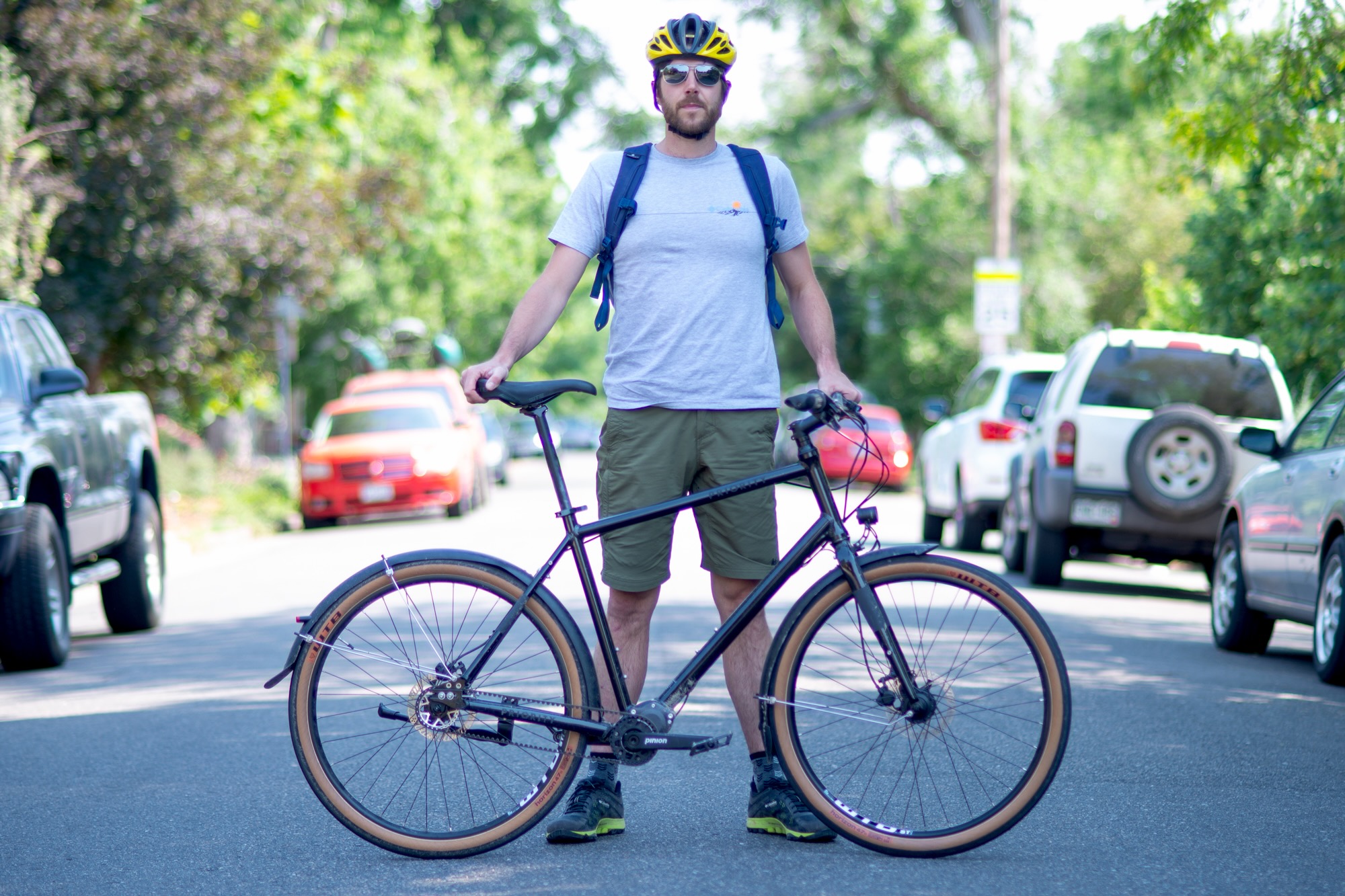
Whether you are buying in-store or online, you will need to know what size bike fits you. The best eyeball measurement for bike fit is that the seat of the bike hits the top of your hips. Also, you want the top tube of the bike (provided it is a diamond frame, or what most people call a step-over or “men’s bike”) to give an inch of clearance from your crotch.
If purchasing online, you can follow some general size charts provided on the manufacturer’s website. Our experience has shown these sizing charts to be quite accurate. Bear in mind that bike sizing is a very specific and individual science. It can vary depending on your torso size, inseam, etc. General guidelines may not always be correct.
Rigid Frame
A design without suspension is called a rigid bike. These static frames are generally less expensive compared to other frames.
They provide stability if you need to haul weight on your bike frame (like groceries or equipment for work) because the lack of suspension eliminates bounce, which can make pedaling less efficient. That said, they provide less forgiveness over rough terrain and can feel harsh on rough or cracked pavement.
Hardtail Bike
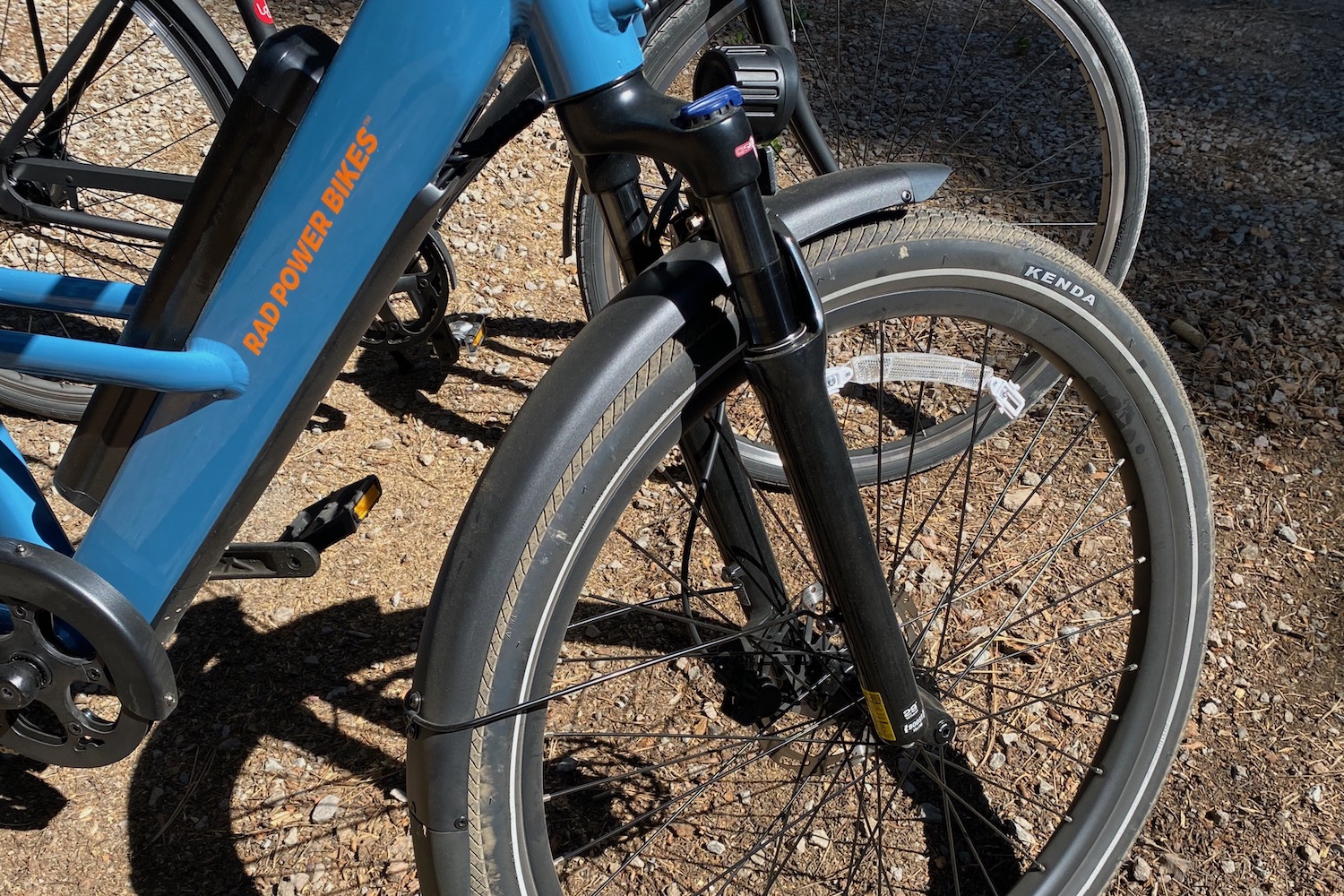
A hardtail bike has front suspension but no rear suspension. The front shock compresses and extends as you ride to absorb uneven contours. Hardtails are typically more expensive than bikes without suspension but are cheaper than full-suspension bikes.
Hardtails are a great option for routes with a mix of smooth and bumpy pavements, lots of curbs, or uneven dirt paths. Hardtails can be a good choice for both road commutes and smooth gravel trails, as long as the rider doesn’t mind not having a full-suspension configuration.
Frame Materials and Weight
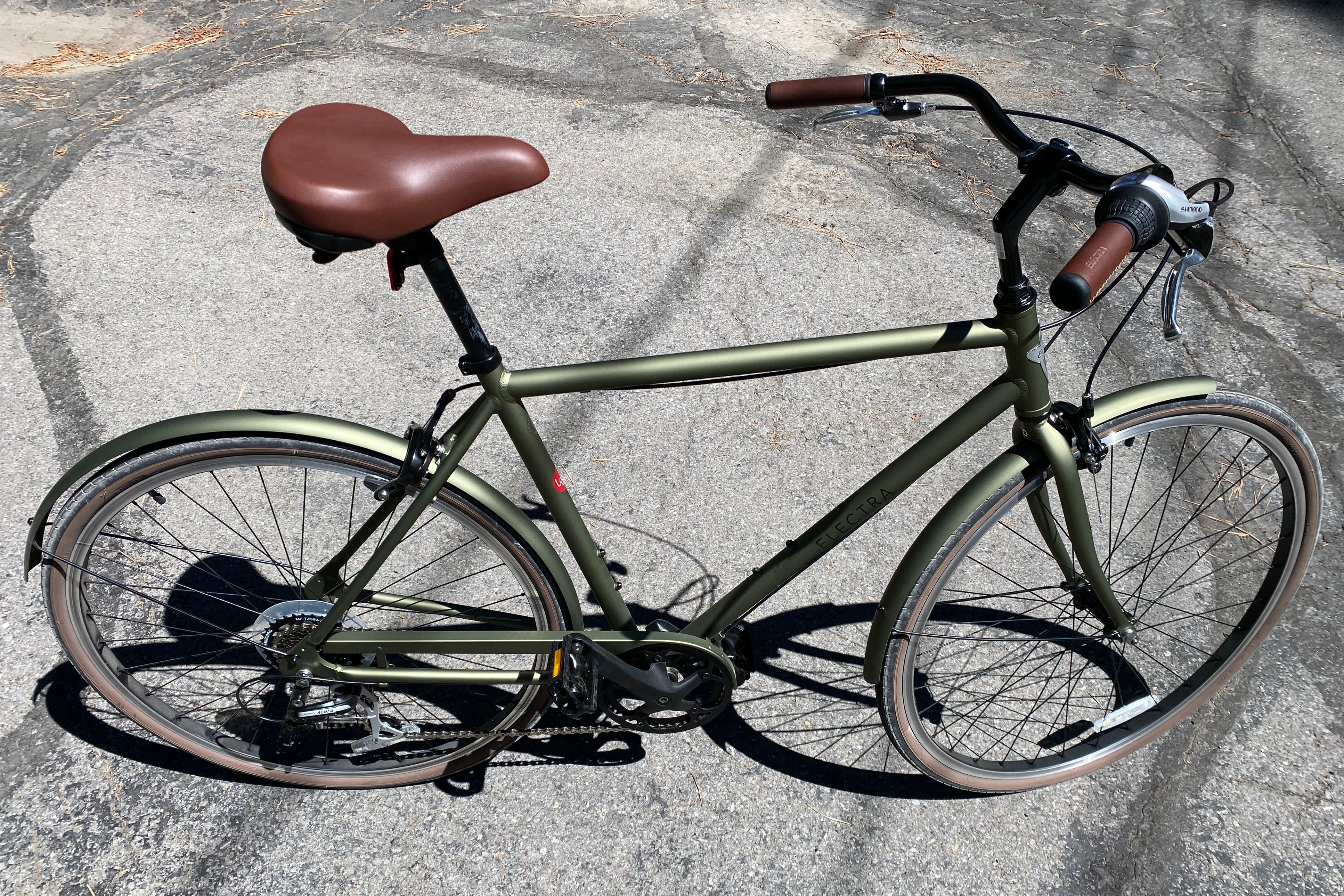
Commuter bike frames are typically made of aluminum or steel. Steel is heavier and lasts longer, but aluminum is also a durable option. The commuter bikes on our list range from 23 to 34 pounds for the non-electric models and up to a whopping 74 pounds for the electric Radster Road.
Weight is a big consideration for many commuters who need to pick up their bikes and carry them for any reason. All bikes are relatively easy to roll on their tires, but if you need to haul your bike up or down a flight or two of stairs to store it or get it in the office, then a lighter bike will make that easier.
Most of the non-electric models we tested are quite easy to handle. This is especially true of the folding models like the Brompton P-Line Explore, which weighs roughly 23 pounds and folds down to a tiny size for storage or transport.
The electric models are a different story. The bigger the battery and more powerful the motor, the more an e-bike weighs. Most people will be hard-pressed to carry the 74-pound Rad Power Radster Road just about anywhere. On the other end of the spectrum, the Aventon Soltera.2 is comparatively much easier to handle at 46 pounds, while the Velotric T1 ST Plus and the Specialized Turbo Vado SL Carbon both weigh right around 39 pounds. You can actually pick those bikes up and carry them up and down a flight of stairs or load them onto a hitch bike rack.
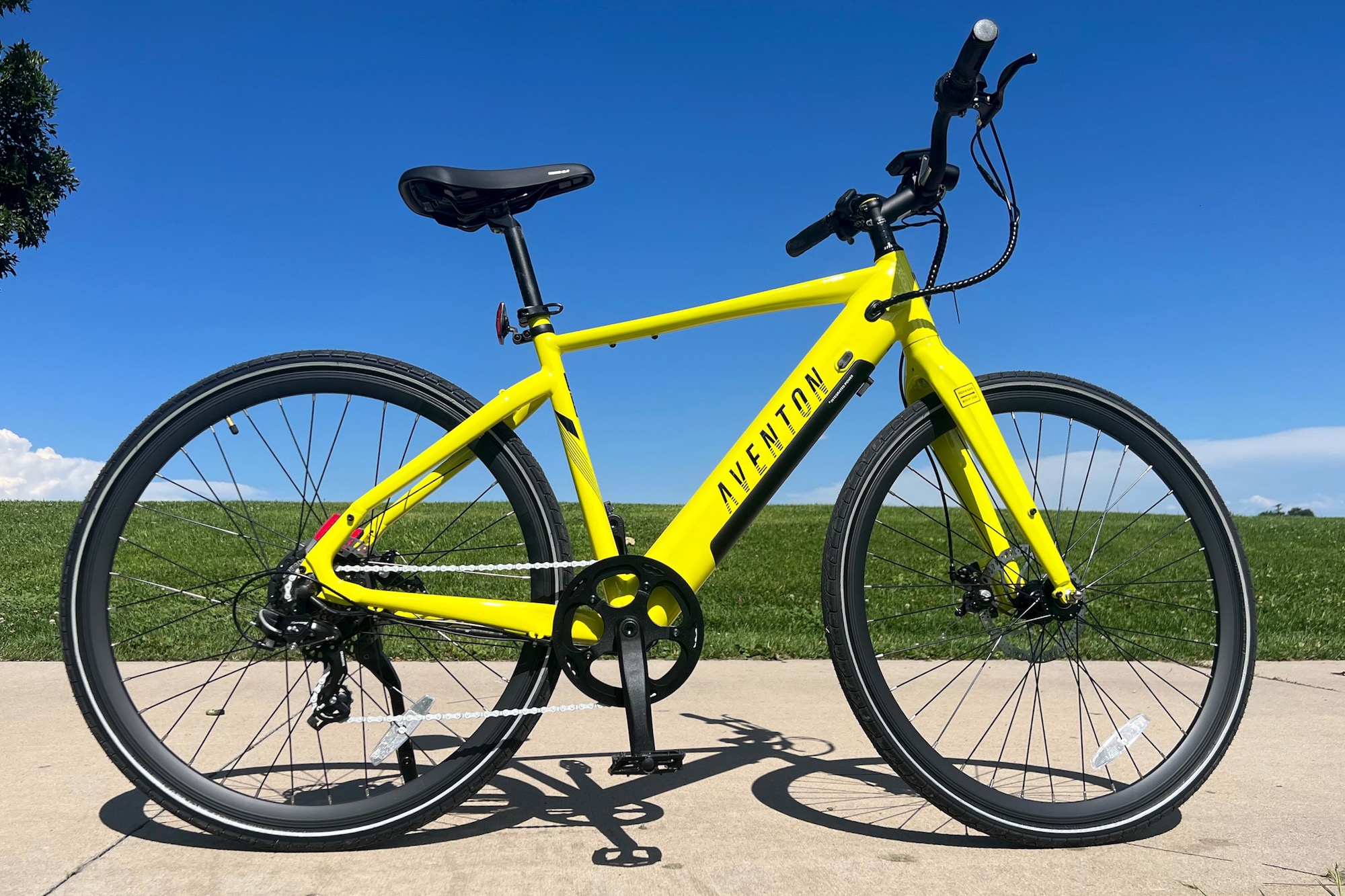
Drivetrain and Gears
These days, most commuter bikes come with a 1x drivetrain with a single chainring in the front and a range of gears in the rear. This kind of configuration means you will have one shifter instead of two, which simplifies things and keeps the handlebar/cockpit setup looking clean.
Some bikes, like the Co-op Cycles CTY 2.1, have a 2x or 3x drivetrain. That means there will be two or three chainrings in the front plus the range on the rear. Ultimately, this provides the rider with more gear options controlled with two shifters mounted to the handlebars.
The commuter bikes with gears in our guide feature anywhere from seven to 27 gears. The best setup depends on the terrain you’ll be riding and your personal preference.
Some of the geared bikes we tested use alternative drivetrains in the form of the internal geared hub on the Electra Loft 7i or the Pinion GearBox on the Priority 600. Taking the derailleur out of the equation makes for a cleaner-looking bike, and both systems also tend to be low maintenance, comparatively speaking.
Single Speeds
You’ll also come across single-speed bikes, a design with one gear and no shifters. Not all single-speeds are the same.
The power a cyclist can transfer into a single-speed bike is determined by the front chainring and rear cog’s circumference and the number of teeth. The number of teeth on the front divided by the number in the rear gives us a ratio, which is a metric used to understand the overall cadence and ability to accelerate or maintain speed. For instance, the State Bicycle Co. Wulf has a 44 x 16 gear ratio that allows for easier acceleration.
Given the lack of other gears, however, single-speed bikes are best suited to flatter terrain. They are simple and low-maintenance, but riding them up hills requires significant effort when you don’t have any easier gears to shift into.
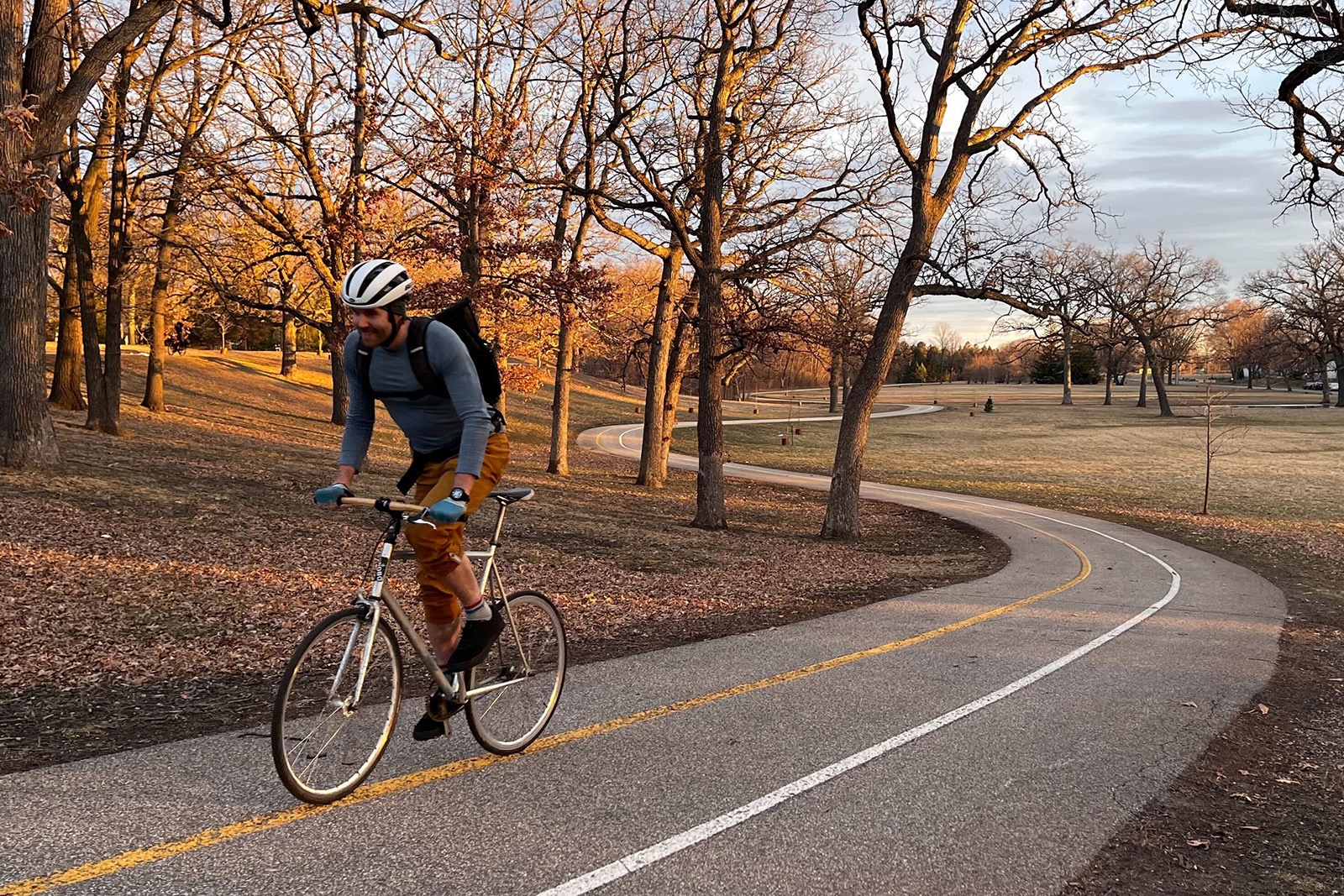
Fixies
A fixed-gear bike, or a fixie, is a specific type of single-speed bike. The drivetrain of a fixie has one gear, and it’s fixed to the rear wheel so the rider has to continuously pedal if the wheels are in motion. There’s no freewheel mechanism. Essentially, this means you can never coast if you like to let your legs rest on the downhills.
But if you want to perform some cool tricks, master a track stand, or practice your skids, a fixie will bring all the fun. The State Bicycle Co. Wulf has the ability to be a single-speed or a fixie, as it has a flip-flop hub. It depends on who you ask, but some even say that riding a fixed-gear bike can change your life.
Wheel Size
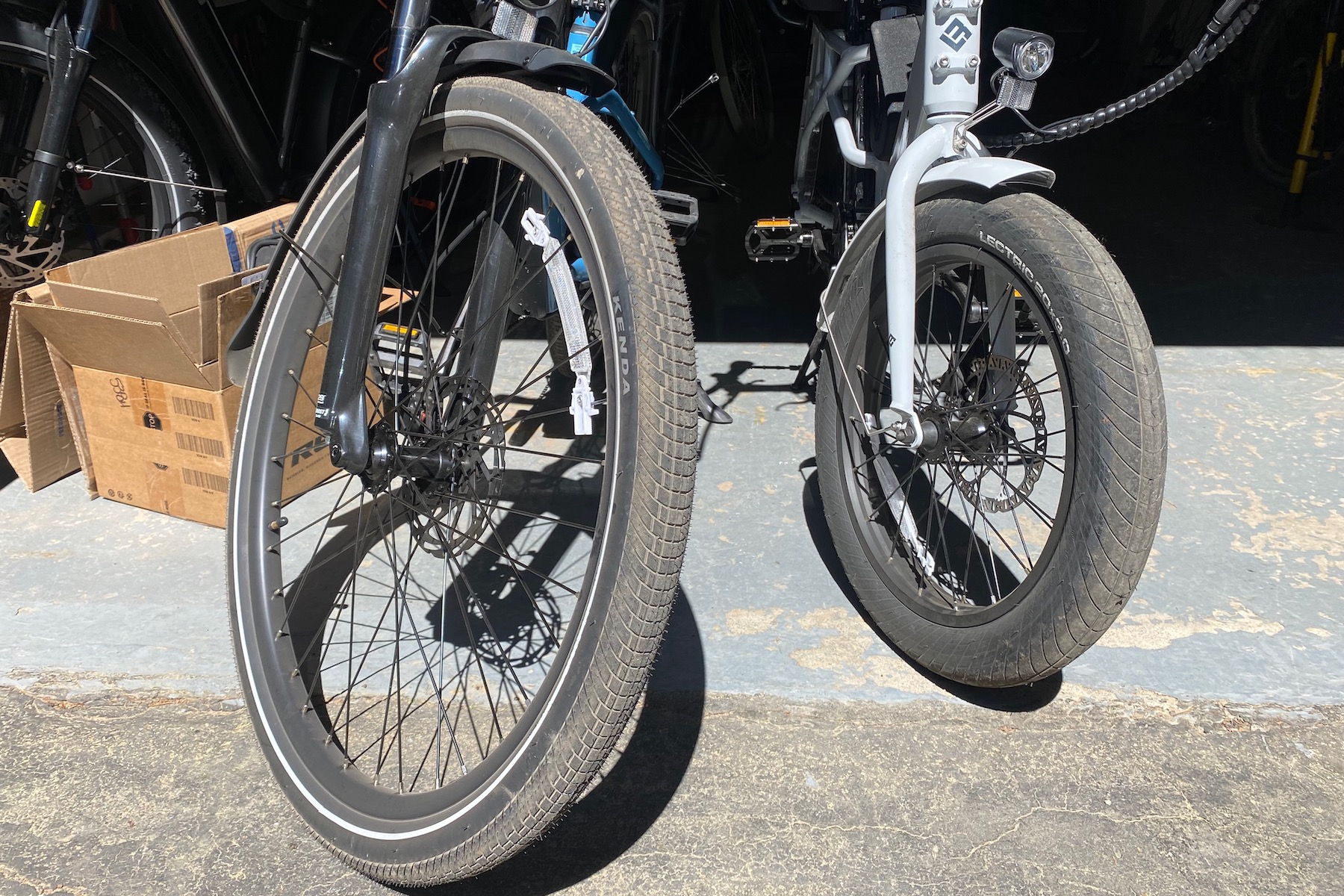
Commuter bikes are generally fitted with 24, 26, 27.5, or 29-inch wheels, which refers to the diameter. You’ll often see 27.5-inch wheels referred to as 650b and 29-inch wheels known as 29ers or 700c. Electric cargo bikes often have 20-inch wheels with the goal of keeping the bike’s center of gravity lower which can be hugely beneficial when loaded up with lots of weight.
The wheel size can change how a bike feels for the rider. A larger wheel diameter can feel more stable, has more surface contact and traction, and typically rolls over obstacles more easily for a smoother ride. Smaller wheels are nimble, easily maneuverable, and require less force to accelerate. The primary drawback of smaller wheels, like the 20-inch wheels on the Tern HSD P5i electric cargo bike, is that they can feel a bit less stable at speed and when turning.
Wheel size is a major contributor to the way a bike will ride, but it isn’t everything. The frame and geometry of any bike work together with wheel size to offer different strengths and characteristics. For this reason, wheel size on its own isn’t a good reason to choose a bike, especially for newer riders.
Tire Width and Tread
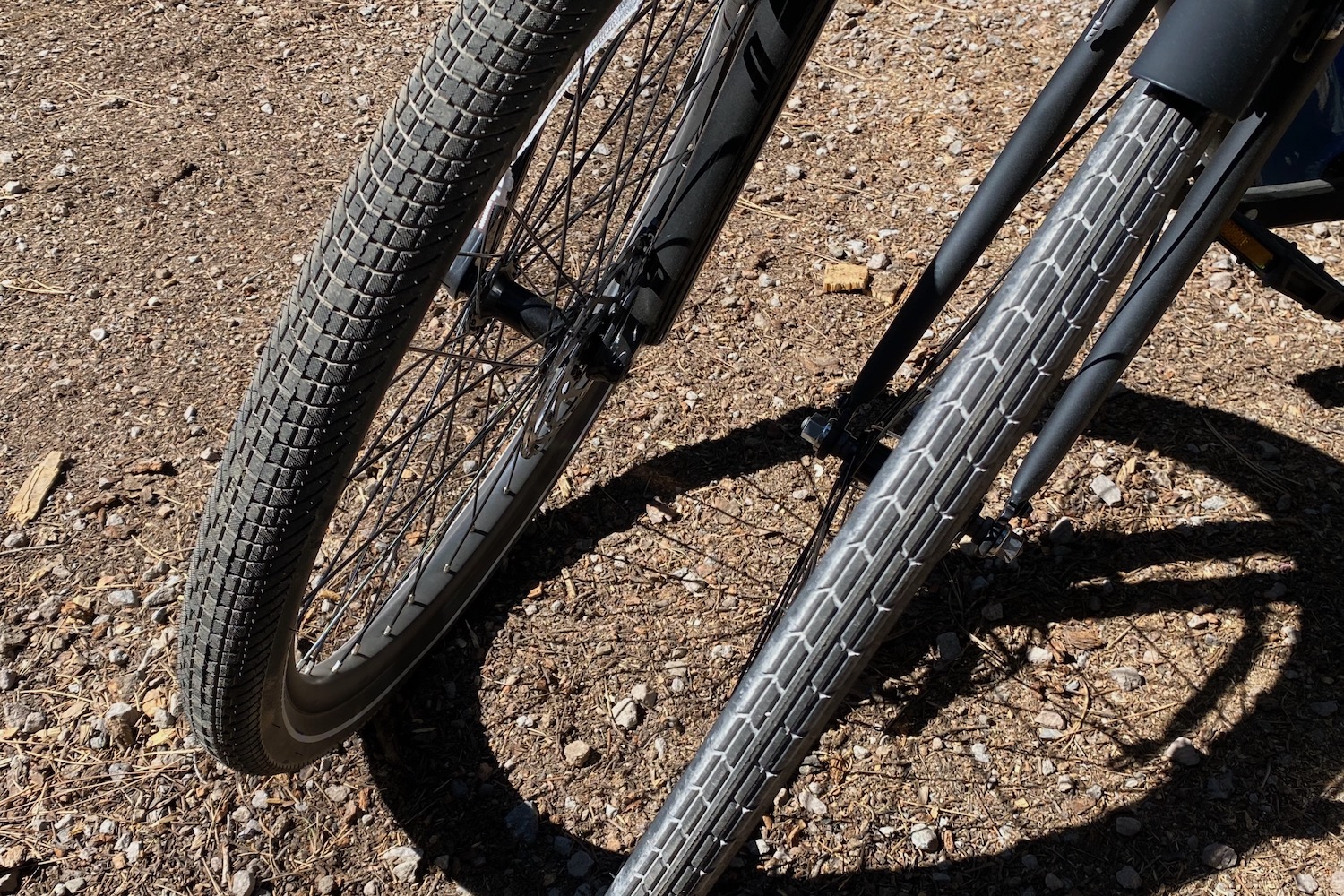
Tires can make a huge difference in the way your bike rides and handles the terrain and surfaces that you’ll be encountering on your commutes or pleasure rides. Matching your tires with your intended use is a great way to optimize your ride. Tires are also a relatively inexpensive part to replace, so you can always change them out down the line to better align with your needs.
The tire widths on our selected commuter bikes range from 25 to 61 mm wide. For comparison, most road bikes are outfitted with tires that have a 23-30mm width. Skinnier, firmer tires tend to roll a bit faster and feel more nimble, but the reduction in rolling resistance usually comes at the cost of comfort. A width above 30 mm will provide a slightly more comfortable ride. As tire width increases, so does the air volume and, therefore, the amount of cushioning they provide.
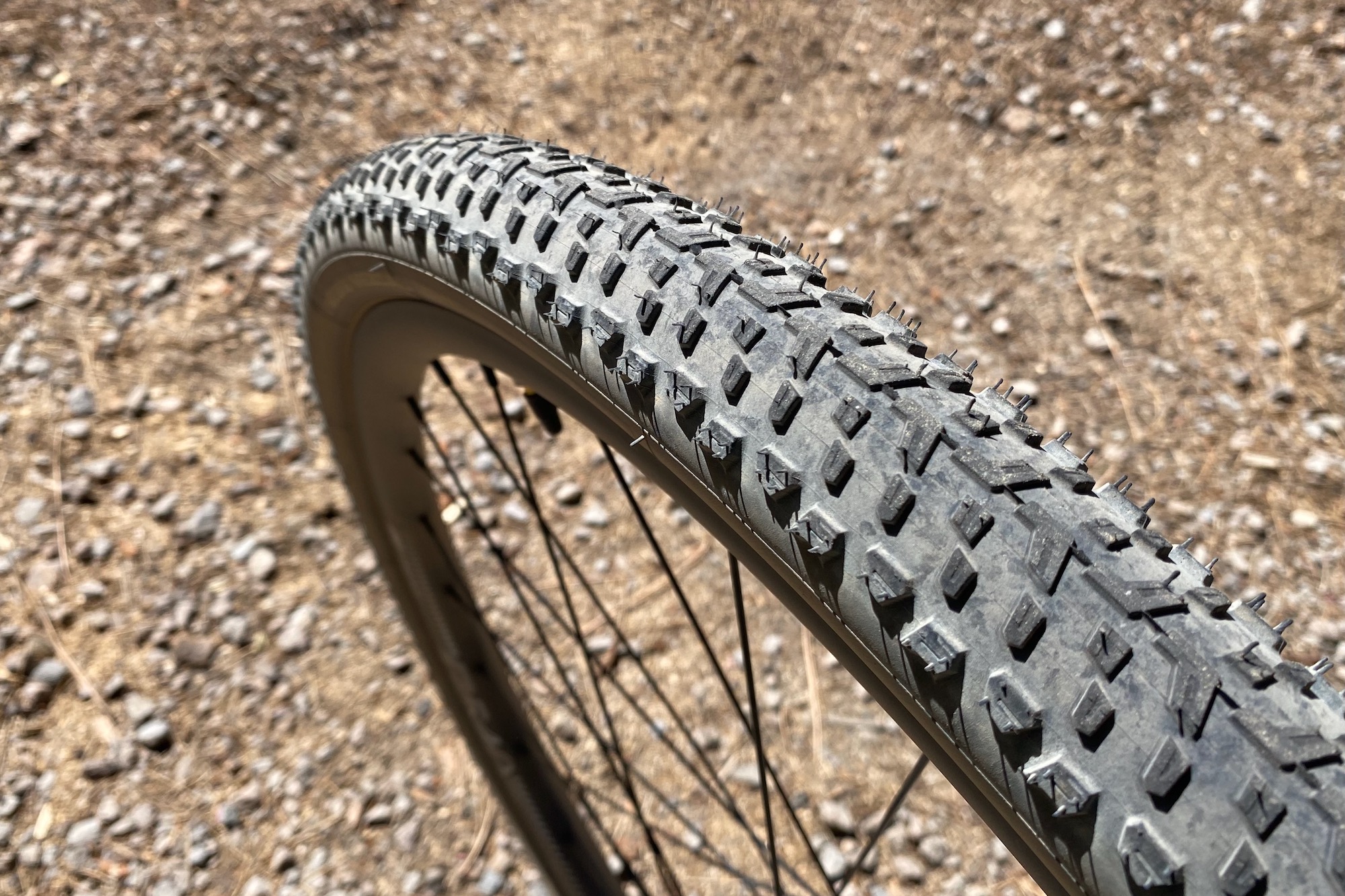
That said, there are no hard-and-fast rules, and tire choice depends a lot on rider preference and the surfaces you intend to ride on. If you’re only riding on smooth paved roads or bike paths, a fast-rolling street tire will likely be the best bet for efficiency. If you venture onto gravel roads, dirt trails, or super rough, broken pavement, then a tire with a bit more girth and some knobby tread may be better to add some grip, stability, and comfort.
Another consideration for tires and wheels is tubeless compatibility. Tubeless tires generally result in fewer flats and quicker puncture fixes. They also provide more control and better handling, particularly on gravel and dirt surfaces. The PRIORITY 600, Eaglebear Black Everyday, and the Surly Disc Trucker boast tubeless compatibility.
Maintenance

When you’re counting on your bike for daily commutes, it’s nice for it to be as low maintenance as possible. It’s great to be able to count on your bike to get you to and from the office or on trips around town without having to give it too much thought or take it to the bike shop frequently. On the other hand, maintenance may not be a big deal if you’re a capable bike mechanic and you already have a quality bike repair stand in your home workshop.
We often suggest a gearbox or internal hub-geared bike for those who want less maintenance. These bikes have all the gears in the rear hub (think the rear axle) or a gearbox at the bottom bracket (the part your cranks and pedals attach to) as opposed to a derailleur — the shifting system most bikes are equipped with, which has multiple chainrings on the rear wheel. These include the PRIORITY 600, which has a 12-speed Pinion gearbox, and the Electra Loft 7i, with a seven-speed internal geared hub.
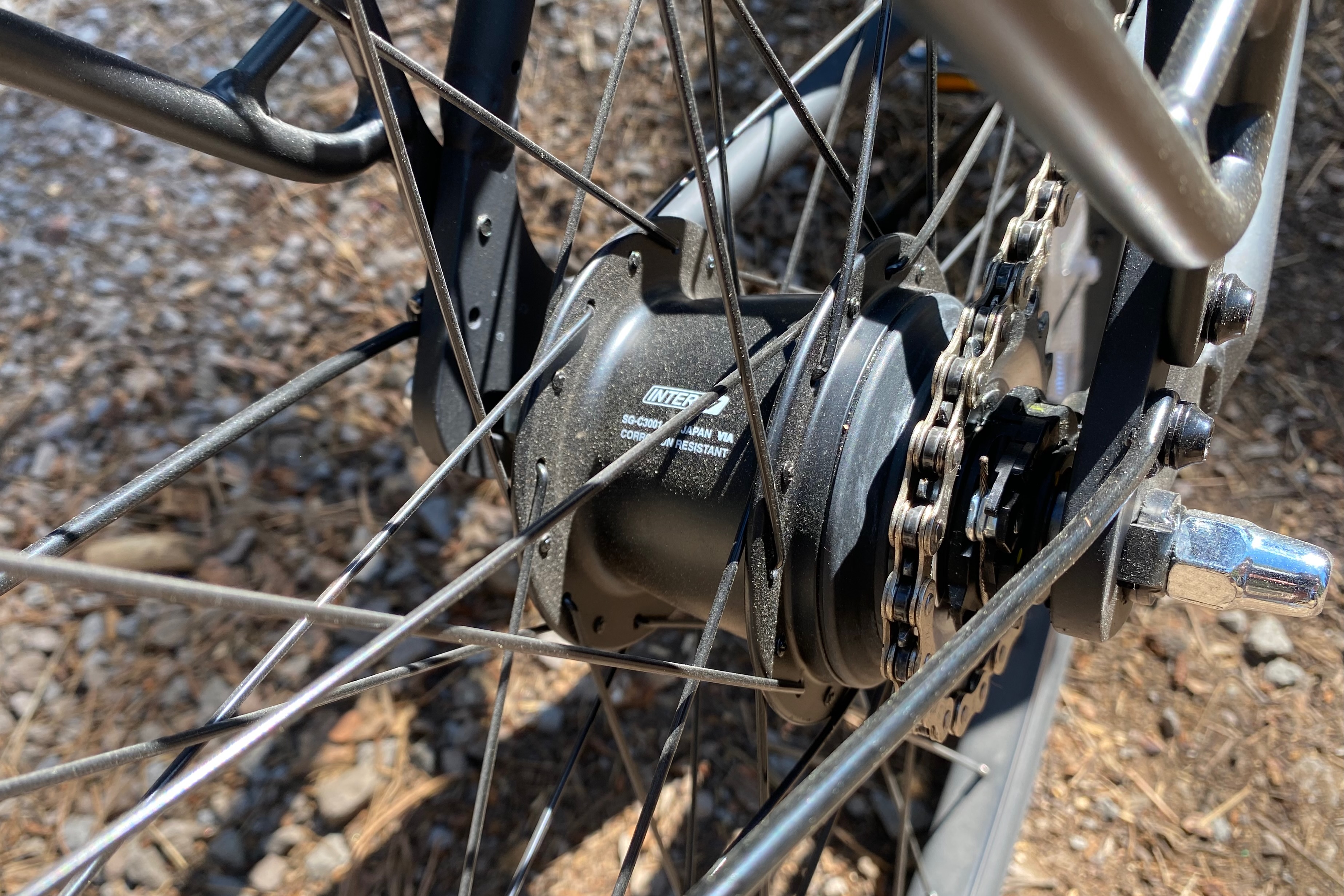
The advantage of an internal hub or gearbox is that the gears are all inside the hub or gearbox and, therefore, get less dirty. Also, you don’t risk bumping them and messing up the alignment. Single-speed drivetrains are also very low maintenance, given the lack of a shifter, cable, and derailleur.
A derailleur system requires more frequent adjustments of cable tension to keep shifting and performing well. Keeping the chainrings clean and lubing and cleaning the chain can also be a task. You will also need to replace the chain and cogs as they wear. With some effort, this is easier to learn and maintain on your own, but greasing/oiling an internal hub is more specialized.
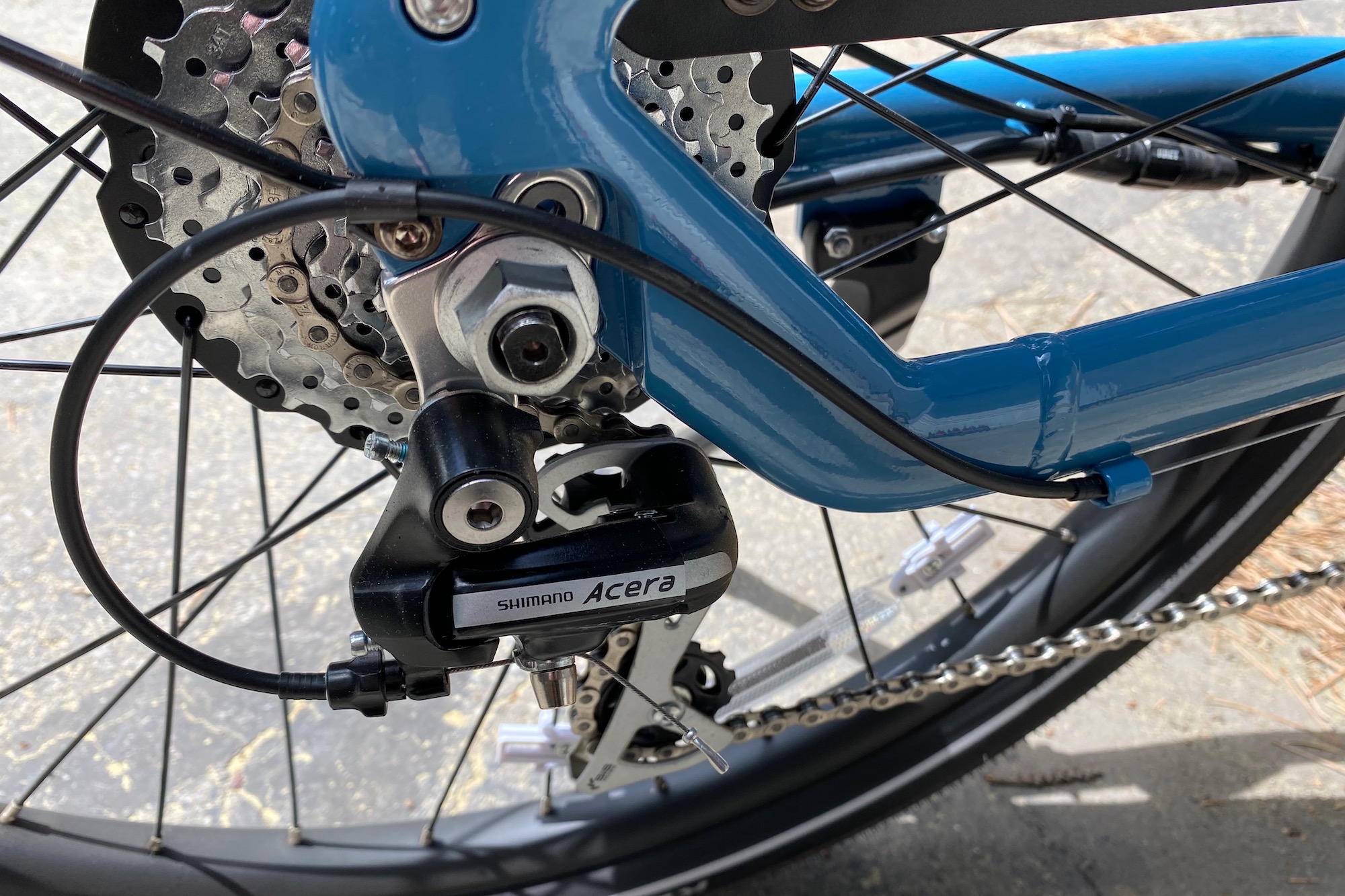
A few basic maintenance practices will prolong the life of your components and boost your bike’s performance (and your fun). Lube your drivetrain regularly with bicycle-specific lubricant. Bike lube cleans the chain by removing grit and grime while also reducing wear and friction. It’s best to leave lube on the chain overnight. Before you ride the following day, spin the pedals backward while you hold a rag against the chain to remove excess lube and sludge.
Make sure your tires have adequate air in them before every ride. Unlike car tires, bike tires lose air more quickly. Each tire has a recommended psi (pound-force per square inch) printed on its side. Maintaining appropriate air pressure in your tires reduces the risk of flat tires and is easy and quick with a quality bike pump.
Price & Value
Commuter bikes come in a very wide range of prices. From non-electric to electric models and budget builds to high-end superbikes, there are plenty of options to choose from to get you from point A to point B. All of the options in this guide are great, but what do you get for your money? In general, spending more gets you nicer components, fancier frame materials, and more included features. For electric models, you typically pay for more powerful motors, smoother power delivery, and better battery/system integration.
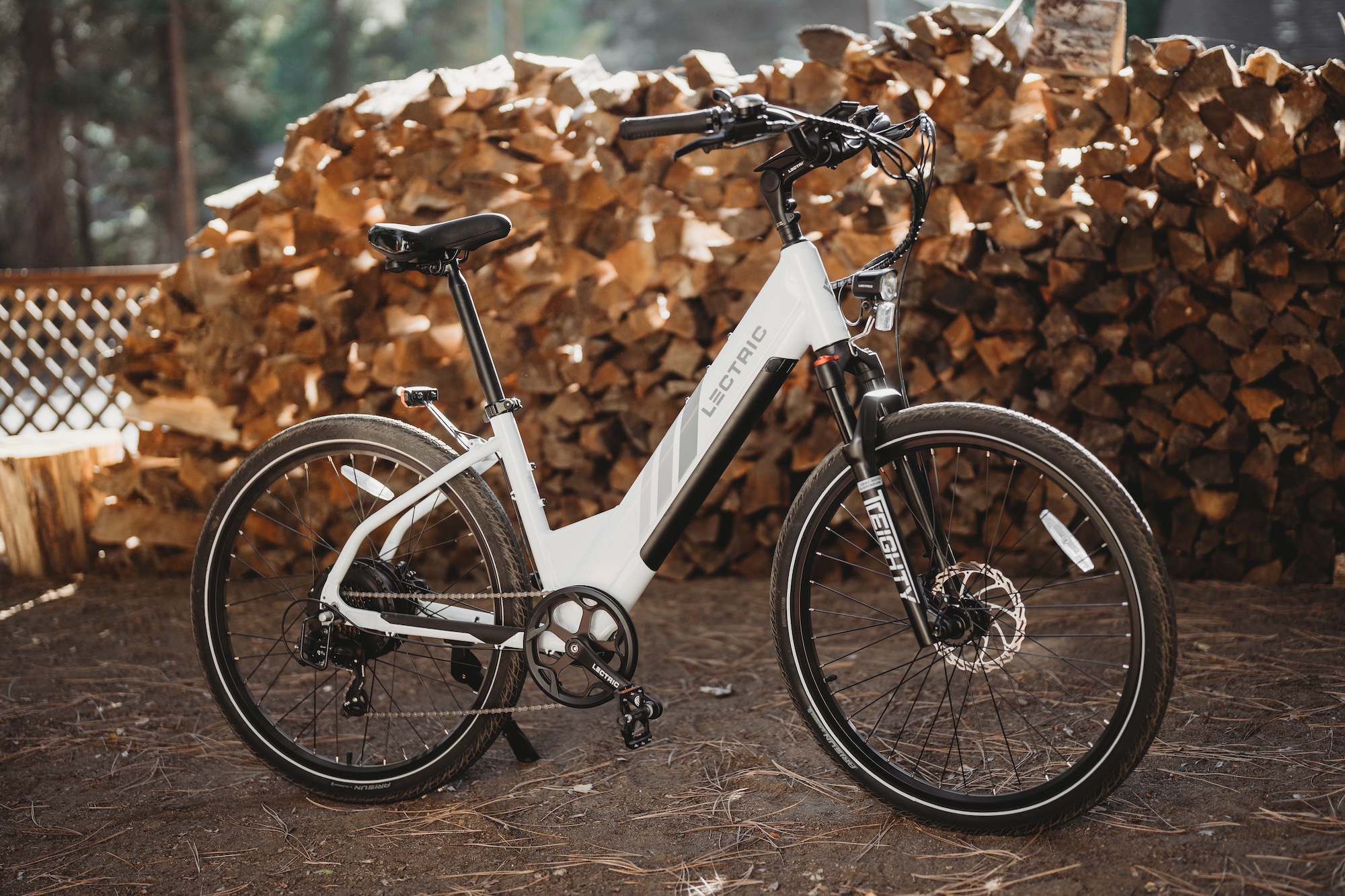
Budget
You don’t have to shell out the big bucks for the fanciest bike on the market. There are plenty of affordable commuter bikes that are perfectly functional and easy on the wallet. This is especially true of budget-friendly non-electric bikes, which can typically be purchased for between $500 and $800. While simple in design, the Electra Loft 7D is a classic-looking urban bike that has a basic seven-speed drivetrain, rim brakes, and even comes with front and rear fenders. There’s nothing standout about its performance, but it works well enough to get around town.
When it comes to electric bikes, the price automatically jumps up with the inclusion of a motor, battery, and controls. Still, you can find a solid electric bike with pedal assistance and a throttle to whisk you along with less effort than a non-electric bike.
A good budget-oriented electric commuter will typically set you back in the neighborhood of $1,000 to $1,500. Nearly every e-bike in this price category will come with a rear hub motor, and while they work well enough, they don’t feel quite as smooth or refined as more expensive options.
Take the Lectric XPress 750 ($1,300), for example. It comes with a sizeable 672 Wh battery and a powerful 750-watt rear hub motor that has no problem pushing speeds up to 28 mph. It also comes with a functional but relatively basic build that gets the job done. And, if you don’t need that much power or want to spend that much money, Lectric sells a base model with a 500W motor and slightly smaller battery for just $999.
Mid-Tier
Like the budget category, the mid-tier means different things for electric and non-electric models. Regardless, when we climb up a price rung, we start to see nicer components and special features, like the ability to fold, that drive the price a little higher. For the electric models, we see better motor systems, more advanced sensors, and a generally improved integration and performance of the e-bike components.
On the non-electric side, the Tern Node D7i ($1,199) is a folding model that scores very high marks for its portability and storability while still performing well in its primary function of being a commuter bike. With 24-inch wheels, it handles better than most folding models with smaller hoops while still folding down to a compact size for storage and transport.
It comes with a low-maintenance 7-speed internal hub drivetrain, fenders, a rear rack, and lights that run off the power of the bike’s dynamo hubs. If you’re looking for a non-electric folding bike, the Tern Node D7i is a great value.
The same goes for the Eaglebear Black Everyday ($1,300). This bike is super versatile for paved surfaces, gravel roads, and smooth dirt trails, and is just as good for commuting as it riding for fun and fitness. It’s got reliable components that are better than you find on budget models. It makes a strong argument for being the only bike most people need.
Similar to the budget models, when you add all the electric components, the mid-tier electric commuter bikes cost a fair amount more than their non-electric counterparts. That said, when you break the $2,000 mark, you can typically expect higher-quality motors with better sensors that provide a more natural feeling of power delivery, along with better components and the full suite of useful commute-friendly features.
The Rad Power Radster Road ($2,199) gets our nod for the best value. The 750-watt rear hub motor has heaps of power along with improved torque sensors to provide power assistance that is very close to the feel of mid-drive systems. The 720 Wh battery provides ample range, while fenders, lights, a rear rack, and excellent controls make this bike as user-friendly and well-equipped as they come.
Another standout in the mid-tier is the Ride1Up Prodigy V2 ($2,395). This is one of the most affordable mid-drive bikes we’ve ever seen, and it provides a ride experience that is nearly on par with much more expensive bikes. With quality components, all the included features, and knobby tires, it’s our pick for commuters who might dabble with smoother unpaved surfaces from time to time.
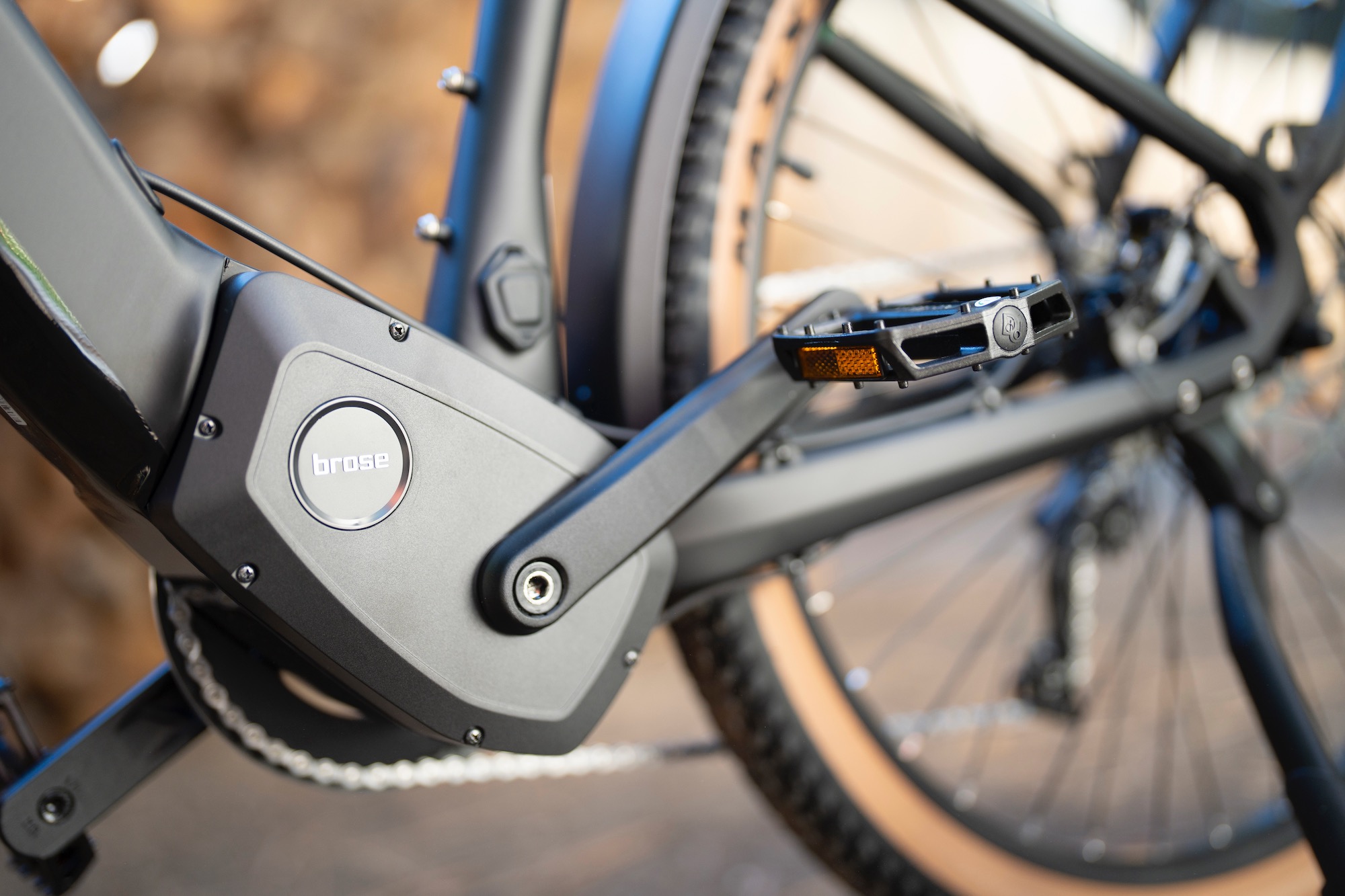
Premium
For non-electric bikes, we think that just about any bike above the $2,000 mark is in the premium price tier. This is cycling, of course, so the sky is the limit, and you can easily spend upward of $5K on a tricked-out commuter bike. That said, the Priority 600 All-Road ($2,499) is pretty much perfect, and we’d argue that you don’t need to spend any more than that.
With classic looks, a sturdy aluminum frame, and a quality build that includes a 12-speed Pinion gearbox with a Gates Carbon Drive belt, you’ve got virtually no maintenance to think about. This bike can handle just about any surface, works reliably, and includes niceties like front and rear fenders and dynamo-powered lights that you’ll never need to charge.
For electric bikes, anything above $3,000 could be considered high-end. Still, with bikes like the Specialized Turbo Vado SL 6 ($6,500), that leaves a pretty huge spread. In the premium category, most electric bikes include quality mid-drive motors that provide the most natural pedal assistance, along with excellent components that drive up the price. The e-bike components are typically very well integrated, and the bikes have a premium look, handling, and overall feel.
Our favorite electric commuter overall is the Trek Allant+ 7S Gen 2 ($3,500), which tops our charts for its excellent Bosch mid-drive motor, stellar build, and impressively well-rounded performance. With 27.5-inch wheels, plump tires, and a suspension fork, you’ll get places quickly, comfortably, and confidently, too.
So what does spending $3K more for the Turbo Vado get you? Mostly a significant reduction in weight. The carbon-framed Turbo Vado weighs roughly 20 pounds less than the Trek and has a handling feel much more similar to a non-electric bike but with the benefit of pedal assistance.
Frequently Asked Questions
There are lots of high-quality commuter bike brands to choose from. Some of the big-name brands that are well-known and reputable include Trek, Surly, Rad Power, and Aventon.
Instead of the brand, try to focus on what your needs are as a rider. The best commuter bike will suit where you ride, fit your budget and maintenance needs, and feel fun to pedal where you live and play.
The price of commuter bikes can vary a ton. On this list, we’ve considered value, quality, and pros and cons to compile the best options between $500 and $6,500.
Some bikes maintain an affordable price tag and still include high-quality features like disc brakes and front suspension. And, while even the budget options on this list will undoubtedly serve you better than no bike at all, we typically find that the more expensive models have components and features that work better and help to enhance our experience.
That said, determine your budget and go from there.
Consider the region where you’ll be riding your bike to and from work or around town. When the landscape is full of hills, you’ll want more gears or possibly a pedal-assist motor to help make the climbs easier.
If the terrain is smooth and you intend to carry gear on your bike, a rigid bike is a good choice for agility and stability. Rough topography — like potholes and chunky, deteriorating pavement — is handled well by front suspension and wider tires that help absorb the bumps and unevenness.
You’ll also need to determine a budget for your new bike. If you intend to carry items on the bike frame, look for a bike that comes with racks or has mount points for accessories so you can add racks and fenders to build it out how you need.
Some top-tier bikes have special features like the sealed, weatherproof, internally geared 12-speed Pinion gearbox on the PRIORITY 600 — but they come at a premium.
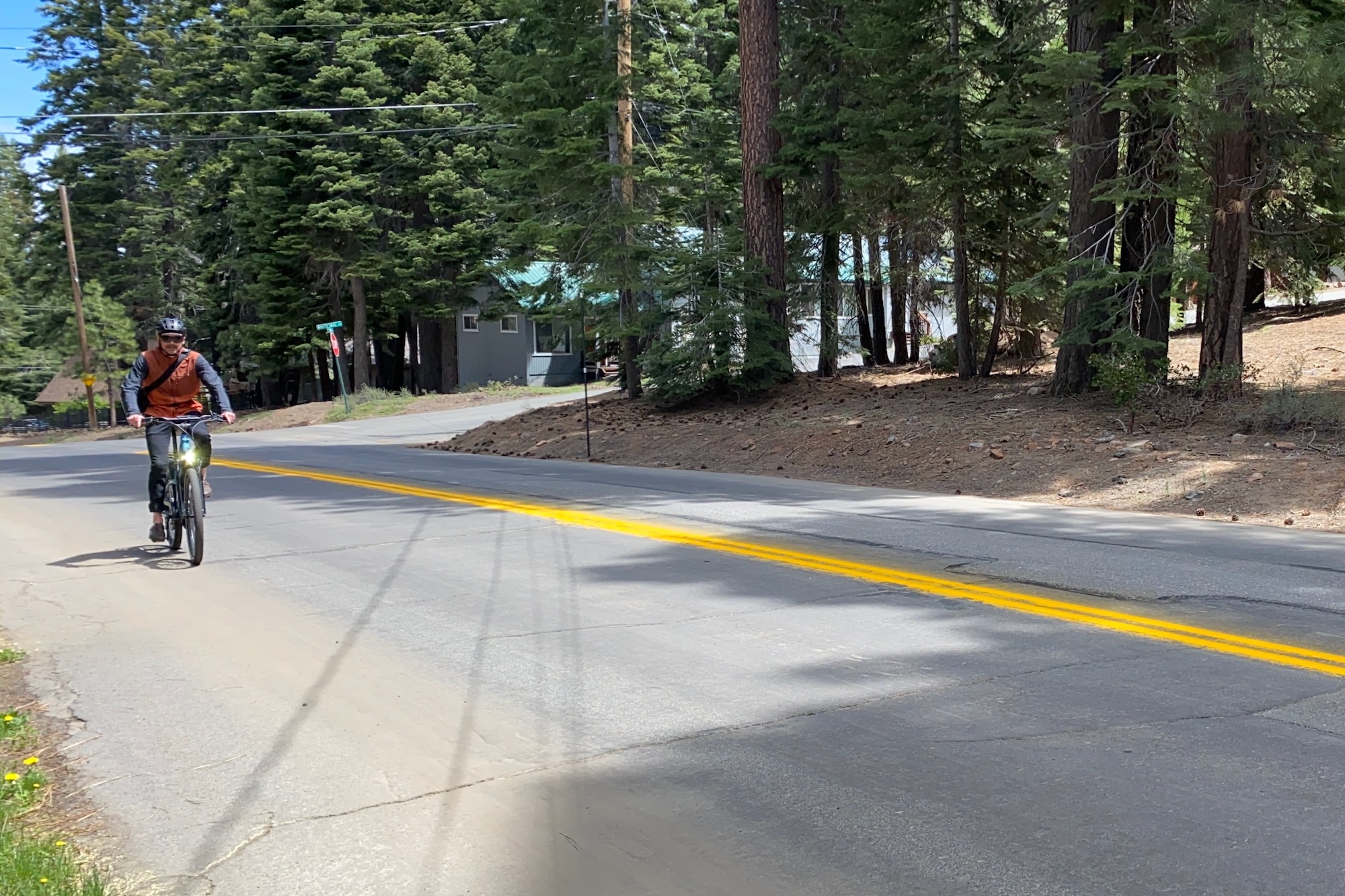
There are pros and cons to riding electric and non-electric bikes, and it really comes down to personal preference.
For many, commuting by bike is all about the human-powered experience of combining exercise and transportation. Depending on the length of the commute, one can effectively kill two birds with one stone and get your daily exercise on the way to and from work.
Not only are you saving money on fuel and vehicle expenses, but you’re also potentially saving time by not needing to do additional cardio outside of your daily rides. Non-electric bikes are lighter in weight, they don’t need to be charged, and they often cost less than similar bikes with motors and batteries.
For others, the exertion or time required to commute by bike may be a deterrent to doing it at all. If you want to speed up the commute, tackle hills with less effort, or show up to the office with less sweat, then an electric bike may be a better option. The pedal assistance can make it so you exert yourself less, ride faster, and sometimes even make it places more quickly than you would if you chose to drive a vehicle or take public transportation.
And, if you still want to get a workout, you can! By changing the level of pedaling support, you can choose how much of your own effort you need to use when riding.
Commuting by bike can be a fun and carefree experience, but there are several other items that you may want to consider for safety and carrying your gear. A quality bike helmet is arguably the most important piece of protective gear you can possibly wear while riding. There are lots of commuter bike helmets on the market, but mountain bike helmets and road bike helmets will also do the trick.
Being seen by motorists and other riders is also critical to your safety if riding on the road. Additionally, being able to see while riding before dawn or after sunset is a necessity. Some commuter bikes come with integrated lights. The Priority 600 has dynamo hub-powered lights that never need to be charged.
Similarly, most electric bikes, like the Rad Power Radster Road, Aventon Soltera.2, and Tern HSD P5i, come with integrated lights that run off the bike’s battery. Otherwise, you can purchase a set of aftermarket bike lights to add to any bike so you can see and be seen.
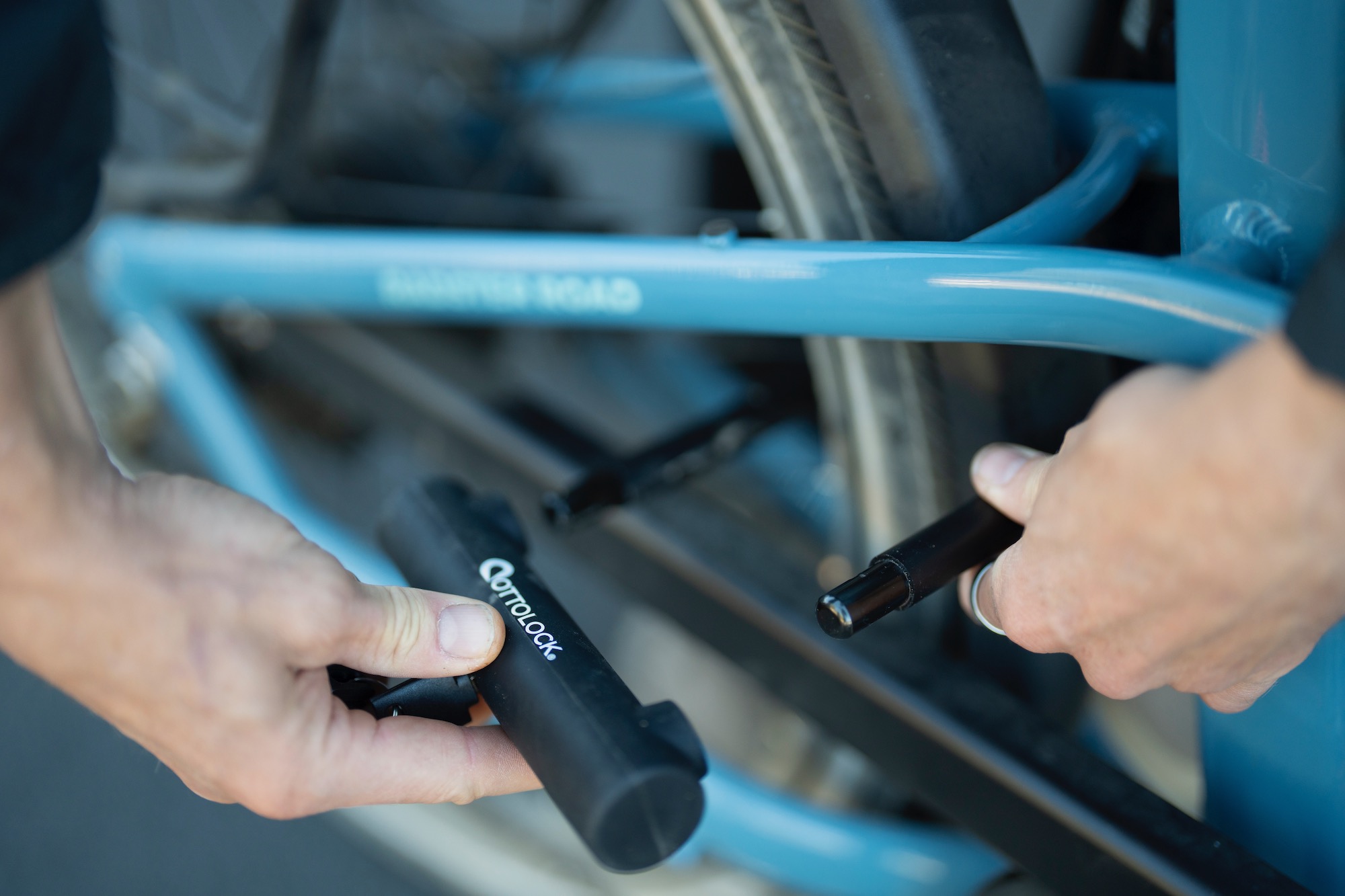
If you live in an area with variable weather or you are willing to commute in the rain, fenders can be a huge benefit. Fenders reduce the amount of spray coming from the tires that hit you while you ride and can help keep you from showing up to work with soggy pants and shoes. Many commuter bikes come with fenders included, but if not, they can typically be added on after the fact.
Carrying items like laptops or extra clothing to work may also be necessary, so finding a good messenger bag or quality laptop backpack may be incredibly helpful. If you’d rather carry items on your bike, then consider a model that comes with a rear rack or has mount points to add one.
This gives you the option to add a basket, panniers, or other accessories to customize it to your cargo-carrying needs. If you really need to haul some gear, there’s a huge number of excellent electric cargo bikes on the market that can haul everything from kids to groceries and more.
Let’s not forget that bikes can be expensive and are often the target of thieves. Having your bike stolen is particularly inconvient if you rely on it fro transportation. We always recommend carrying and using a quality bike lock with you to help protect your investment.
Related Content
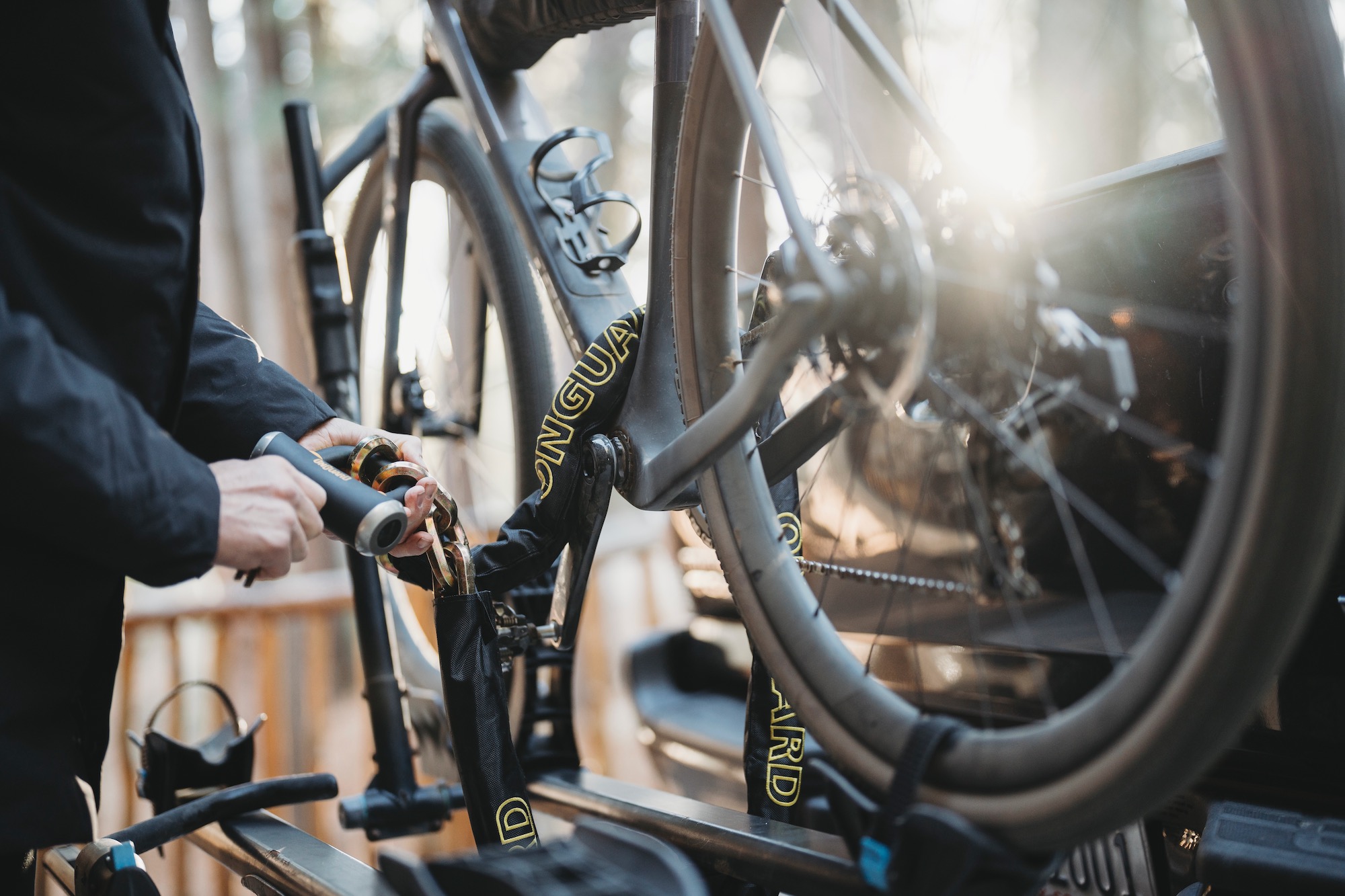
The Best Bike Locks of 2025-2026
We tested 18 bike locks from top brands like OnGuard, Kryptonite, Hiplok, LITELOK, and more to find the best.

The Best Bike Pumps of 2025
We tested 16 models from top brands like ToPeak, Blackburn, Silca, Bontrager, and more to find the best bike pumps.
